



This volume was published in July 2023 by Oxygene Ltd. OTWO Issue 48
4





This volume was published in July 2023 by Oxygene Ltd. OTWO Issue 48
4
Ayúdanos a conseguirlo. Apúntate al Movimiento OTWO Help us achieve it.
www.otwomag.com
Oxygene Ltd.Business Centre.
19 George´s Lane. GX11 1AA, Gibraltar Tel. +00350 54001271
www.oxygenecommunications.com
© Publishing: Oxygene Ltd.
Vanessa Byrne Managing & Commercial Director
Juanjo Trujillo
Creative Director & Chief Designer
Margaryta Haiduk Marketing and Sales Manager
Paula Mateos Social Media Manager
Photographer: The Nautilus Project, Pepe Villalba, Verdemar, Ángel Torrado, Juan Luis Yáñez Montaño, Cesvima, Santiago Urueña Pascual, OTWO Team, Pexels, Anthony Pitaluga, Raquel Collante, EBikes.
Cover photo: Kristina Paukshtite. Back cover photo: Lukas.
All rights reserved. No part of this publication may be reproduced, stored in a retrieval system or transmitted in any form or by any means, electronic, mechanical, photocopying, recording or otherwise, without the prior permission in writing from the publishers.
All rights reserved. ISSN 2633-7401
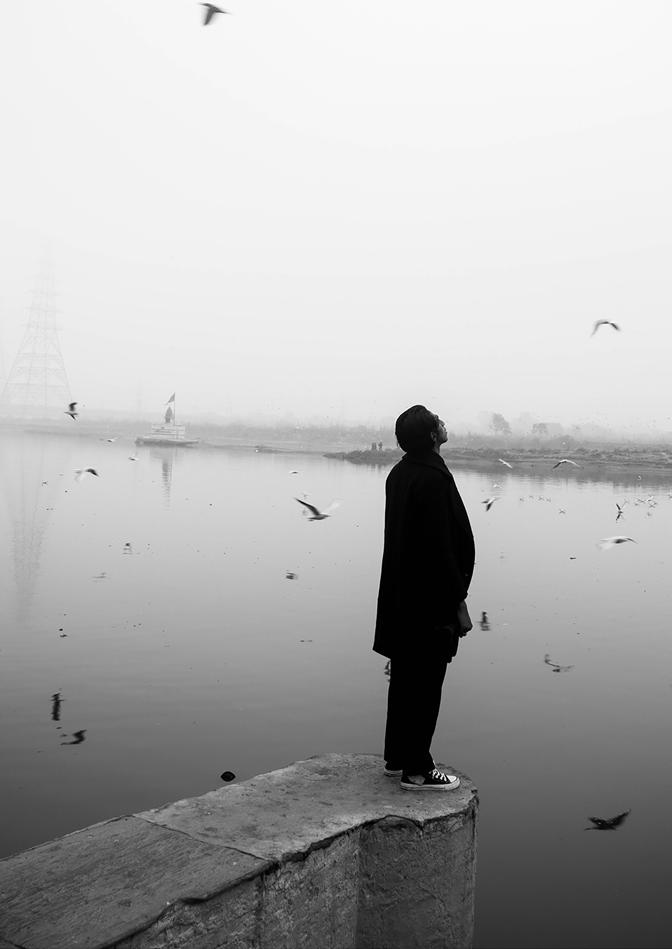

26 DAhabiTAt
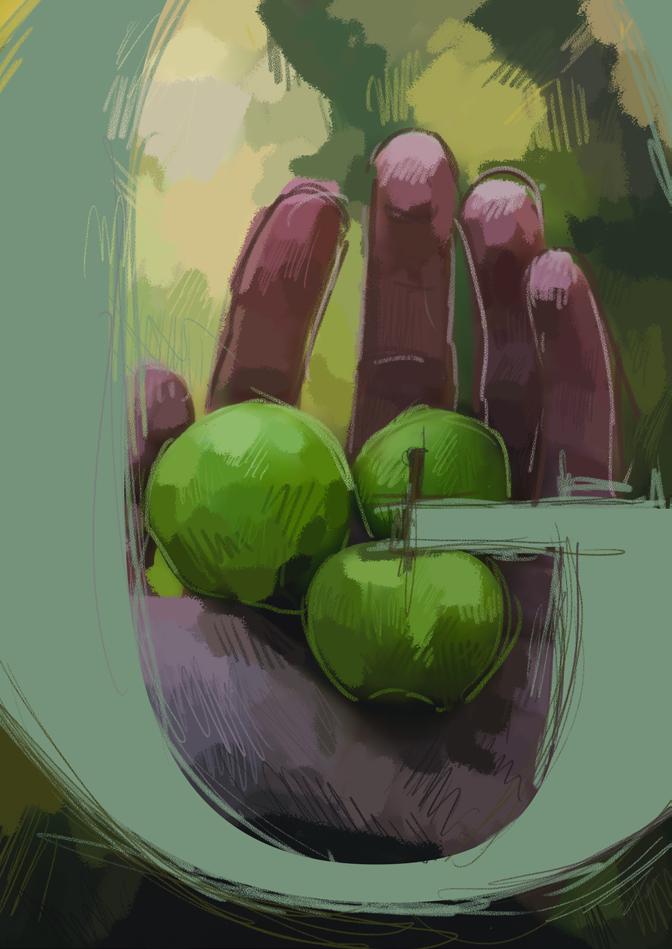
A big, warm, and sunny welcome to our July 2023 edition. Phew, is it me, or is it getting warm out there…
June has been a busy month indeed. Green Week Gibraltar was such fun! We are still recovering from the hype and excitement that was World Environment Day 2023 celebrations! We are so very proud to have been able to organize such an incredible event for you all to enjoy, from markets, to dance shows, to food stalls, to live music, it was an incredible weekend all round. We enjoyed it so much that we couldn’t wait to share this all with you in this incredible Green Week Gibraltar Special edition!
The weekend was full of entertainment and education with talks in so many different areas in environmental awareness. From topics like rewilding, decarbonization of Gibraltar, to cycling activists promoting sustainable transport with EuroVelo. We are so honoured to have been able to bring these most important people to the forefront and share these important areas to the public.
change indeed.
An incredible amount of gratitude to all who participated and joined our event. Check out from page 51 to page 123 the incredible journey that was our Green Week Gibraltar.
Plans for the OTWO team now that the Green Week is done for the year, well we are focusing on closing off our sustainable transport promotion in our local bus advertisements. Yes, you will be seeing new adverts at the back of the buses coming out soon! This year we thought to go full throttle, after all, transport accounts for 20% of fossil fuel emissions in Gibraltar, therefore it is essential to keep our traffic congestion low, the promotion of sustainable alternatives is a must. This year we are going for a total of 3 buses – our message will be clear; Walk the City, Cycle the City and Share the City; Our World, Our Responsibility. Keep your eyes peeled for these designs coming out soon.
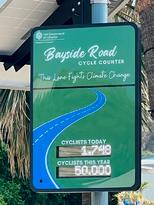
The cherry on the top of the weekend must be that incredible view of so many cyclists taking to the road on Saturday morning in support of World Bicycle Day and the opening of those long-awaited cycle lanes in Gibraltar. It was so freshening to see so many smiling faces all around, enjoying a calm road with the added safety of the police escort.
Finally, we are seeing progress in sustainable transport infrastructure. As it turns out, whilst writing this editorial, the cycle counter placed at the cycle lanes has hit 50,000 cyclists. This means its 50,000 in a month as the cycle lanes have only been active since the beginning of June. Much needed
Our 2nd Eco Festival is also coming soon in September!! I know you all enjoyed last year’s festival, pool activities, markets, and sunshine, with good vibes all round. Keep your eyes peeled for more information coming out very soon on this and if you want to get involved pop me an email at otwomagazine@gmail. com.
We cannot be more grateful for all the support we are receiving throughout our journey from all our collaborators and partners to our readers. Together we will win the fight against climate change and build a better world for our future generations. There is no doubt.
Peace and Love always.
V x
Una cálida y soleada bienvenida a nuestra edición de julio de 2023. Uf, ¿soy yo o empieza a hacer calor ahí fuera...?
Junio ha sido un mes muy ajetreado. La Semana Verde de Gibraltar fue muy divertida. Todavía nos estamos recuperando del alboroto y la emoción de las celebraciones del Día Mundial del Medio Ambiente 2023. Estamos muy orgullosos de haber sido capaces de organizar un evento tan increíble para que todos disfruten, del mercadillo, de los espectáculos de baile, los puestos de comida, la música en vivo, fue todo un fin de semana increíble. Lo disfrutamos tanto que no podíamos esperar a compartirlo con ustedes en esta increíble edición especial de la Semana Verde de Gibraltar.
El fin de semana estuvo lleno de entretenimiento y educación con charlas en muchas áreas diferentes de la conciencia ambiental. Desde temas como el rewilding, la descarbonización de Gibraltar, hasta activistas ciclistas promoviendo el transporte sostenible con EuroVelo. Nos sentimos muy honrados de haber podido traer a estas personas tan importantes y compartir estas importantes áreas con el público.
La guinda del fin de semana debe ser la increíble vista de tantos ciclistas saliendo a la carretera el sábado por la mañana para apoyar el Día Mundial de la Bicicleta y la apertura de esos carriles bici tan esperados en Gibraltar. Fue muy refrescante ver tantas caras sonrientes por todas partes, disfrutando de una carretera tranquila con la seguridad añadida de la escolta policial.
Por último, estamos viendo avances en las infraestructuras de transporte sostenible. Resulta que, mientras escribía este editorial, el contador de bicicletas colocado en los carriles bici ha alcanzado los 50.000 ciclistas. Es decir, 50.000 en un mes, ya que los carriles bici sólo están activos desde principios de junio. Un cambio muy necesario.
Muchísima gratitud a todos los que participaron y se unieron a nuestro evento. Echa un vistazo desde la página 51 hasta la 123 al increíble viaje que fue nuestra Semana Verde de Gibraltar.
Planes para el equipo OTWO ahora que la Semana Verde ha terminado para el año, así que nos estamos centrando en el cierre de nuestra promoción de transporte sostenible en nuestros anuncios de autobuses locales. Sí, ¡pronto verás nuevos anuncios en la parte trasera de los autobuses! Este año hemos pensado ir a tope, después de todo, el transporte representa el 20% de las emisiones de combustibles fósiles en Gibraltar, por lo tanto es esencial mantener nuestra congestión de tráfico baja, la promoción de alternativas sostenibles es una necesidad. Este año optaremos por un total de 3 autobuses. Nuestro mensaje será claro: Camina por la ciudad, pedalea por la ciudad y comparte la ciudad; nuestro mundo, nuestra responsabilidad. Mantén los ojos bien abiertos para ver los diseños en breve.
En septiembre también se celebrará nuestro 2º Festival Ecológico. Sé que todos disfrutasteis del festival del año pasado, con actividades en la piscina, mercadillos y sol, con buenas vibraciones por doquier. Mantened los ojos bien abiertos para más información que saldrá muy pronto sobre esto y si quieres participar envíame un correo electrónico a otwomagazine@ gmail.com.
No podemos estar más agradecidos por todo el apoyo que estamos recibiendo a lo largo de nuestro viaje, desde todos nuestros colaboradores y socios hasta nuestros lectores. Juntos ganaremos la lucha contra el cambio climático y construiremos un mundo mejor para nuestras futuras generaciones. No hay duda.
Paz y Amor siempre. Muchos besos.
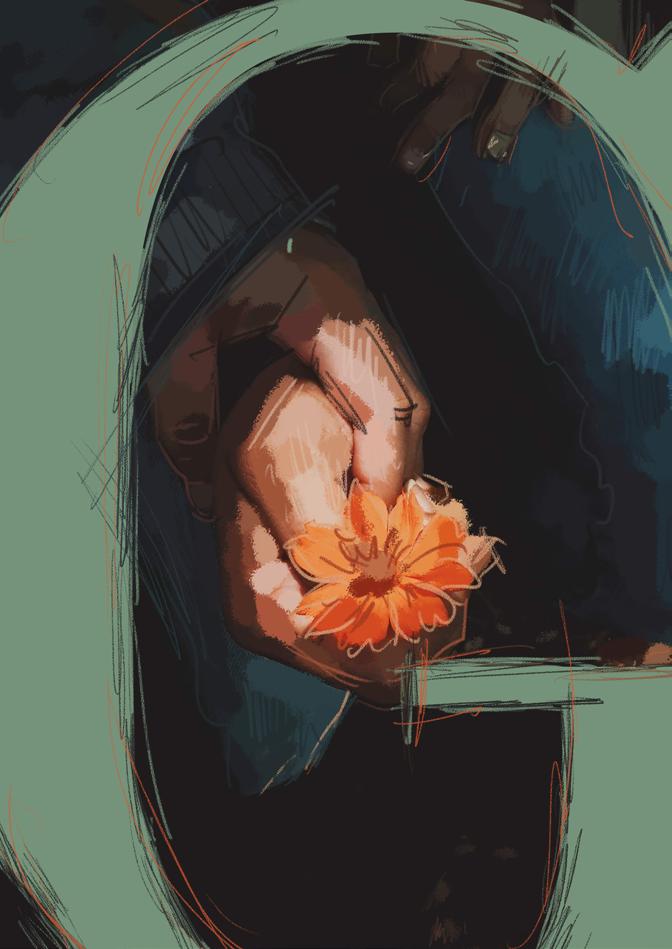
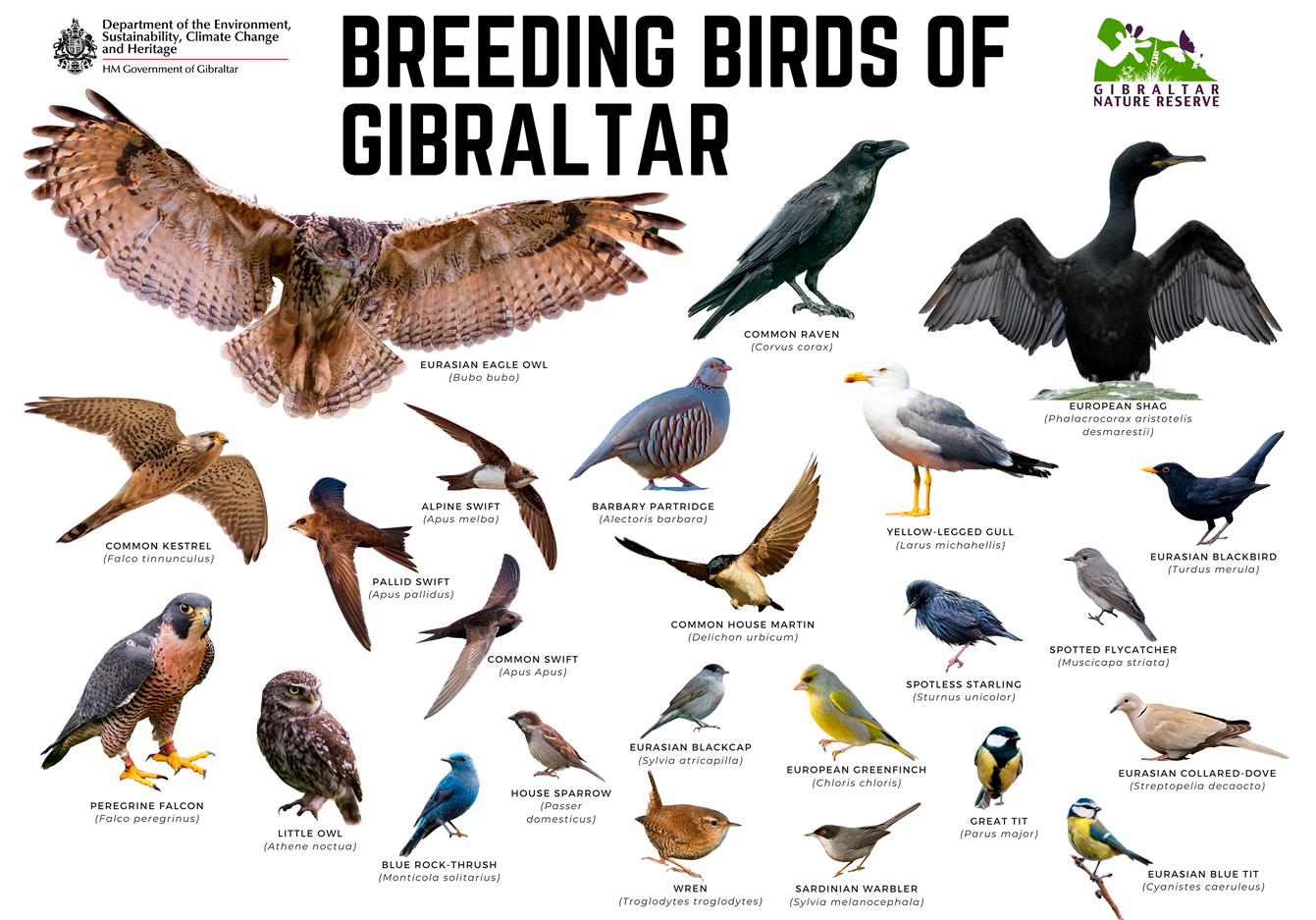
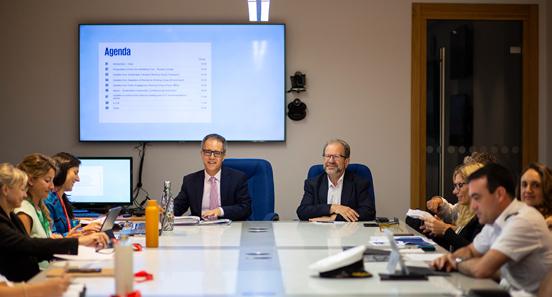
In June the Deputy Chief Minister Dr Joseph Garcia chaired the fourth meeting of the Net Zero Delivery Body at No 6 Convent Place. The meeting was attended by Minister for Environment John Cortes and Minister for Transport Paul Balban, as well as representatives and stakeholders from across Government departments, agencies, and authorities. The Net Zero Delivery Body is comprised of smaller working groups, each providing an update at the meeting to the wider board.
This group provided a virtual presentation to the board regarding energy consumption. This tool,
developed by the environmental consultancy group Ricard, enabled real-time comparators of the potential impacts of actions, policies and strategies using the projections of the Climate Change Strategy. As data is entered and measured against baseline data from 2019, the Government will be able to measure and evaluate impacts and guide future policymaking.
In Gibraltar, transport accounts for 20% of emissions from fossil fuels. The board received an update on the latest work in relation to the Active Transport Strategy, which aims to improve the experience of the pedestrian. The strategy also aims to introduce a core cycling network including parking and storage infrastructure to increase the equity of space for vehicular
traffic, pedestrians, and cyclists, including beautification projects such as those currently underway at Bayside Road.
Other initiatives under consideration are the introduction of Smart traffic lighting systems that could improve the steady flow of traffic and prevent static vehicle build-up, and the rolling out of Electric Vehicle charging infrastructure to improve local air quality. The Department of Transport are working closely with the Department of Education on introducing cycling awareness and safety education to the curriculum.
This workstream is currently focussed on the built environment and infrastructure but aims to include areas such as tourism and health in the future. The working group is revising the Gibraltar Development Plan to incorporate sustainable infrastructure into the development and planning process, for example the inclusion of greywater recycling for use in cleaning and maintenance. This working group involves the work of Technical Services to investigate issues that arise during heavy weather events, such as the recent rainfall that caused localised flooding. Key areas have been identified and works are ongoing to increase pipeline capacity that will alleviate these problems in the future.
Minister for the Environment, the Hon John Cortes, said: ‘The Net Zero targets for energy emissions are tangible and crucial Government policy, and it is important that this way of working is central to Government policymaking. The modelling tools that are being developed will allow policies and initiatives to be measured and evaluated for their climate change impact. If it goes unchecked, climate change will affect every aspect of our lives in Gibraltar and on this planet. It is, therefore, vital that the Government takes this holistic view of Net Zero and continues this important work to increase our climate change resilience, reduce our energy use and emissions, and implement viable, sustainable alternatives.’
The deputy Chief minister, the Hon Dr Joseph Garcia, said: ‘The work of the Net Zero Delivery Body is continuous and ongoing, through the diverse workstreams of its smaller working groups. This structure allows the Government to ensure that vary-
ing policies and initiatives retain climate change and the move towards Net Zero emissions targets as core objectives. In this way, the Government is maintaining a holistic, long-term approach to achieving the Net Zero targets and to climate change governance.’
En junio, el Dr. Joseph García, Viceministro Principal, presidió la cuarta reunión del Órgano de Cumplimiento de la Red Cero en el número 6 de Convent Place. A la reunión asistieron el Ministro de Medio Ambiente, John Cortes, y el Ministro de Transportes, Paul Balban, así como representantes y partes interesadas de todos los departamentos, organismos y autoridades gubernamentales. El Net Zero Delivery Body se compone de grupos de trabajo más pequeños, cada uno de los cuales presenta una actualización en la reunión a la junta general. Herramienta de modelización del consumo energético Net Zero
Este grupo hizo una presentación virtual al consejo sobre el consumo de energía. Esta herramienta, desarrollada por el grupo de consultoría medioambiental Ricard, permitía comparar en tiempo real el impacto potencial de las acciones, políticas y estrategias utilizando las proyecciones de la Estrategia de Cambio Climático. A medida que se introduzcan los datos y se comparen con los datos de referencia de 2019, el Gobierno podrá medir y evaluar los impactos y orientar la elaboración de futuras políticas.
Grupo de trabajo sobre transporte sostenible En Gibraltar, el transporte representa el 20% de las emisiones procedentes de combustibles fósiles. La Junta recibió información actualizada sobre los últimos trabajos en relación con la Estrategia de Transporte Activo, cuyo objetivo es mejorar la experiencia del peatón. La estrategia también pretende introducir una red ciclista central que incluya infraestructuras de aparcamiento y almacenamiento para aumentar la equidad del espacio para el tráfico rodado, los peatones y los ciclistas, incluyendo proyectos de embellecimiento como los que se están llevando a cabo actualmente en Bayside Road. Otras iniciativas que se están estudiando son la introducción de sistemas inteligentes de ilumina-
ción del tráfico que podrían mejorar la fluidez del tráfico y evitar la acumulación estática de vehículos, y el despliegue de infraestructuras de recarga de vehículos eléctricos para mejorar la calidad del aire local. El Ministerio de Transportes colabora estrechamente con el Ministerio de Educación en la introducción en los planes de estudios de la concienciación y la educación en materia de seguridad en el uso de la bicicleta.
Grupo de trabajo sobre adaptación y resistencia
Este grupo de trabajo se centra actualmente en el entorno construido y las infraestructuras, pero su objetivo es incluir áreas como el turismo y la salud en el futuro. El grupo de trabajo está revisando el Plan de Desarrollo de Gibraltar para incorporar infraestructuras sostenibles en el proceso de desarrollo y planificación, por ejemplo, la inclusión del reciclaje de aguas grises para su uso en limpieza y mantenimiento. Este grupo de trabajo incluye la labor de los Servicios Técnicos para investigar los problemas que surgen durante los fenómenos meteorológicos graves, como las recientes lluvias que provocaron inundaciones localizadas. Se han identificado zonas clave y se están realizando obras para aumentar la capacidad de las tuberías, lo que aliviará estos problemas en el futuro.
El Ministro de Medio Ambiente, John Cortes, ha declarado: «Los objetivos de Red Cero de emisiones energéticas son una política gubernamental tangible y crucial, y es importante que esta forma de trabajar ocupe un lugar central en la elaboración de las políticas del Gobierno. Las herramientas de modelización que se están desarrollando permitirán medir y evaluar el impacto de las políticas e iniciativas sobre el cambio climático. Si no se controla, el cambio climático afectará a todos los aspectos de nuestras vidas en Gibraltar y en este planeta. Por lo tanto, es vital que el Gobierno adopte esta visión holística de Net Zero y continúe esta importante labor para aumentar nuestra resistencia al cambio climático, reducir nuestro uso de energía y nuestras emisiones, y aplicar alternativas viables y sostenibles».
El viceministro principal, el honorable Dr. Joseph Garcia, ha declarado: «La labor del Organismo de Cumplimiento de la Red Cero es continua y permanente, a través de las diversas líneas de
trabajo de sus grupos de trabajo más pequeños. Esta estructura permite al Gobierno garantizar que las distintas políticas e iniciativas mantengan como objetivos centrales el cambio climático y el avance hacia los objetivos de emisiones Neto Cero. De este modo, el Gobierno mantiene un enfoque holístico y a largo plazo para alcanzar los objetivos Net Zero y la gobernanza del cambio climático».
TNP continued their World Oceans Day celebrations on Friday 3rd June at the Gibraltar Sports & Leisure Authority hosting an awards ceremony.
Bundle of Gib team ALASKO were the winners of the Gibraltar Chronicle; Best Presentation Award.
Young Enterprise Gibraltar received their accolades for their Sustainable Forward Thinking.
GSAC 888 Club divers, Robert Sheriff, Nicholas Barbara and Dennis Santos were awarded Marine Life Rescuers together with Lilly Estella, Ryan Yeo and Lyanne Valverde, their efforts rescuing marine wildlife are exemplary.
Duke Of Edinburgh Bronze participants who successfully completed their service were also recognized.
Lastly, Pacer Adventure Challenge Series medals were presented for endangered marine wildlife. Harry walked 10km in one stint completing the Dolphin Challenge whilst Samuel walked 15km for the Shark Challenge.
TNP would like to give their massive gratitude to Yolanda Pilkington from the Psychological Support Group for their generous £2000 donation and to the Duke of Edinburgh Award leaders Gaby Grech and Romany Vinent for presenting the awards together with our Nautilus Youth Leader Alexander. Well done all, your actions are inspirational
Proyecto Nautilus - Semana Azul
TNP continuó sus celebraciones del Día Mundial de los Océanos el viernes 3 de junio en la Autoridad Deportiva y de Ocio de Gibraltar, donde tuvo lugar una ceremonia de entrega de premios.
El equipo ALASKO de Bundle of Gib fue el ganador del premio a la mejor presentación del Gibraltar Chronicle.
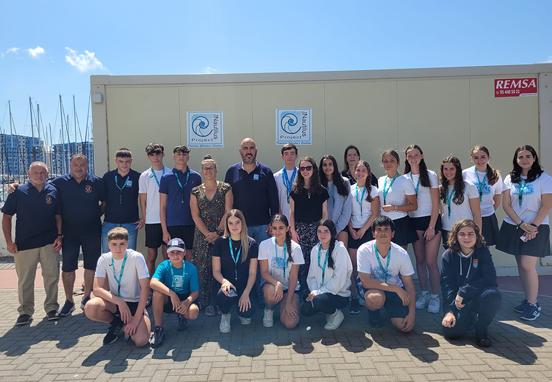
Young Enterprise Gibraltar recibió sus galardones por su Pensamiento de Futuro Sostenible. Los buceadores del GSAC 888 Club, Robert Sheriff, Nicholas Barbara y Dennis Santos fueron galardonados como Rescatadores de Vida Marina junto con Lilly Estella, Ryan Yeo y Lyanne Valverde, sus esfuerzos rescatando fauna marina son ejemplares.
También se reconoció a los participantes en el programa Duque de Edimburgo Bronce que completaron con éxito su servicio.
Por último, se entregaron medallas Pacer Adventure Challenge Series a la fauna marina en peligro de extinción. Harry recorrió 10 km en una sola etapa para completar el Desafío de los Delfines, mientras que Samuel recorrió 15 km para el Desafío de los Tiburones.
TNP gustaría dar su enorme gratitud a Yolanda Pilkington del Grupo de Apoyo Psicológico por su generosa donación de £ 2000 y para el Duque de Edimburgo Award líderes Gaby Grech y Vinent Romany para la presentación de los premios junto con nuestro Nautilus Líder Juvenil Alexander. Enhorabuena a todos, vuestras acciones son inspiradoras.
THE KENTISH PLOVER REACHES EVERY CORNER OF THE PROVINCE AND INAUGURATES AN EXHIBITION IN THE CULTURAL
The project called "Conservation of coastal habitats of the Cadiz-Strait Coast with presence of Kentish Plover (Charadrius alexandrinus)", with European Maritime and Fisheries funds through the Local Action Group Fisheries Cadiz-Strait and the Delegation of Fisheries and Aquaculture of the Junta de Andalucía, carried out by AGADEN-Ecologists in Action comes to an end, with the enormous satisfaction of having reached 2500 students from different schools and institutes of the province, more than 1000 beach users, more than 2500 visitors to the traveling exhibition, as well as different nautical and fishing groups whose work is developed in the coastal area, forming a network whose purpose is the protection of the Kentish Plover and its habitat. The numerous resources created during these months have allowed the creation of new tools to work on environmental
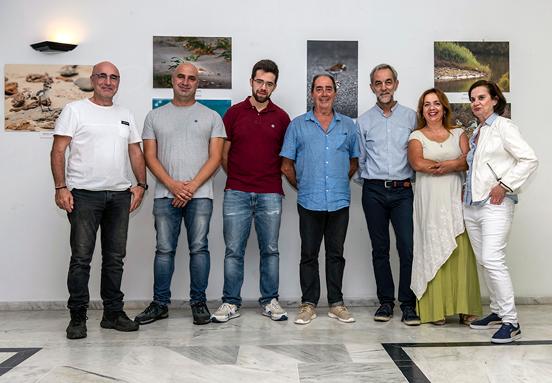
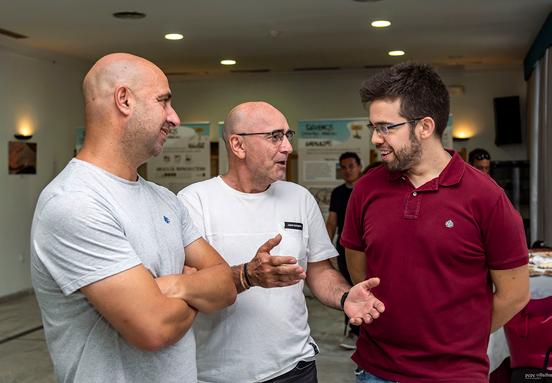
education, as well as visual elements to be placed on the beaches. Of particular note is the production of a booklet on the life of this small wader and new habitat posters to be placed in breeding areas, as well as dissemination posters that have been distributed throughout the different municipalities.
At the same time, the traveling exhibition currently on display in La Línea from June 6 to June 28, created within this project, which consists of more than 20 images and five roll ups, showing both the biology and the threat, as well as the enormous work of volunteers who are developing the monitoring of this species, has been exhibited in numerous municipalities, with a long waiting list of localities, as well as requests for exhibition in other provinces such as Seville, Granada and Almeria.
The main areas of habitat protection actions worked on during the project have been in the towns of Chiclana de la Frontera, Conil de la Frontera and La Linea, where the projects have been very well received and where it is hoped that these actions will favor the presence and breeding of the Kentish Plover. Although the subsidized project ends, and the field work will not begin until the next one, AGADEN-Ecologists in Action continues to work on environmental education and dissemination with visits to schools and taking the exhibition to different municipalities. The environmental organization reminds that anyone, even without knowledge of birds, can be a volunteer for "Save the Kentish Plover", just write to chorlitejopatinegro.sos.cadiz@gmail.com.
Finally thank the Ateneo Bahia del Campo de Gibraltar for their collaboration in making this project possible in La Linea and give visibility to this fragile bird in danger of extinction and the Cultural Union for offering its historic headquarters for the exhibition.
El chorlitejo patinegro llega a todos los rincones de la provincia e inaugura una exposicion en la union cultural deportiva linense
El proyecto denominado «Conservación de los hábitats costeros del Litoral Cádiz-Estrecho con presencia de Chorlitejo patinegro (Charadrius alexandrinus)», con fondos Europeos Marítimo y de Pesca a través del Grupo de Acción Local Pesquero Cádiz-Estrecho y la Delegación de Pesca y Acuicul-
tura de la Junta de Andalucía, llevado a cabo por AGADEN-Ecologistas en Acción llega a su fin, con la enorme satisfacción de haber llegado a 2500 alumnos y alumnas de diferentes colegios e institutos de la provincia, a más de 1000 usuarios de playa, más de 2500 visitantes de las exposición itinerante, así como a diferentes colectivos náuticos y pesqueros cuyo trabajo se desarrolla en el ámbito de la costa, formando una red de trabajo cuya finalidad es la protección del chorlitejo patinegro así como su hábitat. Los numerosos recursos creados durante estos meses han permitido originar herramientas nuevas para trabajar en educación ambiental, así como elementos visuales para colocar en las playas. Destacar la producción de un cuadernillo sobre la vida de esta pequeña ave limícola y nuevos carteles sobre el hábitat para colocar en zonas de cría, y carteles de difusión que han sido distribuidos por los diferentes municipios.
Al mismo tiempo, la exposición itinerante actualmente expuesta en La Línea desde el 6 de junio hasta el 28 de junio creada en el seno de este proyecto la cual consta de más de 20 imágenes y cinco roll ups, donde se muestra tanto la biología, como la amenaza, así como la enorme labor del voluntariado que están desarrollando el seguimiento de esta especie, se ha exhibido en numerosos municipios, teniendo una larga lista de espera de localidades, así como petición de exposición en otras provincias como Sevilla, Granada y Almería.
Las zonas principales de actuación de protección de hábitat trabajados durante el mismo han sido en las localidades de Chiclana de la Frontera, Conil de la Frontera y La Linea donde los proyectos han tenido gran acogida y donde se espera que con dichas actuaciones se favorezca la presencia y cría del chorlitejo patinegro. Aunque el proyecto subvencionado acaba, y hasta la próxima no comenzará con el trabajo de campo, desde AGADEN-Ecologistas en Acción se sigue trabajando la parte de Educación Ambiental y divulgación con las visitas a los centros educativos y llevando la exposición por distintos municipios. La organización ecologista recuerda que cualquier persona aun sin conocimiento de aves, puede ser voluntario/a de «Salvemos al chorlitejo patinegro», tan solo debe escribir a chorlitejopatinegro.sos.cadiz@gmail.com.
Por último agradecer a al Ateneo Bahia del Campo de Gibraltar su colaboración en hacer posible este proyecto en La Línea y dar visibilidad a esta frágil ave en peligro de extinción y a la Unión Cultural por ofrecernos su histórica sede para la exposición.
Activists from Verdemar Ecologistas en Acción have unfurled a banner on the dock of the CEPSA refinery in the Bay of Algeciras, calling for the cessation of the use of palm oil in its refinery for the manufacture of biofuels.
The sailing boat Diosa Maat of Ecologistas en Acción has traveled around the port of the CEPSA refinery carrying a banner with the slogan "If it is palm oil, it is not bio". They denounce that biodiesel made from palm oil is causing the deforestation of numerous tropical forests and, consequently, the disappearance of the orangutan and other species of
flora and fauna in these areas. Agribusiness - mainly soy, livestock and palm oil - is responsible for more than 80% of tropical deforestation in the world.
According to the environmentalist organization warns, in the period 2017-2019, CEPSA's biodiesel plant in San Roque (Cadiz) has consumed more than 250,000 Ton of palm vegetable oil and more than 100,000 Ton of soy vegetable oil.
Antonio Muñoz Secilla, member of Ecologists in Action, affirms that "in spite of all the scientific evidence, oil companies such as CEPSA continue to import large quantities of palm oil for the manufacture of fuels that they paint as green, without taking into account their serious environmental and social impacts".
Marta García Pallarés, coordinator of the biofuels campaign of Ecologistas en Acción, concludes: "With actions like today's we want to inform citizens of the dark reality behind fuels that are sold to us as clean. We also want to encourage them to support our demand to the Government for Spain to join the countries that have already decreed the abandonment of biofuels based on palm and soy. Spain has the opportunity to take a step forward by announcing

the immediate end of these raw materials in our warehouses".
On the web: https://www.ecologistasenaccion. org/293552.
Acción de protesta en una refinería de CEPSA: activistas piden el abandono del aceite de palma para biocombustibles Activistas de Verdemar Ecologistas en Acción han desplegado una pancarta en el pantalán de la refinería de CEPSA, en la Bahía de Algeciras, pidiendo el cese de la utilización del aceite de palma en su refinería para la fabricación de biocombustibles. El velero Diosa Maat de Ecologistas en Acción ha recorrido todo el puerto de la refinería de CEPSA portando una pancarta bajo el lema «Si es palma, no es bio». Denuncian que el biodiésel fabricado a partir de aceite de palma está provocando la deforestación de numerosos bosques tropicales y, en consecuencia, la desaparición del orangután y otras especies de flora y fauna de estas zonas. La agroindustria —principalmente la soja, la ganadería y la palma aceitera— es la causante de más del 80 % de la deforestación tropical en el mundo.
Según advierte la organización ecologista, en el período 2017-2019, la planta de biodiésel de CEPSA en San Roque (Cádiz) ha consumido más de 250.000 Ton de aceite vegetal de palma y más de 100.000 Ton de aceite vegetal de soja.
Antonio Muñoz Secilla, miembro de Ecologistas en Acción, afirma que «a pesar de todas las evidencias científicas, petroleras como CEPSA siguen importando grandes cantidades de aceite de palma para la fabricación de combustibles que pintan de verdes, sin tener en cuenta sus graves impactos ambientales y sociales».
Marta García Pallarés, coordinadora de la campaña de biocombustibles de Ecologistas en Acción, concluye: “Con acciones como la de hoy queremos informar a la ciudadanía de la oscura realidad detrás de unos combustibles que nos venden como limpios. También animarla a que apoye nuestra demanda al Gobierno para que España se sume a los países que ya han decretado el abandono de biocombustibles a base de palma y soja. España tiene la oportunidad de dar un paso al frente anunciando el fin inmediato de estas materias primas en nuestros depósito”.
En la web: https://www.ecologistasenaccion. org/293552
The local, digital and independent Seville radio station "Onda Capital" has been broadcasting since 2015 a varied and attractive media offer through 91.5 FM (Seville) and on the internet from www.ondacapital. es. Among its programming highlights "Living with achievements", a weekly appointment that will advise you on how to achieve the purposes of your life. But this space goes beyond traditional radio, transcending passive listening, with a passionate harangue for daily action. Its desire is to make this world a better place based on the experiences and achievements of the guests, who serve as inspiration to the listener.
Led by Angel Torrado, an entrepreneur with more than fifteen years of experience as a sales manager and activist for personal development with a solid background in coaching, leadership and emotional intelligence. It also has a versatile and effective team that expands its radio proposal with the sections "Living with leadership" and "Living activating your Kundalini" coordinated by Luis Perez and Anisa Fuente respectively.
Last Monday, June 5, Angel interviewed our creative director Juanjo Trujillo and talked about the problems of climate change, the need to develop an ecological conscience that defends the planet from this unbridled ultra-capitalist realism and how the appearance of our magazine OTWO is becoming a reference thanks to the efforts of everyone: collaborators, advertisers and of course our great team. Click to listen.
El podcast «Vivir con logros» le dedica un programa a OTWO Magazine entrevistando a nuestro director creativo Juanjo Trujillo.
La radio local, digital e independiente sevillana «Onda Capital» lleva desde 2015 emitiendo una oferta mediática variada y atractiva a través de la 91.5 FM (Sevilla) y en internet desde www.onda-
capital.es. Entre su programación destaca «Vivir con logros», una cita semanal que te aconsejará de como alcanzar los propósitos de tu vida. Pero este espacio va más allá de la radio tradicional, trascendiendo la escucha pasiva, con una pasional arenga por la acción cotidiana. Cuyo deseo es convertir este mundo en un lugar mejor a partir de las experiencias y de los logros de los invitados, que sirven como inspiración al oyente. Dirigido por Ángel Torrado, empresario con más de quince años de experiencia como gerente de ventas y activista para el desarrollo personal con una sólida formación en coaching, liderazgo e inteligencia emocional. Además cuenta con un
polivalente y eficaz equipo que amplía su propuesta radiofónica con las secciones «Vivir con liderazgo» y «Vivir activando tu Kundalini» coordinadas por Luis Pérez y Anisa Fuente respectivamente. El pasado lunes 5 de junio, Ángel entrevistó a nuestro director creativo Juanjo Trujillo y hablaron sobre los problemas del cambio climático, la necesidad de desarrollar una conciencia ecológica que defienda al planeta de este desbocado realismo ultra capitalista y como la aparición de nuestra revista OTWO se está convirtiendo en un referente gracias al esfuerzo de todos: colaboradores, anunciantes y por supuesto de nuestro genial equipo. Haz click para escucharlo.


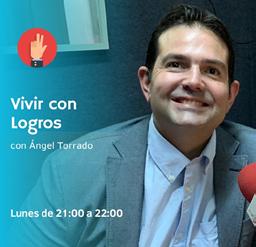
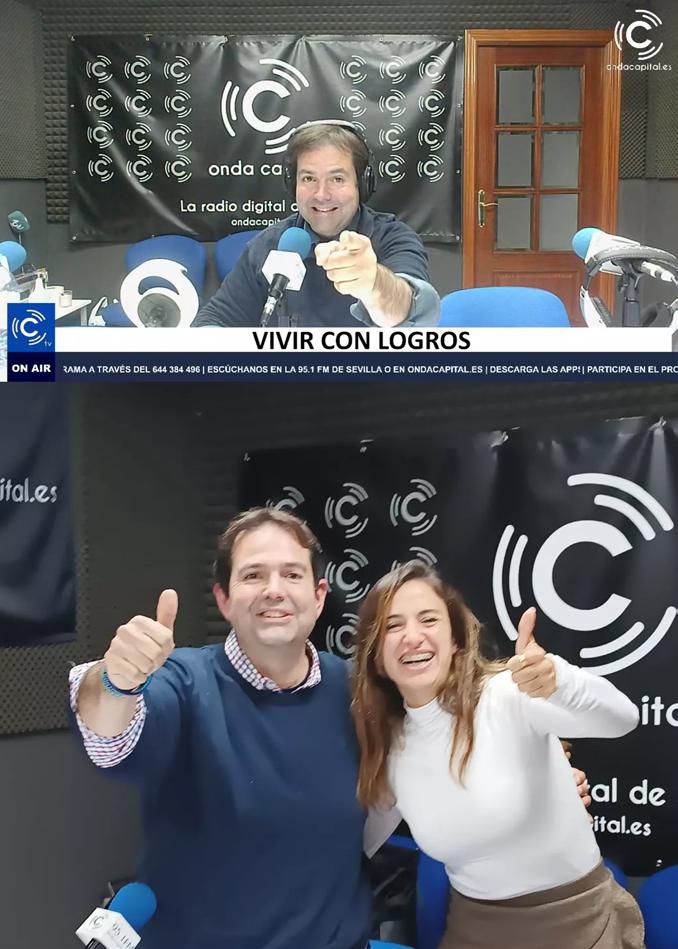
#reuse#savingourenviroment#sustainability#letsturnthisaround #recycle#greenchoice#earthmatters
Since 2015 we are very proud to say that Metalrok Ltd has been providing Gibraltar with a Recycling Service at the premises delivered by the government of Gibraltar Ecopark which is a joint public and private partnership located at 8 Flint Road. There has been an increase in Recycling but even so our daily waste stream contains goods which are perfectly suited to be reused not been recycled ending up in the landfill polluting the environment.
Together we can turn this around by reusing, preventing pollution, reducing usage of raw materials, sustaining the environment for future generations thus preventing them from ending in landfill and sea.
There is a need for these items in places like Senegal in West Africa were there are areas of extreme Poverty. with your cooperation we would like to meet their necessities by helping to provide them with donated unwanted items. At present we are only accepting donations for clothing and bedlinen.
We are collecting items that are still good for purpose and in usable condition in a bid to give them a new lease of life. Kindly take note that we will not make ourselves responsible for the collection of broken down items. The circumstances these people unfortunately live in deserve a sense of dignity and pride. Please only get in touch for items that will enhance and enrich their livelihoods.
Drop of points are:
Ecopark 8 Flint Road: every day from 8am to 8pm.
WATSAPP ONLY: No 00350 56003361

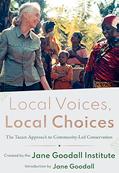
Local Voices, Local Choices: The Tacare Approach to Community-Led Conservation.
Jane Goodall Institute. No progress in environmental conservation is possible without a sense of collectivity. This is surely the most important legacy left to us by Jane Goodall.
She is best known for her work with chimpanzees and for her protection of natural resources.
This book tells the story of the empowerment of local communities in protecting what belongs to them. No one suffers better than they do from climate impact, biodiversity loss, or ethnic genocide. The concept "Tacare" takes its name
from a reforestation project that in this book acquires its full meaning. A local way of understanding the world.
Es imposible ningún avance en la conservación medioambiental sin el sentido de colectividad. Este es seguramente el legado más importante que nos dejó Jane Goodall.
Conocida sobre todo por sus trabajos con los chimpancés y por suprotección de los recursos naturales.
Este libro relata el empoderamiento de las comunidades locales en proteger lo que les pertenece. Nadie mejor que ellas sufren el impacto climático, la pérdida de la biodiversidad, o el genocidio étnico. El concepto «Tacare» toma el nombre de un proyecto de reforestación que en este libro adquiere todo su significado. Una manera local de entender el mundo.
Power Struggles:
Dignity, Value, and the Renewable Energy

Frontier in Spain.
Jaume Franquesa
Questioning the change of environmental paradigm is an action as urgent as it is hygienic. This is what this anthropologist from the University of Buffalo proposes, arguing that without knowing where we come from it is impossible to understand our current situation, in the same way that an energy transition is not possible without a change of system model.
For Jaume there is only one concept that is effective in solving the current problem: degrowth. Another lucid mind that is not afraid to name that which supranational corporations do not want to sleep over. This book reviews the political and economic history of the Spanish electricity sector. But it also raises a fierce criticism against the excessive development of wind power in a market dominated by large companies.
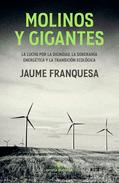
Molinos y gigantes.
Jaume Franquesa. Cuestionar el cambio de paradigma ambiental resulta una acción tan urgente como higiénica. Esto es lo que nos propone este antropólogo de la Universidad de Buffalo, argumentando que sin conocer de donde venimos es imposible entender nuestra situación actual, de la misma manera que no es posible una transición energética sin un cambio de modelo de sistema.
Para Jaume sólo existe un concepto que sea efectivo para solucionar el problema actual: el decrecimiento. Otro mente lúcida que no teme nombrar aquello que a las corporaciones supranacionales les quita el sueño. Este libro recoge un repaso por la historia política y económica del sector eléctrico español. Pero también enarbola una feroz crítica contra
el desmedido desarrollo de las eólicas en un mercado dominado por las grandes empresas.
Terra Mater.
Kantarama Gahigiri. This short film is a call for the world to take responsibility for the capitalism and colonialism that have caused so much environmental destruction in Africa. The trailer shows birds and people amidst piles of garbage and plastic, highlighting the magnitude of the problem.

Este cortometraje es un llamamiento para que el mundo se responsabilice del capitalismo y el colonialismo que han causado gran destrucción medioambiental en África. En el tráiler se ven pájaros y personas entre montones de basura y plástico, lo que pone de manifiesto la magnitud del problema.
Viera Cákanyová. Its experimental and subtly probabilistic approach makes it a denouncing reverie. The recognition of our technological executioners allows us to circumvent the disturbing frontier we have yet to cross. More than a reflection on the heart of the pandemic world, it aims to transcend the naïve vision of so many zombies on the loose. In time, Nick Cave sings a blues song - who cares what the future brings? The Eremocene is the present.
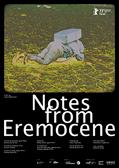
Su planteamiento experimental y sutilmente probabilístico lo convierte en una ensoñación en clave de denuncia. El reconocimiento de nuestros verdugos tecnológicos nos permite sortear la inquietante frontera que nos queda por cruzar. Más que una reflexión en el corazón del mundo pandémico pretende trascender la visión naif de tanto zombi suelto.
En el tiempo, Nick Cave canta una canción de blues. ¿A quién le importa lo que traiga el futuro? El Eremoceno es el presente.

Raw Meat: Biodiversity: why we need it and are losing it.
(Spanish)
Special dedicated to the IV edition of Uni Climática with the participation of Andreu Escrivá, journalist and PhD in biodiversity; Ana María Hernandez Salgar, director of the Intergovernmental Platform on Biodiversity and Ecosystem Services (IPBES); Azahara Palomeque, journalist and essayist who addresses the possible ways out towards sustainable development and Sandra Saura, CREAF researcher and professor of the Ecology Unit of the Autonomous University of Barcelona (UAB), as well as Magda Bandera, director and co-founder of La Marea.
You can listen to it by clicking here.
Carne Cruda: Biodiversidad: por qué la necesitamos y la estamos perdiendo. (Español).
Especial dedicado a la IV edición de Uni Climática en el que intervienen Andreu Escrivá, periodista y doctor en biodiversidad; Ana María Hernandez Salgar, directora de la Plataforma Intergubernamental sobre Biodiversidad y Servicios de los Ecosistemas (IPBES); Azahara Palomeque, periodista y ensayista que aborda las posibles salidas hacia un desarrollo sostenible y Sandra Saura, investigadora del CREAF y profesora titular de la unidad de Ecología de la Universidad Autónoma de Barcelona (UAB), además de Magda Bandera, directora y cofundadora de La Marea.
Puedes escucharlo pinchando aquí.
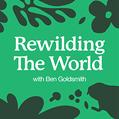
talks to the brightest minds in rewilding. Ben talks to Ties van der Hoeven, co-founder of The Weather Makers, who is working on probably the most exciting and ambitious rewilding idea you've ever heard of or Kristine Tompkins is founder of Tompkins Conservation and former CEO of outdoor clothing company Patagonia. Or answer the question of why Spain is breaking down man-made barriers in its rivers with Pao Fernandez Garrido. It doesn't get any better than this. listen to it.
Rewilding The World.
(Inglés), Este nuevo podcast del reconocido activista medioambiental Ben Goldsmith dialoga con las mentes más brillantes del rewilding.
Ben habla con Ties van der Hoeven, cofundador de The Weather Makers, que está trabajando en probablemente la idea de rewilding más emocionante y ambiciosa de la que hayas oído hablar o con Kristine Tompkins es fundadora de Tompkins Conservation y ex directora ejecutiva de la empresa de ropa al aire libre Patagonia. O responde a la pregunta de por qué España está
Events
Eventos
rompiendo las barreras hechas por el hombre en sus ríos con Pao Fernández Garrido. Imposible mejorarlo. Escúchalo Uni Climate 2023
July 3-9. Online.
There is no doubt that this is the largest online event on the climate crisis. More than 40 specialists from Spain, Europe, Latin America and the United States will participate in the fourth edition of Climática's educational space. On this occasion, they will address three thematic areas: biodiversity, energy transition, and health and inequality. In this edition we can highlight Francisco Loret, Professor of Ecology at the UAB and CREAF researcher who will give a masterclass on biodiversity and why it should matter to us, also noteworthy is a round table on energy transition with the participation of Mercedes Ballesteros, Director of the energy department of CIEMAT; Pedro Ramiro, PhD in Chemistry and coordinator of OMAL; and Hàjar El Mansouri, regulation technician at UNEF. In addition to the screening of the film "Rebellion", an online cultural talk
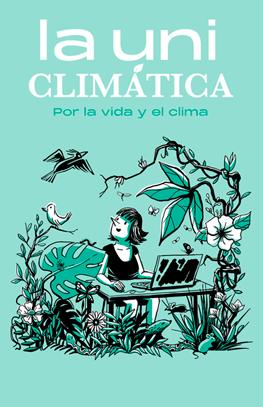


show and the awaited interview with Inger Andersen, the executive director of the United Nations Environment Programme (UNEP) have also been organized. Click here for more information.
Uni Climática 2023 3-9 Julio. Online. No cabe duda de que se trata del mayor evento online sobre la crisis climática. Más de 40 especialistas de España, Europa, América Latina y Estados Unidos participarán en la cuarta edición del espacio formativo de Climática. En esta ocasión, abordan tres ejes temáticos: biodiversidad, transición energética, y salud y desigualdad.
En esta edición podemos destacar a Francisco Loret, Catedrático de Ecología de la UAB e investigador del CREAF que impartirá una masterclass sobre la biodiversidad y por qué debe importarnos, también cabe destacar una mesa redonda sobre transición energética con las participaciones de Mercedes Ballesteros, Directora del departamento de energía del CIEMAT; Pedro Ramiro, Doctor en Ciencias Químicas y coordinador de OMAL; y Hàjar El
Mansouri, técnica de regulación en UNEF. Además de la proyección de la película «Rebellion», también se han organizados una tertulia cultural online y la esperada entrevista a Inger Andersen, la directora ejecutiva del Programa de las Naciones Unidas para el Medio Ambiente (PNUMA).
Pincha aquí para más información.
World Water Week. 20-24 August.
Stockholm Waterfront Congress Centre.
With the theme "Seeds of Change: Innovative Solutions for a World of Water" this event seeks to attract people from all over the world and from all sectors of society, as no one is unaffected by the current crisis of increasing risks.
And as the organizers say "it should usher in an era of innovation and rethinking related to the way we use, value and manage water. Most of our current systems are based on the assumption that there will always be a reliable supply of water, but that will no longer be the case. Ins-
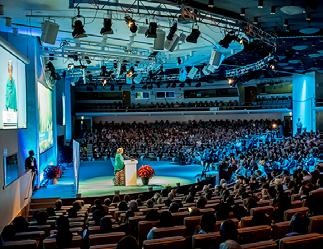
tead, we must prepare for a more unpredictable world with more frequent and severe droughts, floods and other weather extremes. Societies can limit many of these impacts by working with nature to strengthen the water cycle and increase the resilience of people and ecosystems."
Click here for more information.
Semana Mundial del Agua.
20-24 de agosto.
Centro de Congresos Stockholm Waterfront.
Con el tema Semillas de «Cambio: Soluciones Innovadoras para un Mundo de Agua» Este evento busca atraer a personas de todo el mundo y de todos los sectores de la sociedad, ya que nadie no se ve afectado por la actual crisis de riesgos cada vez mayores.
Y como dicen los organizadores «debería ser el comienzo a una era de innovación y replanteamiento relacionado con la forma en que usamos, valoramos y gestionamos el agua. La mayoría de nuestros sistemas actuales se basan en la suposición de que siempre habrá un suministro confiable de agua, pero ese ya no será el caso. En su lugar, debemos prepararnos para un mundo más impredecible con sequías, inundaciones y otros extremos climáticos más frecuentes y severos. Las sociedades pueden limitar muchos de estos impactos trabajando con la naturaleza para fortalecer el ciclo del agua y aumentar la resiliencia de las personas y los ecosistemas». Pincha aquí para más información.
Is it surprising that in the United States the answer to the question is so low? It is unfortunate that they are not interested in the subject. Nor is China, which is another main reason for our climate crisis. What does amaze me is the position of Mexico and Indonesia with a tie at 41 percent. Even more than those of Brazil and Italy, with some 45 and 44 percent at the top of the table. The conclusion reflected in the data that Statista gives us in its survey of 38 countries is frightening: Concern for the environment does not reach 50% in any of them.
¿Sorprende que en Estados Unidos la respuesta a la pregunta sea tan bajo? Queda claro que a ellos no les interesa el tema. Tampoco a China, otros de los grandes focos originarios del cambio climático. Lo que si me asombra es la posición de México e Indonesia con un empate en el 41 por ciento. Incluso más que las de Brasil e Italia, con unos 45 y 44 por ciento en lo más alto de la tabla. Asusta la conclusión que reflejan los datos que nos regala Statista en su encuesta realizada a 38 países: la preocupación por el medio ambiente no llega en ningunos de ellos al 50%.
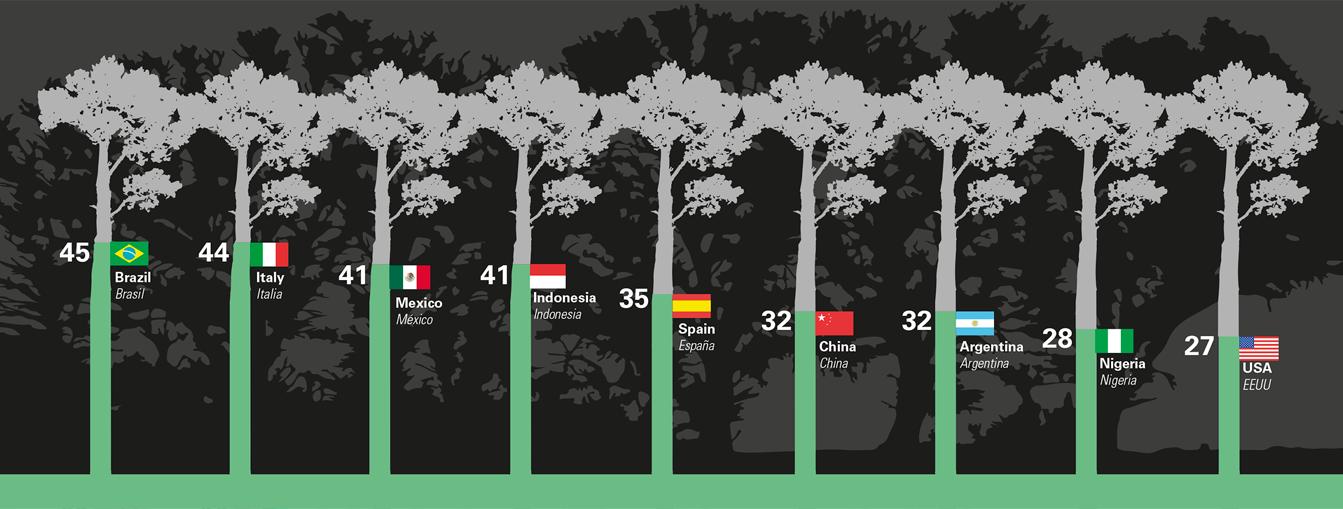
Source:Statista
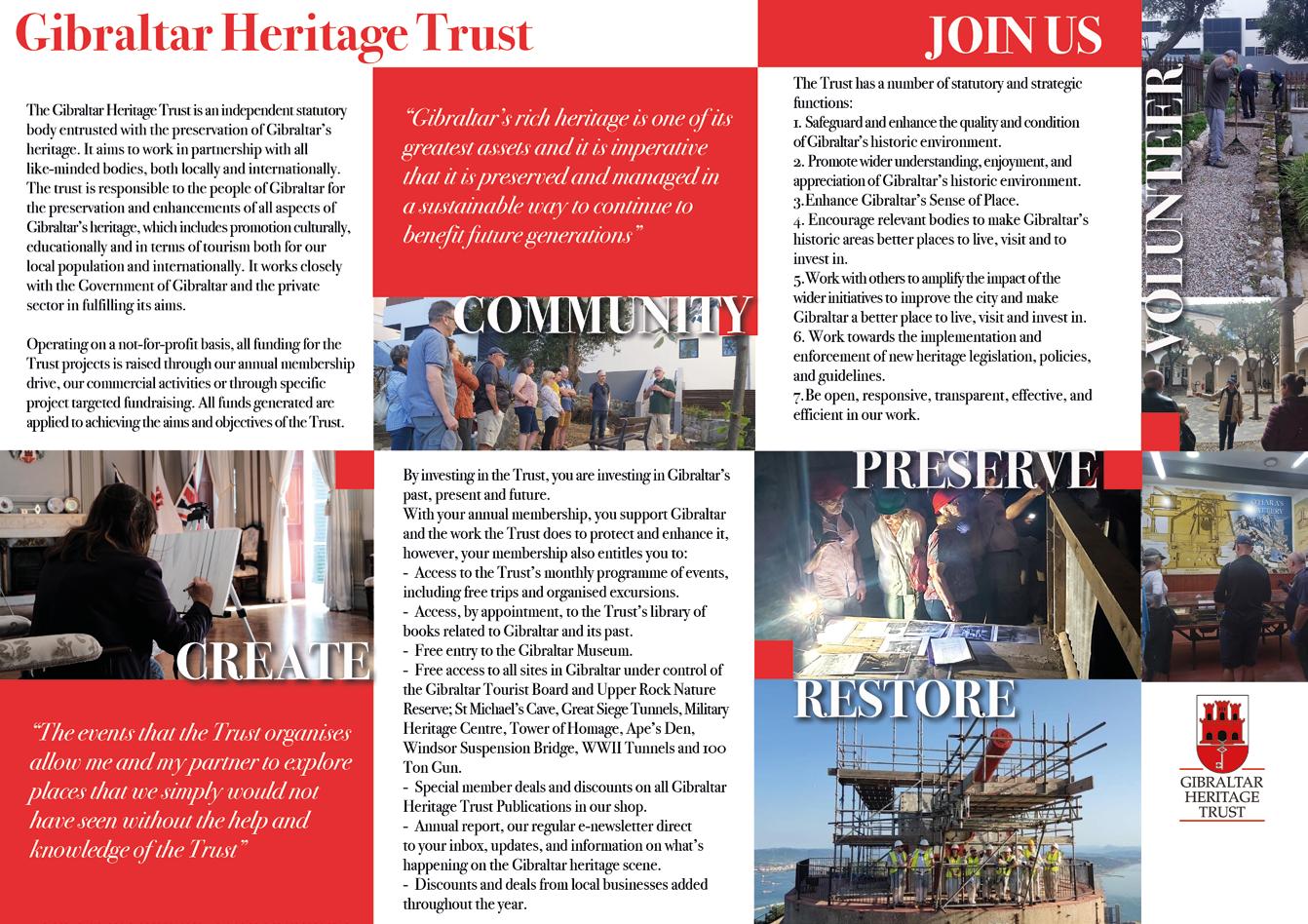
Estudio comparativo sobre la huella de carbono de las universidades españolas
Juan Luis Yáñez Montaño.
Juan Luis Yáñez Montaño. Graduate in Environmental Sciences. Master in Environmental Acoustic Engineering.
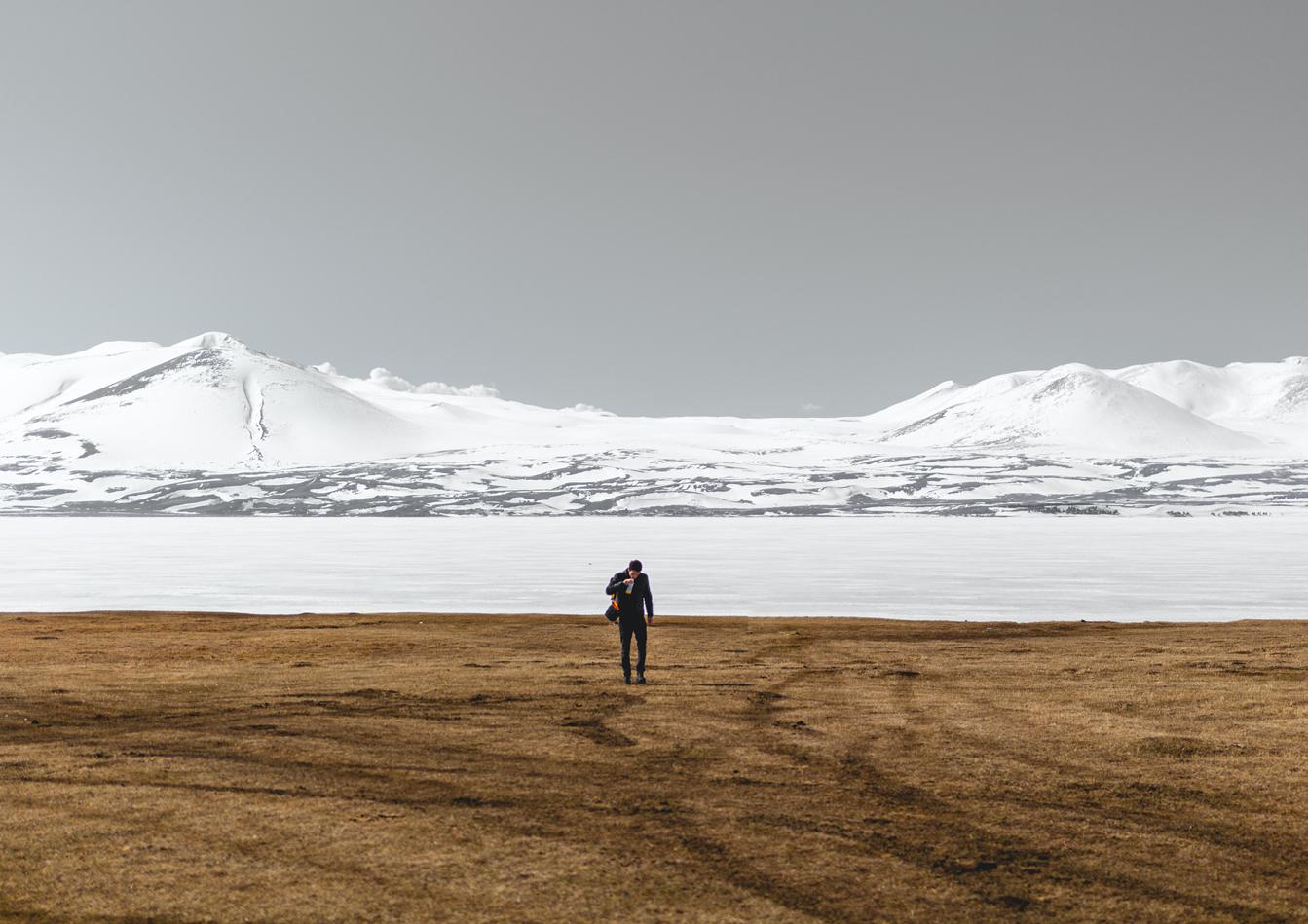
A simple but accurate definition of climate change would be: "the global variation of the Earth's climate" and that variation has both natural and anthropogenic causes.
It is now widely known by the scientific community that our model of energy production and consumption generates a major global climate disruption, causing impacts on the Earth and on economic and social systems.
According to the IPPC's Climate Change Synthesis report, it states that human action on the Earth's systems is clear and increasing, with impacts on continents and oceans being observed. Thus, if action is not taken soon, the probability of serious global and irreversible impacts on humans and ecosystems will increase.
We are responsible for our own actions and can therefore generate responses to combat impacts on socioeconomic sectors through planned adaptation to changes and mitigation of greenhouse gas (GHG) sources and sinks.
If no action is taken, the consequences are already known, such as more intense and prolonged
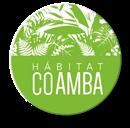
COAMBA is not the author of the published articles, but acts as an intermediary between the author who writes the article and the magazine.
COAMBA no es el autor de los artículos publicados, si no que actúa de intermediario entre la persona colegiada que escribe el artículo y la revista.
Una definición simple pero acertada sobre el cambio climático sería: «la variación global del clima de la Tierra» y esa variación tiene causas naturales y antropogénicas.
Actualmente se sabe de forma prácticamente generalizada por parte de la comunidad científica que nuestro modelo de producción y consumo energético genera una gran alteración climática global provocando como consecuencia impactos sobre la Tierra y los sistemas económicos y sociales.
Según el informe de Síntesis de Cambio Climático del IPPC, asegura que la actuación humana en los sistemas de la Tierra es clara y va incrementando, observando sus impactos en continentes y océanos. De forma que si no se actúa pronto aumentarán las probabilidades de graves impactos globales e irreversibles sobre los humanos y los ecosistemas.
Somos responsables de nuestros propios actos y por ello podemos generar respuestas para combatir los impactos en los sectores socioeconómicos mediante una adaptación planificada a los cambios y una mitigación sobre las fuentes y sumideros de gases de efectos invernaderos (GEI).
heat waves, reduction of river flows, droughts, desertification, etc., among many others.
Little by little, a turning point is occurring in society, which is acquiring a sense of responsibility for its actions and GHG emissions, so that more and more public and private institutions are taking an interest in the environment.
Due to the recent sustainable fashion of calculating the carbon footprint, doubts, questions and aspects to be improved arise, clearly showing the absence of analytical studies that include all the necessary data to compare carbon footprints and decide which is the most convenient in our organization.
The carbon footprint of an organization is the set of greenhouse gases (GHG) emitted into the atmosphere, produced by direct or indirect effect of an individual, organization, event or product. Public institutions (in this case universities) are demonstrating their commitment to the fight against climate change and for less than a decade have been voluntarily carrying out an inventory of GHG emissions (carbon footprint). Therefore, the objective of this laborious work is to compare the different carbon footprints of the Spanish universities that have made their calculations and are registered in the MITERD list (https://www.miteco.gob.es/es/cambio-climatico/temas/mitigacion-politicas-ymedidas/organizaciones-proyectos.aspx) as of 2022, thus facilitating the process of comparison of future studies.
For reasons of environmental concern, the Carbon Footprint (CF) arises as a tool to quantify and create an indicator of environmental impact generated by activities or processes on climate change and, despite having advertising origins, the truth is that today it is used as an environmental management tool to know the GHG produced directly or indirectly either by individuals, organizations or activities; taking as results values in terms of CO2 equivalent. In this way, it is possible to identify the individual behaviors that most favor climate change and how to combat them.
The CF is expressed in the following formula:
CARBON FOOTPRINT = ∑ (ACTIVITY DATA X EMISSION FACTOR)
En el caso de no actuar las consecuencias son ya conocidas tales como olas de calor más intensas y prolongadas, reducción de los caudales en los ríos, sequías, desertificación… entre muchas otras.
Poco a poco se va dando un punto de inflexión en la sociedad, la cual va adquiriendo sentido de la responsabilidad con sus actos y las emisiones de GEI, por lo que cada vez son más las instituciones públicas y privadas las que se interesan por el medio ambiente.
Debido a la reciente moda sostenible de calcular la HC surgen dudas, preguntas y aspectos a mejorar, mostrando claramente la ausencia de estudios analíticos que engloben todos los datos necesarios para comparar huellas de carbono y decidir cuál es la más conveniente en nuestra organización.
La huella de carbono de una organización es el conjunto de gases de efecto invernadero (GEI) emitidos a la atmósfera, producidos por efecto directo o indirecto de un individuo, organización, evento o producto. Las instituciones públicas (en este caso universidades) están poniendo de manifiesto su compromiso de lucha contra el cambio climático y desde hace menos de una década están realizando voluntariamente el inventario de emisiones de GEI (huella de carbono). Por ello, el objetivo de este laborioso trabajo es comparar las diferentes huellas de carbono realizadas en las universidades españolas que realizaron sus cálculos y estén inscritos al listado del MITERD (https://www.miteco.gob.es/es/ cambio-climatico/temas/mitigacion-politicas-y-medidas/organizaciones-proyectos.aspx) a fecha de 2022., consiguiendo así facilitar el proceso de comparación de futuros estudios.
Por motivos de preocupación ambiental la Huella de Carbono (HC) surge como herramienta para cuantificar y crear un indicador de impacto ambiental que generan actividades o procesos en el cambio climático y, a pesar de tener orígenes publicitarios, lo cierto es que a día de hoy se utiliza como herramienta de gestión ambiental para conocer los GEI producidos de manera directa o indirecta ya sea por personas, organizaciones o actividades; tomando como resultados valores en términos de CO2 equivalente. Pudiendo así identificar las conductas individuales que más favorecen al cambio climático y cómo combatirlas.
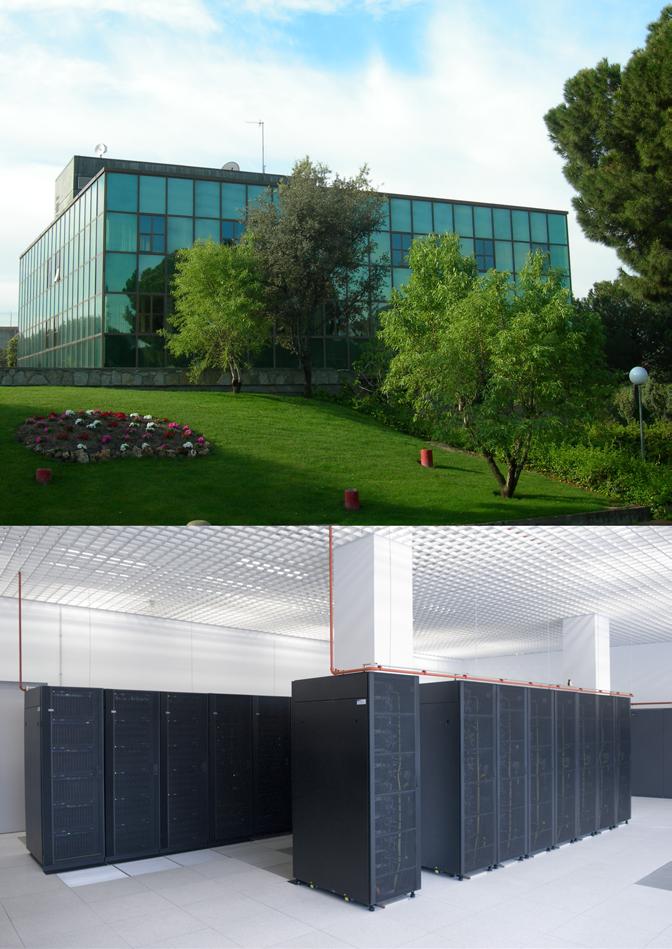
A company wants to calculate the emissions derived from the use of heating throughout the year 2017 whose operation is through a boiler of diesel oil. To do this, proceed as follows:
Una empresa quiere calcular las emisiones derivadas del uso de la calefacción a lo largo del año 2017 cuyo funcionamiento es a travesee una caldera de gasóleo. Para ello, procede de la siguiente manera:
Activity data: the company collects diesel bills from January to December 2017 and adds the consumption obtaining a value of 12,800 liters.
Diesel emission factor C: 2.868 kgCO/l.
Therefore, we have that the emissions for 2017 are:

Datos de la actividad: La empresa recaba las facturas de gasóleo de enero a diciembre de 2017 y suma los consumos obteniendo un valor de 12.800 litros.
Factor de emisión del gasóleo C: 2,868 Kg CO2/l. Por lo tanto, tenemos que las emisiones para 2017 son:
And the relative CF:
Emission factors are the amount of GHG emitted for each unit of the "activity data" parameter. And activity data are the parameters that delimit the degree of activity generating GHG emissions. It is also worth mentioning the scopes, which are a collection of consumption data (activity data) and are divided into 3 groups:
Scope 1 (direct emissions): It includes the consumption of fuels used in buildings such as natural gas or diesel in boilers. Leakage of refrigerant gases and finally fuel consumption of vehicles through transportation.
Scope 2 (indirect emissions): This scope is unique to electricity consumption.
Scope 3 (other indirect emissions): This scope is for organizations that want to go a step further with their CF calculation, in which business travel, services that have been outsourced, all product purchases, etc. are included.
Having achieved the CF registration seal, there are differences between organizations that have already had this seal for some years and organizations that are just starting out, reflecting the effort they are making against climate change.
The difference is centered between organizations that have calculated their CF and are starting to reduce their emissions and organizations that already reduce and/or offset, thus making it possible to identify in an annual period the 3 levels of participation:
1. Calculation of the CF.
2. Reduction of the CF
3. Compensation of the CF.
So the seal informs about the participation in the HC sections, differentiating if the footprint has been calculated and reduced or if in addition to the last
La HC viene recogida con la siguiente fórmula:
HUELLA DE CARBONO =
∑ (DATO ACTIVIDAD X FACTOR DE EMISIÓN)
Y la HC relativa:
HUELLA DE CARBONO / DATO ACTIVIDAD = HUELLA DE CARBONO RELATIVA
Los factores de emisión son la cantidad de GEI que se emite por cada unidad del parámetro “dato de actividad”. Y los datos de actividad son los parámetros que delimita el grado de actividad generadora de emisiones de GEI.
También cabe mencionar los alcances, que son una recopilación de los datos de consumo (datos de actividades) y que se dividen en 3 grupos:
Alcance 1 (emisiones directas): Se incluye el consumo de los combustibles usados en los edificios como gas natural o gasoil en las calderas. Fugas de gases refrigerantes y por último el consumo de combustible de los vehículos mediante el transporte.
Alcance 2 (emisiones indirectas): Este alcance es único para el consumo de electricidad.
Alcance 3 (otras emisiones indirectas): Este alcance es para organizaciones que quieran ir un paso más con el cálculo de su HC, en la cual se incluyen viajes de trabajo, servicios que han sido subcontratados, toda la compra de productos, etc.
Habiendo conseguido el sello del registro de la HC, existen diferencias entre las organizaciones que ya tienen este sello desde hace unos años y las organizaciones que están empezando, reflejando así el esfuerzo que hacen las mismas contra el cambio climático. La diferencia se centra entre las organizaciones que calcularon su HC y están empezando a reducir sus emisiones y las organizaciones que ya reducen y/o compensan, permitiendo así identificar en un periodo anual los 3 niveles de participación:
1. Cálculo de la HC.
two it has compensated and the period of time to which the participation corresponds.
This type of achievement serves as an incentive to take consistent action while reinforcing and improving the image of the university as an organization that is aware of the environment and the problems caused by climate change.
The methodology followed in this study has been very rigorous and has covered most of the time, this being the most important and most cumbersome part.
The classification of the information has been a key element, since within the CFs registered in the public database of the Ministry for Ecological Transition and the Demographic Challenge (MITERD), a total of 2499 registered organizations and 5931 carbon footprints are registered as of 2022.
The first filter applied is with respect to the type of sector in which we can find 21 different ones, in this case we are interested in selecting the education sector, reducing the number of CFs and 57 organizations to 184.
The next filter is to exclude everything outside the university category, finally obtaining 86 CFs and 16 organizations (or universities) on which the comparative study will be made.
˝this means that of all the carbon footprints that are registered in spain from all the different sectors, only 16 universities have their footprint registered with the ministry, the rest either do not meet the minimum requirements or do not wish to make such calculations˝.
The next step is grouped by data sets, starting with a general survey of all the carbon footprints of all the universities and in all the years they calculated them. They are then classified according to the type of label calculated, whether they have verified or not, the scopes they have worked on and the type of activity index used (Figure 1)
Consumption data (activity data) are generally always the same within each scope, although clearly indicating the data measured by each institution will provide much more concrete and concise data to know what factors can be worked on to reduce emissions (BOVEA, 2021).
In addition, it should be taken into account that
2. Reducción de la HC
3. Compensación de la HC.
De modo que el sello informa sobre la participación en las secciones de la HC, diferenciando si se ha calculado y reducido la huella o si además de las dos últimas ha compensado y el periodo de tiempo al que se corresponde la participación.
Este tipo de logro sirve de aliciente para tomar medidas de forma coherente a la par de reforzar y mejorar la imagen de la universidad como organización concienciada con el medio ambiente y los problemas que acarrea el cambio climático.
La metodología seguida por este estudio ha sido muy rigurosa y ha cubierto la mayor parte del tiempo, siendo esta la parte más importante y farragosa.
La clasificación de la información ha sido una pieza clave ya que dentro de las HC registradas en la base de datos pública del Ministerio para la Transición Ecológica y el Reto Demográfico (MITERD) se encuentran registradas a fecha 2022 un total de 2499 organizaciones inscritas y 5931 huellas de carbono.
El primer filtro aplicado es respecto al tipo de sector en el cual podemos encontrar 21 diferentes, en este caso interesa seleccionar el sector educación, reduciendo a 184 el número de HC y 57 organizaciones.
El siguiente filtro consiste en excluir todo lo que se encuentre fuera de la categoría universitaria, obteniendo finalmente 86 HC y 16 organizaciones (o universidades) sobre las que se hará el estudio comparativo.
«Esto quiere decir que de todas las huellas de carbono que son registradas en españa de todos los sectores diferentes, sólo 16 universidades tienen su huella registrada en el ministerio, el resto o no consiguen llegar a los requisitos mínimos o no desean realizar dichos cálculos».
El siguiente paso se agrupa por conjuntos de datos, empezando por un estudio general de todas las huellas de carbono de todas las universidades y en todos los años que la calcularon. A continuación, se clasifica en función del tipo de sello calculado, si han verificado o no, alcances que han trabajado y tipo de índice de actividad utilizado.
Los datos de consumo (datos de la actividad) generalmente son siempre los mismos dentro de cada

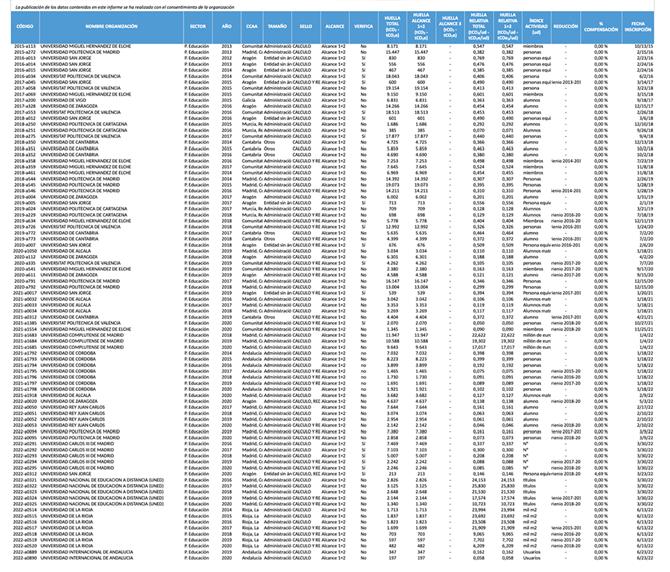
organization, with the seal of "calculate" being the minimum that all must have, "calculate and reduce" being an intermediate step and finally the greatest achievement being "calculate, reduce and compensate".
As we can see in Figure 2, we have a map of Spain in which it is represented by dots how the different carbon footprints are distributed, with their respective seals, made within each autonomous community, indicating with red color the seal of calculation, yellow color the seal I calculate and reduce and with green color the seal of calculation, reduce and compensate from the period from 2012 to 2020.
Having located all the universities and their re-
Con todo este proceso se obtiene la siguiente tabla ya ordenada y clasificada (Figure 1).
A continuación, se muestra un cartograma de la distribución de los distintos sellos conseguidos por cada universidad, para ello se indica cuál es el sello de mayor esfuerzo dentro de cada organización, siendo el sello de «calculo» el mínimo que deben de tener todas, «calculo y reduzco» siendo un paso intermedio y por último el mayor logro siendo «calculo, reduzco y compenso».
Como podemos observar en la figura 2, tenemos un mapa de España en la que se representa mediante puntos cómo se distribuyen las distintas huellas de carbono, con sus respectivos sellos, realizadas
there are differences between the emission values of students and workers in each center (FABIO MONSALVE, 2016).
With all this process, the following table is obtained, already sorted and classified (Figure 1).
Next, a cartogram of the distribution of the different seals achieved by each university is shown, indicating the seal of greatest effort within each
alcance, aunque si se indica claramente los datos medidos por cada institución se obtendrán datos mucho más concretos y concisos para saber en qué factores se puede trabajar más para reducir las emisiones. (BOVEA, 2021)
Además, hay que tener en cuenta que hay diferencias entre los valores de emisión de los alumnos y los trabajadores en cada centro (FABIO MONSALVE, 2016).

Universidad de Vigo, Universidad de Alcalá, Universidad Complutense de Madrid y Universidad Internacional de Andalucía.
Universidad Miguel Hernández de Elche, Universidad Politécnica de Madrid, Universitat Politècnica de València, Universidad Politécnica de Cartagena, Universidad de Cantabria, Universidad de Córdoba, Universidad Rey Juan Carlos, Universidad Carlos III de Madrid, Universidad Nacional de Educación a Distancia y Universidad de la Rioja,
Universidad de San Jorge y Universidad de Zaragoza.
spective seals, we compare the carbon footprints per year presented by each of them in Figure 3, which shows the temporal evolution of the carbon footprint of each of the 16 universities studied. Some of them were pioneers in the calculation of their carbon footprint almost 10 years ago (Universidad San Jorge, Politécnica de Madrid or Universidad Miguel Hernández de Elche) while others, such as Universidad de Zaragoza, Alcalá, Complutense de Madrid, Carlos III de Madrid and UNED, have only recently begun these studies.
Considering the calculation of their CF, it can be observed that throughout these years, most of the emissions remained below 5,000 Tn CO2 eq, except for the Miguel Hernández University of Elche, the UPM, the UPV, the University of Zaragoza and the Carlos III University of Madrid which exceeded this figure and the University of Zaragoza at the limit; but just from 2020 almost all the universities analyzed have a carbon footprint below 5,000 Tn CO2 eq with the exception of the UCM. This may be due to several reasons, but the most logical is to attribute it to COVID-19, which from March 2020 and until almost June 2021 kept the university community working telematically, thus avoiding travel (Scope 1) and energy consumption (Scope 2).
Figure 4 on the average of the scopes shows which are the scopes in which each university has the most emissions.
In this case, the UPV and UPM are again the most emitting organizations, and it is also known that 75% and 70% respectively originate from emissions related to the electricity consumed and purchased (Scope 2) by the emitter in question.
Nor should we forget the Miguel Hernández University of Elche, which despite having a relatively low carbon footprint, 85% of its emissions are only of scope 2, with practically the opposite situation with the UCM, since all of its emissions are of scope 1.
In addition, 11 of the 16 universities studied show that more than 50% of their emissions come from electricity consumption, which does not occur in the universities with electricity consumption from renewable energy sources (Universidad Politécnica de Cartagena, Universitat Politècnica de València, Universidad Complutense de Madrid, Universidad de Alcalá, Universidad de Córdoba, Universidad de
dentro de cada comunidad autónoma, indicando con el color rojo el sello de calculo, color amarillo el sello calculo y reduzco y con el color verde el sello de calculo, reduzco y compenso desde el período de 2012 a 2020.
Teniendo ubicadas todas las universidades y sus respectivos sellos, pasamos a comparar las huellas de carbono por año que presentan cada una mediante la figura 3 donde se muestra una evolución temporal de la HC de cada una de las 16 universidades estudiadas. Algunas de ellas fueron pioneras en el cálculo de su HC desde hace casi 10 años (Universidad San Jorge, Politécnica de Madrid o la universidad Miguel Hernández de Elche) mientras que otras como Universidad de Zaragoza, Alcalá, Complutense de Madrid, Carlos III de Madrid y la UNED han comenzado estos estudios recientemente.
Atendiendo al cálculo de sus HC, se puede observar que a lo largo de estos años, la mayoría de las emisiones se mantenían por debajo de 5.000 Tn CO2 eq, excepto la Universidad Miguel Hernández de Elche, la UPM, la UPV, Universidad de Zaragoza y la Universidad Carlos III de Madrid que superaban esta cifra y en el límite la Universidad de Zaragoza; pero justo a partir del año 2020 casi todas las universidades analizadas presentan una huella de carbono por debajo de las 5.000 Tn CO2 eq a excepción de la UCM. Esto puede ser debido a varios motivos, pero lo más lógico es atribuirlo al COVID-19, que desde marzo de 2020 y hasta casi junio 2021 mantuvo a la comunidad universitaria trabajando telemáticamente, evitando así los desplazamientos (Alcance 1) y el consumo energético (Alcance 2).
Respecto a la figura 4 sobre la media de los alcances se puede observar cuáles son los alcances en los que más emisiones tienen cada universidad.
Para este caso se vuelve a tener como organización más emisora a la UPV, UPM y además se sabe que el 75 y 70 % respectivamente tiene su origen en emisiones relacionadas con la electricidad consumida y comprada (alcance 2) por el emisor en cuestión.
Tampoco hay que olvidar a la Universidad Miguel Hernández de Elche que a pesar de presentar una huella de carbono relativamente baja, el 85% de sus emisiones son únicamente de alcance 2 teniendo prácticamente una situación inversa con la UCM ya que la totalidad de sus emisiones son de alcance 1.

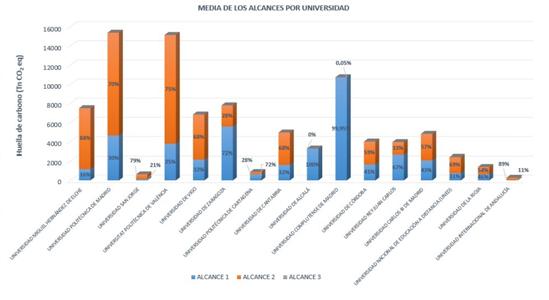
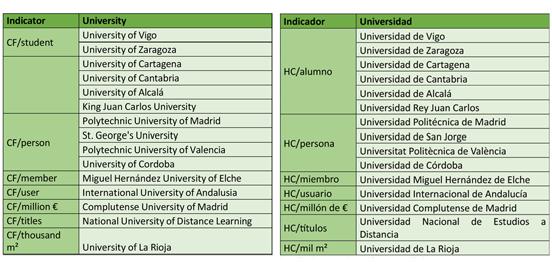
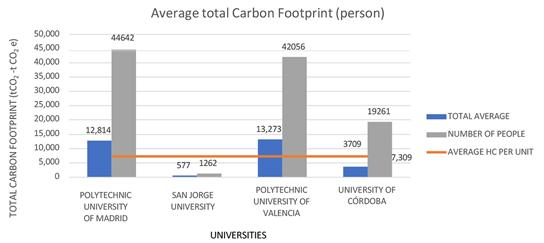
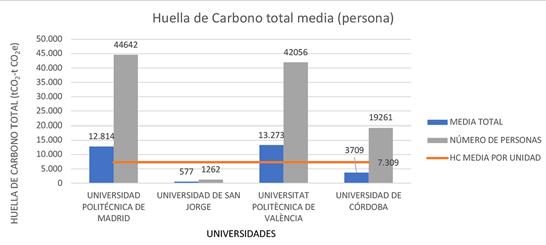
La Rioja and Universidad de Zaragoza), a growing trend in all organizations involved in sustainability and care for the environment. On the other hand, it should be noted that no university calculated its CF for Scope 3 (Figure 5).
With respect to the activity indexes (ud) (Figure 12), a total of 7 different indexes were used by the different universities to measure their carbon footprint. 4 universities expressed it as CF/persons, 6 did it as CF/students, 2 did it as CF/members or users, the Complutense University of Madrid by CF/Million €, in the case of the UNED with CF/Degrees, the University of La Rioja used CF/Thousand m² and the Carlos III University of Madrid simply put CFºº/Nº, so it is not clearly specified what they used (Figure 6).
Therefore, for the present study the most numerous indices have been selected and they are " CF/ persons" and " CF/students": "persons" is understood to be the entire university community including internal workers and students who generate GHG, while "students" are all those persons enrolled within a degree/master's degree who generate GHG. Regarding the data found in "person" indicators, which presents an average CF of 7,309 TnCO2 eq. Based on this value we observe that the UPM and UPV exceed this average value for Total CF, but when we compare it with the Relative CF it turns out that the two universities are within the average,
Además, 11 de las 16 universidades estudiadas en cuestión muestran cómo más del 50% de sus emisiones provienen del consumo eléctrico, cosa que no ocurre en las universidades que presentan un consumo de electricidad con fuente de energías renovables (Universidad Politécnica de Cartagena, Universitat Politècnica de València, Universidad Complutense de Madrid, Universidad de Alcalá, Universidad de Córdoba, Universidad de La Rioja y Universidad de Zaragoza), tendencia cada vez mayor en todas las organizaciones implicadas en la sostenibilidad y cuidado por el medio ambiente.
Por otro lado, cabe destacar que ninguna universidad calculó su HC para el alcance 3 (Figure 5). Respecto a los índices de actividad (ud) ), se han encontrado un total de 7 distintos en los que se basaron las distintas universidades para medir su huella de carbono. 4 universidades la expresaron en HC/personas, 6 lo hicieron como HC/alumnos, 2 lo hicieron como HC/ miembros o usuarios, la Universidad Complutense de Madrid mediante HC/Millón de €, para el caso de la UNED con HC/Títulos, la Universidad de La Rioja utilizó HC/ Mil m² y la Universidad Carlos III de Madrid simplemente puso HC/Nº por lo que no se especifica claramente qué utilizaron (Figure 6). Por lo tanto, para el presente estudio se han seleccionado los índices más numerosos y son «HC/ personas» y «HC/alumnos»: Por «personas» se en-
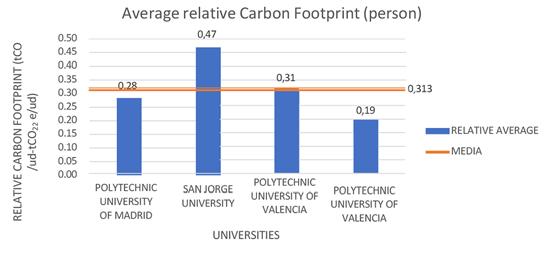 Figure 5: Types of indicators used by universities. Own source. Tipos de indicadores usados por las universidades. Fuente propia.
Figure 6: Average total CF per person. Source: own.
Figure 6: HC total media por persona. Fuente: propia.
Figure 7: Average relative CF per person. Source: own.
Figure 5: Types of indicators used by universities. Own source. Tipos de indicadores usados por las universidades. Fuente propia.
Figure 6: Average total CF per person. Source: own.
Figure 6: HC total media por persona. Fuente: propia.
Figure 7: Average relative CF per person. Source: own.
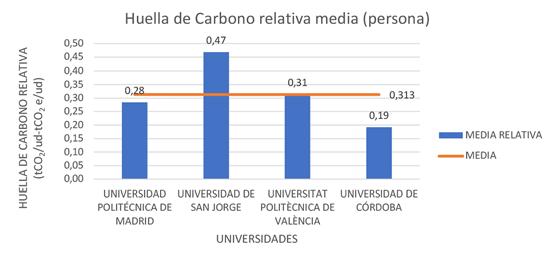
while the University of San Jorge exceeds the average relative levels.
This means that the emissions per person at the University of San Jorge, apart from being very high, can be reduced with regulations, habits that favor the reduction of emissions and consumption or energy efficient equipment (Figure 7).
Next, we will study the "student" indicator), which is the one most used by Spanish universities (Figure 8Figure 9):
In this case, the universities that exceed the average of the total CF are the University of Vigo, the University of Zaragoza and the University of Cantabria.
The Rey Juan Carlos University is the university that receives the most students on average per year and is the third university with the lowest emissions. This university could have values like Zaragoza University, where it is the institution with the second highest number of students and the one with the highest emissions.
On the other hand, the University of Cantabria is the second with the second lowest number of average annual students, however, it is the third most emissive in terms of GHGs.
The remaining universities have remained practically constant with respect to the number of students.
The good news of this fact is that, as mentioned above, the relative values can be easily solved to
tiende que es toda la comunidad universitaria incluyendo trabajadores internos y estudiantes que generan GEI, mientras que «alumnos» son todas aquellas personas matriculadas dentro de un grado / máster que generan GEI.
Respecto a los datos encontrados en indicadores «persona», el cual presenta una HC media de 7.309 TnCO2 eq. Partiendo de este valor observamos que la UPM y la UPV sobrepasan este valor medio para la HC Total, pero cuando lo comparamos con la HC Relativa resulta que las dos universidades se encuentran dentro de la media, mientras que la Universidad de San Jorge sobrepasa los niveles medios relativos.
Esto quiere decir que las emisiones por cada persona que presenta la Universidad de San Jorge aparte de ser muy elevadas, pueden ser reducidas con una normativa, hábitos que favorezcan las disminuciones de emisiones y consumo o equipos eficientemente energéticos (Figure 7).
A continuación, vamos a estudiar el indicador «alumno» , siendo este el más utilizado por las universidades españolas (Figure 8-Figure 9):
En este caso las universidades que sobrepasan la media de la HC total son la Universidad de Vigo, Universidad de Zaragoza y la Universidad de Cantabria.
La Universidad Rey Juan Carlos es la que más alumnos recibe de media al año y es la tercera universidad de menor emisiones. Esta universidad podría tener valores como en la de Zaragoza donde es la segunda institución con más alumnos y la de mayor emisión.
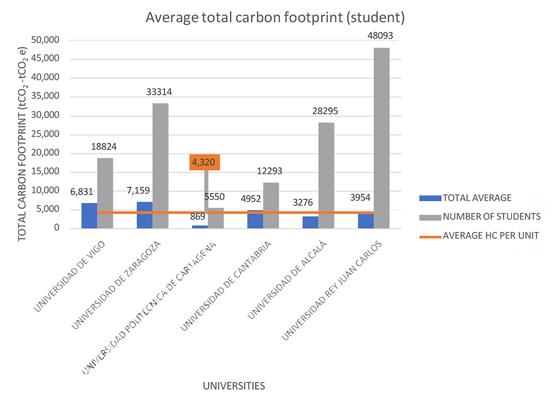
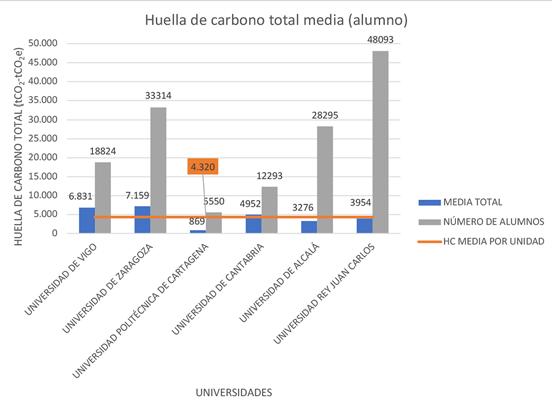


improve the totals with good habits and improved usage and consumption standards.
But for the average relative CF (Figure 16) we find that the University of Zaragoza per student does not emit as much carbon as expected, while the University of Cantabria has very high emissions per student compared to the others.
Conclusions:
All emissions related to Scope 1, which is only higher than the rest of the scopes in 25% of the universities, can be reduced through a series of rules of use, more efficient equipment with their respective maintenance or models of use of resources that are much healthier for the environment, since this scope is the responsibility of the people who use the university's facilities on a daily basis and the quality of the equipment.
Although it is not the most widely issued, it is still high in certain universities in total and/or relative terms.
Emissions related to Scope 2,4 universities have it under minimum values due to the use of renewable energy sources and 50% of Spanish universities present this scope as the one with the highest emissions. So it is the best option to reduce this scope. And the most effective.
It shows how a larger number of members in the university community does not necessarily mean a larger CF, depending on the factors detailed above.
Currently, with 80 universities throughout Spain, only 16 are facing the calculation and certification of their CF.
In view of the results, speaking in total terms, the best universities in Spain in terms of QoC are the University of San Jorge, the Polytechnic University of Cartagena and the International University of Andalusia.
The worst are the Polytechnic University of Madrid and the Polytechnic University of Valencia.
The quality of the information on the QoC of each institution varies greatly, with universities such as that of Cordoba presenting very clear data and others providing practically no information at all.
Por otro lado, se tiene a la Universidad de Cantabria la cual es la segunda con menor número de alumnos anuales medios, sin embargo, es la tercera más emisiva en cuanto a GEIs.
El resto de universidades permanecen prácticamente constantes sus emisiones respecto al número de alumnos.
La buena noticia de este hecho es que, como se mencionó anteriormente, se puede solucionar fácilmente los valores relativos para mejorar los totales con buenos hábitos y mejora en las normas de uso y consumo.
Pero para la media de la HC relativa (Figura 16) descubrimos que la Universidad de Zaragoza por alumno no emite tanto carbono como se espera, mientras que la Universidad de Cantabria presenta unas emisiones por alumno muy elevada respecto a los demás.
Conclusiones:
Todas las emisiones relacionadas con el alcance 1 donde sólo es superior al resto de alcances en el 25% de las universidades y son reducibles mediante una serie de normas de uso, equipos más eficientes con sus respectivos mantenimientos o modelos de utilización de los recursos mucho más saludables con el medio ambiente, ya que este alcance tiene su responsabilidad en las personas que utilizan de forma diaria las instalaciones de la universidad y la calidad de los equipos.
Aunque no es el alcance de mayor emisión, no deja de ser elevado en ciertas universidades hablando en términos totales y/o relativos.
Las emisiones relacionadas con el alcance 2, 4 universidades la tienen bajo valores mínimos debido a una utilización de fuentes de energía de origen renovables y el 50% de las universidades españolas presenta este alcance como el de mayor emisión. Por lo que es la mejor opción a reducir este alcance. Y el más efectivo.
Se muestra cómo un mayor número de integrantes en la comunidad universitaria no tiene por qué significar una mayor HC, dependiendo de factores detallados anteriormente.
Actualmente con 80 universidades por toda España, sólo 16 se enfrentan al cálculo y certificación de su HC. A la vista de los resultados, hablando en términos totales, las mejores universidades de España
respecto a la HC son la Universidad de San Jorge, Universidad Politécnica de Cartagena y la Universidad Internacional de Andalucía.
Mientras que las peores son la Universidad Politécnica de Madrid y la Universidad Politécnica de Valencia.
La calidad de la información sobre la HC de cada institución es muy variable, donde universidades como la de Córdoba presenta muy claramente los datos y otras prácticamente no muestran ni facilitan información alguna.

Resources / Fuentes:
BOVEA, K. V.-V. (2021). Carbon footprint in Higher Education Institutions: a literature review and prospects for future research. CLEAN TECHNOLOGIES AND ENVIRONMENTAL POLICY, 2523-2542.
FABIO MONSALVE, M.-Á. C. (2016). Carbon footprint of a university in a multiregional model: the case of the University of Castilla-La Mancha. CLEANER PRODUCTION, 119-130.
IPCC. (27 de FEBRUARY de 2022). CLIMATE CHANGE 2022 IMPACTS, ADAPTATION AND VULNERABILITY. Obtenido de https://report.ipcc.ch/ar6wg2/pdf/IPCC_AR6_WGII_FinalDraft_FullReport.pdf
METEOROLOGÍA, A. E. (s.f.). AEMET. Obtenido de https://www.aemet.es/es/noticias/2019/03/Efectos_del_ cambio_climatico_en_espanha
NATIONS, U. (12 de DICIEMBRE de 2015). EL ACUERDO DE PARÍS. Obtenido de https://unfccc.int/sites/ default/files/spanish_paris_agreement.pdf

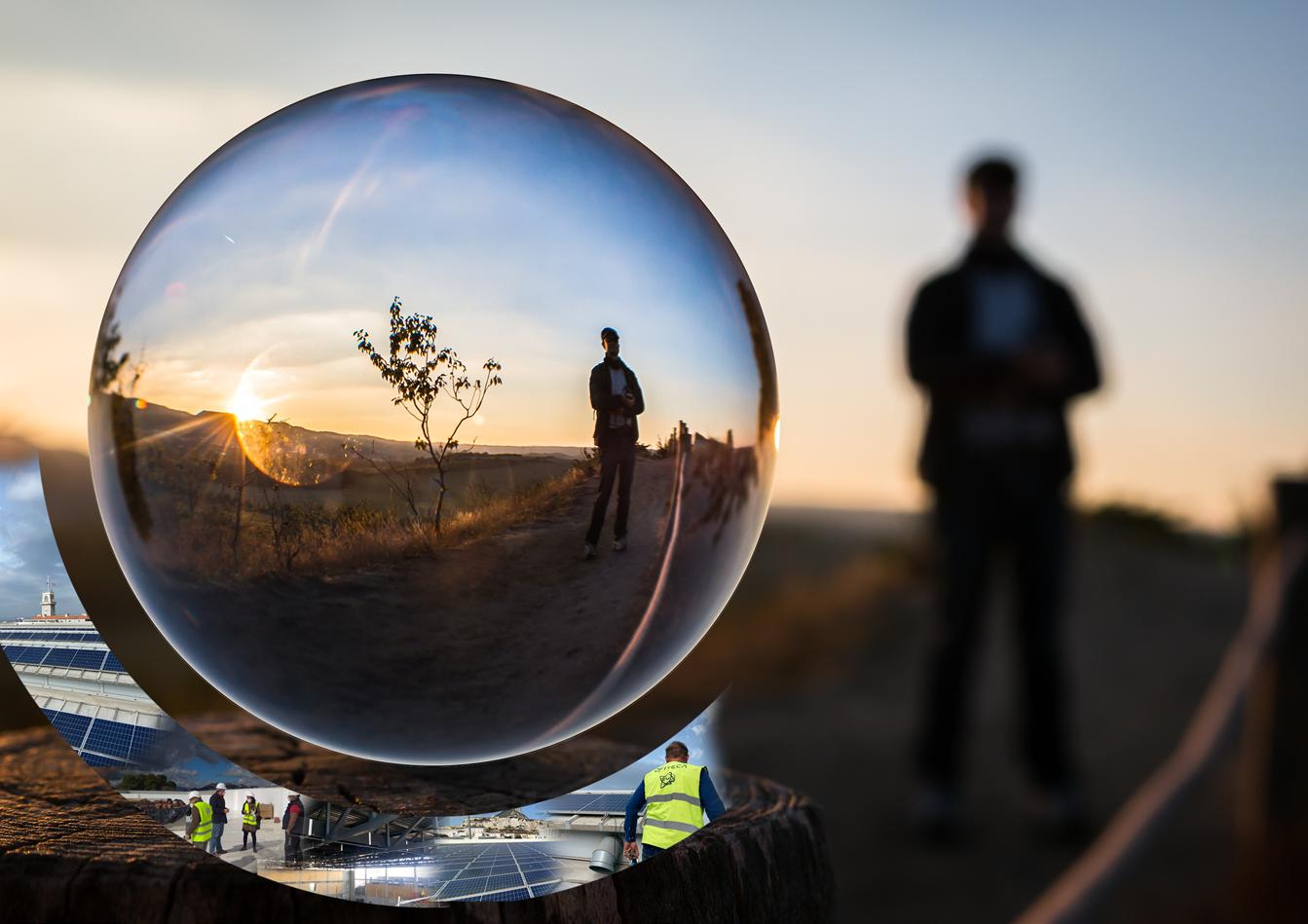









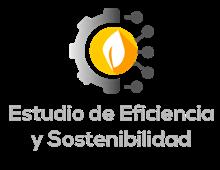

All societies now appear to be alive to the need for a clear and tangible commitment to fight climate change. To ensuring that we stop the unnecessary and wanton destruction of the world we live in.
It is widely accepted that the Construction Industry is in the top three of polluters in the world. In Gibraltar this figure is likely to be greater given our success in attracting investment. Whether Gibraltar or Spain however, the biggest challenge is the control of Energy waste within existing building portfolios which is by far the biggest consumer of energy.
To say that building and engineering practices have been lack in the past in the control of demand and use of energy is an understatement. The biggest challenge in this industry sector is therefore harnessing and controlling inefficiency within existing buildings.
In the excellent previous article, our colleagues at Coamba rightly put emphasis on the Universities in the area and highlight the need for transparent and ethical practices in this obviously important and influential sector.
At EVG in Gibraltar with our sister company EES in Spain, we have been working at developing tools for this precise problem. How to bring existing installations into control. How to provide consultancy services backed by engineering expertise that not only creates renewable energy where this is possible, or control and monitor the use of energy but provides real tangible advice on how to control systems and mitigate unnecessary energy wastage.
The economic consequences of the increased cost in energy is enormous. This reality is creating tremendous demand which in turn has resulted in a rush to market of products and services.
In next month’s issue we shall explain exactly what solutions we shall bring to market. Meanwhile if you have an installation that is wasteful, if you are confused by the sheer number of offers – do not hesitate to contact us on 00(350)54000826 or 00(34)677712329
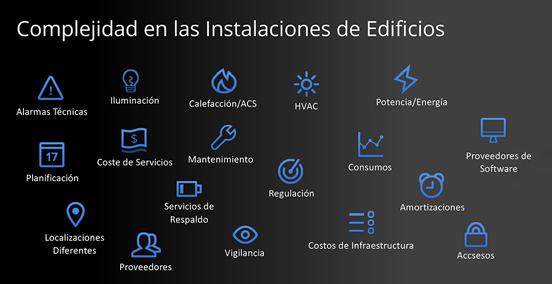
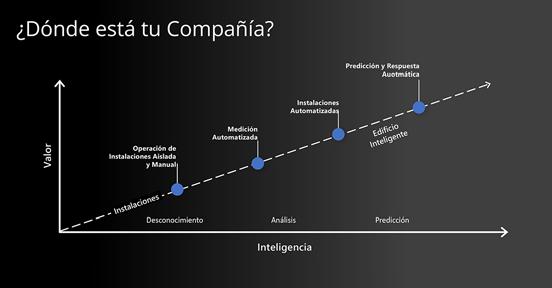




Todas las sociedades parecen ser conscientes ahora de la necesidad de un compromiso claro y tangible para luchar contra el cambio climático. Para garantizar que detenemos la destrucción innecesaria y gratuita del mundo en que vivimos.
Es un hecho ampliamente aceptado que el sector de la construcción se encuentra entre los tres más contaminantes del mundo. En Gibraltar es probable que esta cifra sea mayor, dado nuestro éxito a la hora de atraer inversiones. Sin embargo, ya sea en Gibraltar o en España, el mayor reto es el control de los residuos energéticos en los edificios existentes, que es, con diferencia, el mayor consumidor de energía.
Decir que las prácticas de construcción e ingeniería han sido deficientes en el pasado en el control de la demanda y el uso de la energía es quedarse corto. El mayor reto de este sector industrial es, por tanto, aprovechar y controlar la ineficiencia de los edificios existentes.
En el excelente artículo anterior, nuestros colegas de Coamba ponían acertadamente el acento en las Universidades de la zona y destacaban la necesidad de prácticas transparentes y éticas en este sector de evidente importancia e influencia.
En EVG, en Gibraltar, con nuestra empresa hermana EES en España, hemos estado trabajando en el desarrollo de herramientas para este problema concreto. Cómo controlar las instalaciones existentes. Cómo proporcionar servicios de consultoría respaldados por conocimientos de ingeniería que no sólo creen energía renovable cuando sea posible, o controlen y supervisen el uso de la energía, sino que proporcionen asesoramiento real tangible sobre cómo controlar los sistemas y mitigar el derroche innecesario de energía.
Las consecuencias económicas del aumento del coste de la energía son enormes. Esta realidad está creando una tremenda demanda que, a su vez, ha dado lugar a una avalancha de productos y servicios en el mercado.
En el número del mes que viene explicaremos exactamente qué soluciones sacaremos al mercado. Mientras tanto, si tiene una instalación que derrocha, si le confunde la cantidad de ofertas, no dude en ponerse en contacto con nosotros en el 00(350)54000826 o en el 00(34)677712329



www.estudio-es.es
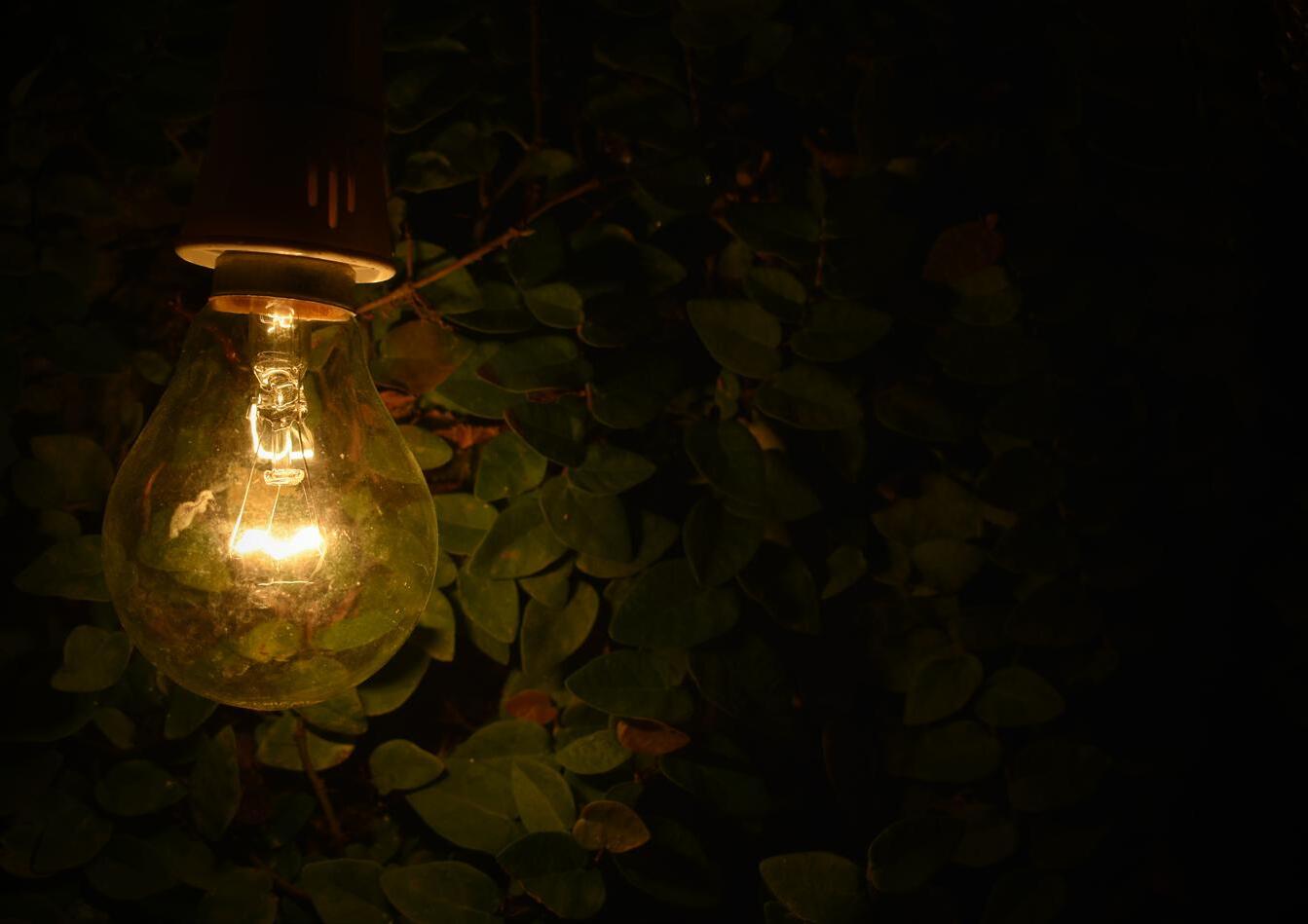
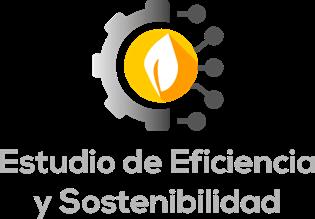
Estudio de Eficiencia y Sostenibilidad no ofrece una solución mágica para los problemas del consumo energético y su inestabilidad de costes.
Crear vuestra propia energía con paneles solares tiene sentido, pero solo como función del control de los gastos energéticos.
A veces no es lo mas la mejor manera de actuar, a veces el problema se podría controlar mejor actuando sobre los fallos de diseño o estudiando bien las diferentes opciones de un mercado que cada vez confunde más y más.
En estos momentos, lo ideal es ofrecer un servicio de asesoría especializado, con larga experiencia, y con recursos probados en el mercado.
Si es eso lo que buscas, llámanos. Será un placer atender a vuestras necesidades con profesionalidad y solvencia.
Y con una primera consulta totalmente gratis.
Por encima de todo, con ofertas claras y demostrablemente eficientes. No lo dudes.

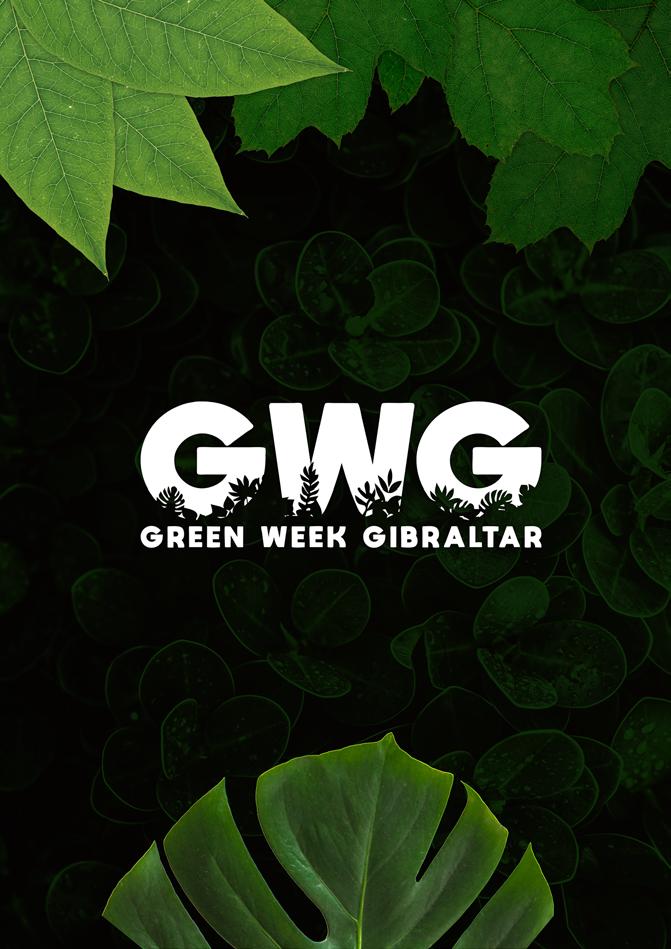

After years of thought and frustration, we decided this year we had to launch Green Week City - Gibraltar.
Why did we do this? For us it’s more a question of why has this not been done before. How can we increase awareness of our dire environmental situation if we do not out reach the population? In these days, there is far too much focus on specific items without looking at the overall situation. For us it is how can we possibly have a public event for almost every good and worthy cause possible, but not have an event drawing attention to the main problem, the unnecessary and callous destruction of our planet our choices and lifestyle have caused.
We are far too focused on bicycle lanes and bicycles as if they were choices we had to make. The truth is far from that, we forget that there is already no room for the additional traffic created by all the new developments so essential for us to continue to prosper as a community. We forget we have to improve our health and look after the air we all breathe and ensure we all do our bit to heal at least some of the damage already caused to our environment. We have no choice on the matter, it just so happens that it makes sense to do this because of all the reasons stated, but in reality, we have no choice. It’s simply impossible to consider a Gibraltar without them.
At OTWO, from our inception, we have been tireless campaigners for these changes. Tireless advocates that it is up to each and every one of us to do our bit otherwise the changes will not come. Sustainability is at the centre of our actions. It was indeed gratifying to see so many hundreds of people and families enjoying this first event, so encouraging to hear so many speak to us in support not only from the people enjoying the event but from the many people that participated with their stalls and offers. All have confirmed their interest for the next event and are themselves grateful for the support and success of their individual projects, be they environmentally friendly products or services. Without doubt the people have spoken again loudly, Our World - Our Responsibility.
It was a privilege to hear so much local talent on stage, to see such graceful performances from all the dance groups and individuals taking part or hear the talent in our talks describing in passionate details how we have ended up where we are or how
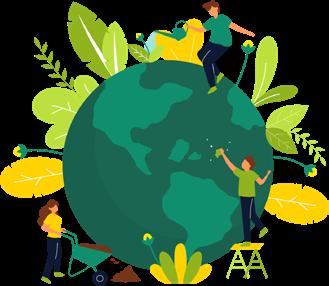
we can manage our expectations for a better future.
They are all covered in details elsewhere in this edition as they must be for it is only through education and information that we can assist people making better choices for the future.
Green Week Gibraltar was a pilot. An attempt at creating a sustainable event that will deliver awareness to our communities. It has been an overwhelming success and the OTWO team is not only encouraged by its success but is working on next year’s event to be announced soon. This experience is soon to be exported to adjoining cities in Spain. We will not stop working until we have a whole series of Green Week City events in the nearby Andalusia bringing better options for all.
OTWO is proud and grateful for the support we have received from the public and participants but we cannot finish this report without making reference to the EVG Group, Callaghan’s Insurance, Department of the Environment, and Lewis Stagnetto.
The EVG Group is radically involved in changing the way we engineer for our future buildings and has backed the OTWO project from the beginning. Its unwavering support is for us both a source of confidence and determination to help change mind sets in Gibraltar and our surrounding areas. Callaghan Insurance, and Lewis Stagnetto again have demonstrated that local entrepreneurs are not only here for the benefit. That they are willing to support events that are there not for profit but for purpose. An example of true community spirit. Thank you for your confidence and support.
Tras años de reflexión y frustración, decidimos que este año teníamos que poner en marcha la Semana Verde de la Ciudad de Gibraltar.
¿Por qué lo hemos hecho? Para nosotros es más una cuestión de por qué no se ha hecho antes. ¿Cómo podemos aumentar la concienciación sobre nuestra grave situación medioambiental si no llegamos a la población? Hoy en día se presta demasiada atención a temas concretos sin tener en cuenta la situación general. Para nosotros se trata de cómo es posible que celebremos un acto público para casi todas las causas buenas y dignas posibles, pero no celebremos un acto que llame la atención sobre el problema principal, la destrucción innecesaria e insensible de nuestro planeta que nuestras elecciones y nuestro estilo de vida han causado.
Estamos demasiado centrados en los carriles bici y las bicicletas como si fueran opciones que tuviéramos que tomar. La verdad está muy lejos de eso, olvidamos que ya no hay espacio para el tráfico adicional creado por todos los nuevos desarrollos tan esenciales para que sigamos prosperando como comunidad. Olvidamos que tenemos que mejorar nuestra salud y cuidar el aire que todos respiramos y asegurarnos de que todos ponemos nuestro granito de arena para curar al menos parte del daño ya causado a nuestro medio ambiente. No tenemos elección al respecto, lo que ocurre es que tiene sentido hacerlo por todas las razones expuestas, pero en realidad, no tenemos elección. Es sencillamente imposible plantearse un Gibraltar sin ellos. En OTWO, desde nuestros inicios, hemos sido incansables defensores de estos cambios. Defensores incansables de que depende de todos y cada uno de nosotros poner nuestro granito de arena, de lo contrario los cambios no llegarán. La sostenibilidad está en el centro de nuestras acciones. Fue realmente gratificante ver a tantos cientos de personas y familias disfrutando de este primer evento, tan alentador escuchar a tantos hablarnos en apoyo no sólo de la gente disfrutando del evento sino de las muchas personas que participaron con sus puestos y ofertas. Todos han confirmado su interés por el próximo evento y agradecen el apoyo y el éxito de sus proyectos individuales,
ya sean productos o servicios respetuosos con el medio ambiente. Sin duda, la gente ha vuelto a hablar alto: Nuestro Mundo - Nuestra Responsabilidad. Fue un privilegio escuchar a tantos talentos locales sobre el escenario, ver las actuaciones tan elegantes de todos los grupos de baile y personas que participaron o escuchar el talento de nuestras charlas describiendo con apasionados detalles cómo hemos acabado donde estamos o cómo podemos gestionar nuestras expectativas para un futuro mejor.
Todos ellos se tratan en detalle en otra parte de esta edición, como debe ser, ya que sólo a través de la educación y la información podemos ayudar a la gente a tomar mejores decisiones para el futuro.
La Semana Verde de Gibraltar fue un proyecto piloto. Un intento de crear un evento sostenible que conciencie a nuestras comunidades. Ha sido un éxito abrumador y el equipo de la OTWO no sólo está animado por su éxito, sino que está trabajando en el evento del año que viene, que se anunciará en breve. Esta experiencia se exportará pronto a ciudades colindantes de España. No dejaremos de trabajar hasta que tengamos toda una serie de eventos de la Ciudad de la Semana Verde en la cercana Andalucía que ofrezcan mejores opciones para todos. La OTWO está orgullosa y agradecida por el apoyo que hemos recibido del público y de los participantes, pero no podemos terminar este informe sin hacer referencia al Grupo EVG, Callaghan's Insurance, el Departamento de Medio Ambiente y Lewis Stagnetto. El Grupo EVG está radicalmente implicado en el cambio de la forma en que diseñamos los edificios del futuro y ha respaldado el proyecto OTWO desde el principio. Su apoyo inquebrantable es para nosotros tanto una fuente de confianza como de determinación para ayudar a cambiar la mentalidad en Gibraltar y sus alrededores. Callaghan Insurance y Lewis Stagnetto han vuelto a demostrar que los empresarios locales no están aquí sólo para beneficiarse. Que están dispuestos a apoyar eventos que no tienen ánimo de lucro, sino un propósito. Un ejemplo de verdadero espíritu comunitario. Gracias por vuestra confianza y apoyo.
Part of the Green Week Gibraltar celebrations is to put emphasis on the things we can do to save our planet and provide for a healthier way of life. This year we decided to help with the organization of a World Bicycle Day cycle route on the 3rd June. This gave a firm focus on the importance and much needed improvement for sustainable transport infrastructure. As if the environmental argument were not enough, I wish someone would explain to me how anybody expects the current growth of our community to continue without any kind of change in our road use and network to cope. It is simply impossible to think that our ageing and overcrowded existing road network will cope with the increase in traffic generated by these new projects. We need a shift on usage patterns.
As always there will be detractors, those that will simply limit themselves to saying no without providing any creditable alternative to the issue. For every one of those, particularly vociferous and hogging of the social networks, there are more that accept and welcome the way forward. Those that think that their children actually deserve better and that a solution must be found. For those people we helped with the cycle route.
We started at 10am from the Small Boats Marina, headed through Reclamation Road towards Queensway Road to Ocean Spa Plaza where we all joined
Bayside Road's new bicycle lane, from there it was a gorgeous safe ride through designated bicycle lanes to the Airport Tunnel, round the roundabout by Eastern beach and back in the same direction to Campion Park. The total distance of the route was calculated at 7.4km with a low difficulty level. At Campion Park participants under the age of 16 were awarded GWG'23 medals as a well done for completing the cycle route.
The sight of what must have been over 300 cyclist’s whole families and people of all ages, safely and happily cycling through our City gave us all a glimpse of what it will be like as more and more of these initiatives are implemented by the authorities.
It was truly an event to open the eyes of those who think that there is no support for this initiative, society must evolve to survive. Gibraltarians have always been forward thinking people, and we have proven it yet again. Well done all, especially all involved in the organization of the event, and see you in the next one!
Of course we must cater for the mobility of all, not just cyclists. But it is now clearly not a matter of what space is left over after we have factored motor vehicle requirements but how best to divide the limited resources, we must make living in Gibraltar healthier and sustainable.
The success of the event is very encouraging and will fuel our determination to support such initiatives.



Parte de las celebraciones de la Semana Verde de Gibraltar consiste en hacer hincapié en las cosas que podemos hacer para salvar nuestro planeta y procurar un modo de vida más saludable. Este año decidimos colaborar en la organización de una ruta ciclista por el Día Mundial de la Bicicleta el 3 de junio. De este modo se hizo hincapié en la importancia y la necesidad de mejorar las infraestructuras de transporte sostenible. Por si el argumento medioambiental no fuera suficiente, me gustaría que alguien me explicara cómo alguien espera que continúe el crecimiento actual de nuestra comunidad sin que se produzca ningún tipo de cambio en el uso y la red de carreteras para hacerle frente. Es sencillamente imposible pensar que nuestra envejecida y saturada red de carreteras existente vaya a soportar el aumento de tráfico generado por estos nuevos proyectos. Necesitamos un cambio en los patrones de uso.
Como siempre, habrá detractores, aquellos que simplemente se limitarán a decir no sin aportar ninguna alternativa creíble a la cuestión. Por cada uno de esos, especialmente vociferantes y acaparadores de las redes sociales, hay más que aceptan y dan la bienvenida al camino a seguir. Los que piensan que sus hijos realmente merecen algo mejor y que hay que encontrar una solución. A esas personas ayudamos con la ruta ciclista.
Empezamos a las 10 de la mañana desde el puerto deportivo de Small Boats, nos dirigimos por Reclamation Road hacia Queensway Road hasta Ocean Spa Plaza, donde todos nos unimos al nuevo carril bici de Bayside Road, desde allí fue un precioso pa-

seo seguro por los carriles bici designados hasta el túnel del aeropuerto, rodeamos la rotonda junto a la playa oriental y volvimos en la misma dirección hasta Campion Park. La distancia total del recorrido se calculó en 7,4 km con un nivel de dificultad bajo. En Campion Park, los participantes menores de 16 años recibieron medallas GWG'23 por haber completado la ruta ciclista.
La visión de lo que debían de ser más de 300 ciclistas, familias enteras y personas de todas las edades, pedaleando de forma segura y feliz por nuestra ciudad nos dio a todos una idea de lo que será a medida que las autoridades pongan en marcha más y más iniciativas de este tipo.
Fue realmente un evento para abrir los ojos a aquellos que piensan que no hay apoyo para esta iniciativa, la sociedad debe evolucionar para sobrevivir. Los gibraltareños siempre hemos sido gente con visión de futuro, y lo hemos demostrado una vez más. Enhorabuena a todos, especialmente a todos los implicados en la organización del evento, ¡y nos vemos en el próximo!
Por supuesto, debemos atender a la movilidad de todos, no sólo de los ciclistas. Pero está claro que ahora no se trata de qué espacio sobra después de haber tenido en cuenta las necesidades de los vehículos motorizados, sino de cómo dividir mejor los limitados recursos, debemos hacer que vivir en Gibraltar sea más sano y sostenible.
El éxito del evento es muy alentador y alimentará nuestra determinación de apoyar este tipo de iniciativas.
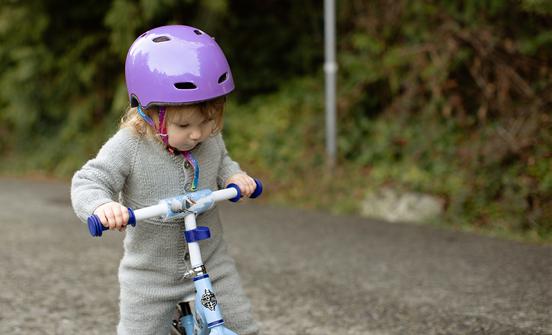

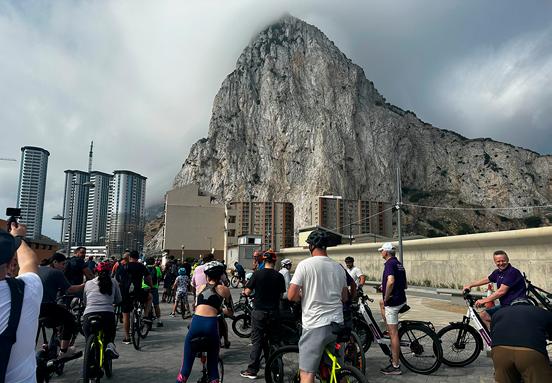
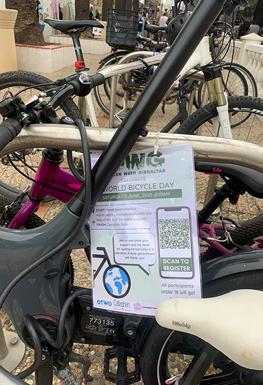
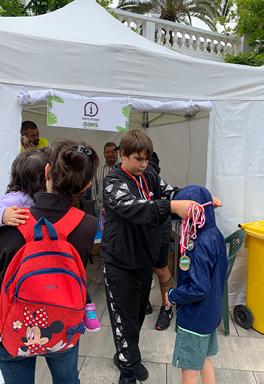


As part of our World Environment Day celebrations, the OTWO team asked many local crafters to join us at our GWG event, an ideal opportunity to showcase as much sustainable, ecofriendly, and ethnical options to the public. Around Campion Park we provided a shaded area where local crafters, organizations and groups could come along and share their natural, handmade, and ecologically friendly items and ideas to the public during the weekend of Friday 2nd June- Sunday 5th June.
Geraldine Canepa provided creams, soaps, essentials oils and aromatherapy, Victor Cabrera, Janine, Mark displayed gorgeous art pieces, handmade bracelets and jewelry, ethnical stones, and lovely handmade wooden signs. Moonknots Macreme also joined us with her gorgeous handmade and ethnical jewelry. Lowh, our local sustainable handmade soap company, were a pleasure to have present during the weekend providing her beautifully crafted handmade
soaps options to the public. Monpetitecreations and EcoPassion also joined us at the event showcasing just how many sustainable and ecofriendly options there is available to our day to day lives. The Gibraltar Cloth Nappy Exchange and Gibraltar Sustainable Buildings Group also set up a stall and joined us during the weekend and exhibited information and alternative options for the public to see. It was so great to witness such a wide variety of products and huge display of ethical and sustainable, ecofriendly options in support of this very first Green Week Gibraltar project. Indeed, a great display of commitment for a greener, cleaner, and more sustainable Gibraltar.
We are so looking forward to seeing all these companies and others that couldn’t join us at Green Week Gibraltar at our 2nd Eco Festival this coming September at the Europa Pool complex. Feel free to send us an email with interest to otwomagazine@gmail.com.


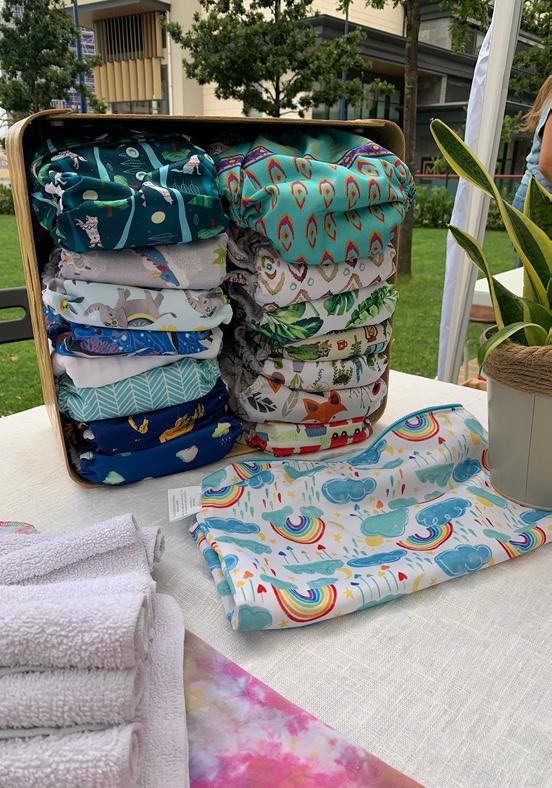
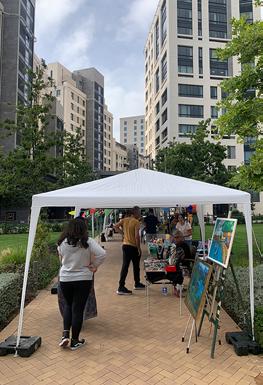

Como parte de las celebraciones del Día Mundial del Medio Ambiente, el equipo de la OTWO pidió a muchos artesanos locales que se unieran a nosotros en nuestro evento de la GWG, una oportunidad ideal para mostrar al público la mayor cantidad de opciones sostenibles, ecológicas y étnicas. Alrededor de Campion Park, durante el fin de semana del viernes 2 de junio al domingo 5 de junio, habilitamos una zona a la sombra para que artesanos, organizaciones y grupos locales pudieran compartir con el público sus ideas y artículos naturales, hechos a mano y respetuosos con el medio ambiente.
Geraldine Canepa ofreció cremas, jabones, aceites esenciales y aromaterapia, Victor Cabrera, Janine y Mark expusieron magníficas obras de arte, pulseras y joyas hechas a mano, piedras étnicas y preciosos letreros de madera hechos a mano. Moonknots Macreme también se unió a nosotros con su magnífica joyería artesanal y étnica. Lowh, nuestra empresa local de jabón artesanal sostenible, fue un placer tenerla presente durante el fin de semana ofreciendo al público sus jabones artesanales de bella factura. Monpetitecreations y EcoPassion también se unieron a nosotros en el evento mostrando cuántas opciones sostenibles y ecológicas hay disponibles para nuestro día a día. El Gibraltar Cloth Nappy Exchange y el Gibraltar Sustainable Buildings Group también montaron un puesto y se unieron a nosotros durante el fin de semana y exhibieron información y opciones alternativas para que el público las viera. Fue estupendo ver una variedad tan amplia de productos y un despliegue tan grande de opciones éticas, sostenibles y ecológicas en apoyo de este primer proyecto de la Semana Verde de Gibraltar. Sin duda, una gran muestra de compromiso por un Gibraltar más ecológico, limpio y sostenible. Estamos deseando ver a todas estas empresas y a otras que no pudieron unirse a nosotros en la Semana Verde de Gibraltar en nuestro 2º Festival Ecológico el próximo mes de septiembre en el complejo Europa Pool. No dude en enviarnos un correo electrónico con su interés a otwomagazine@gmail.com.

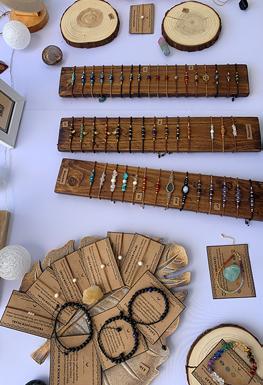




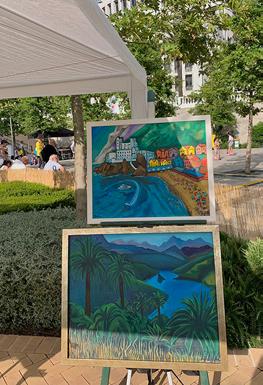

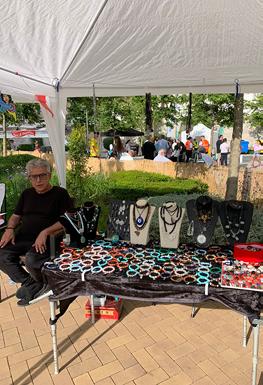

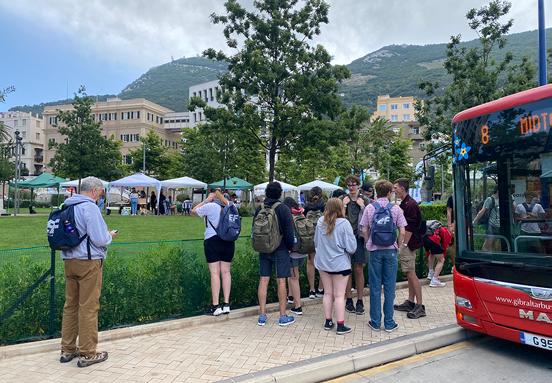
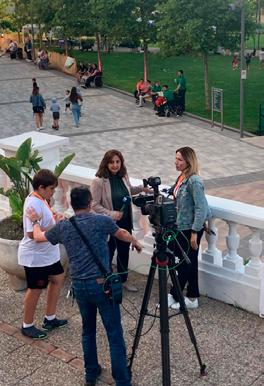
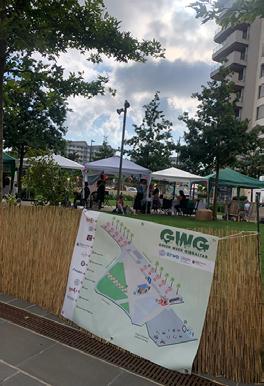
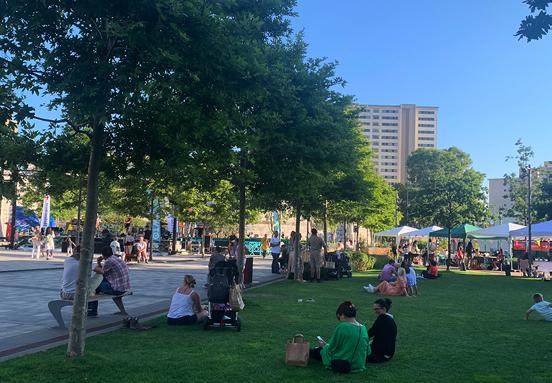
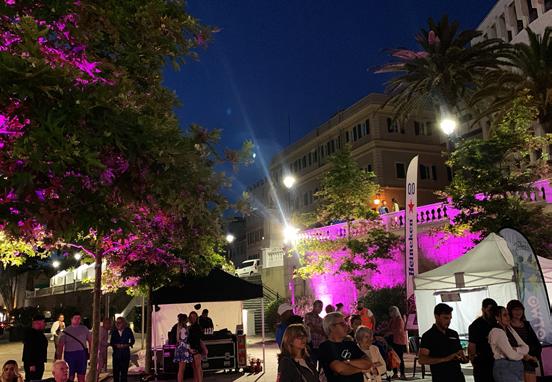

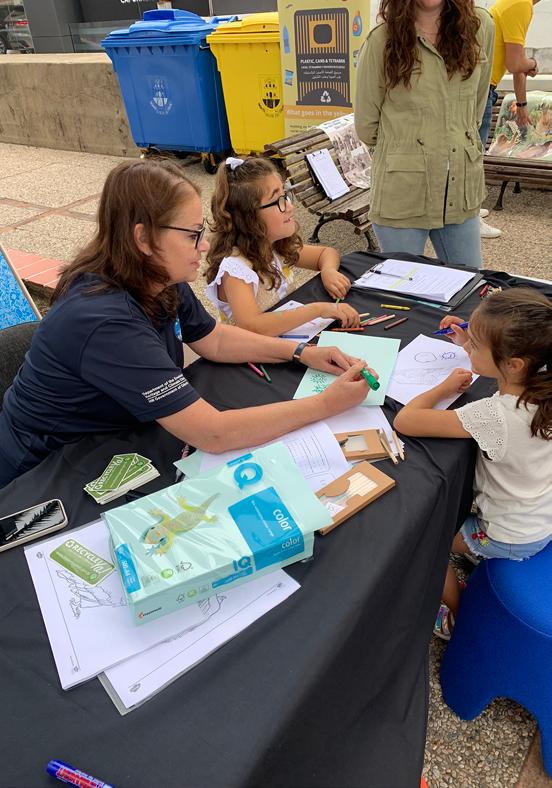
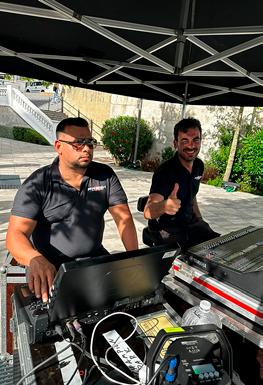




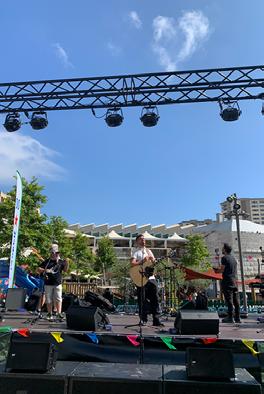
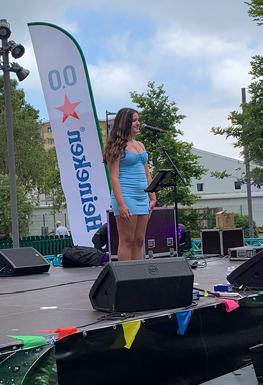

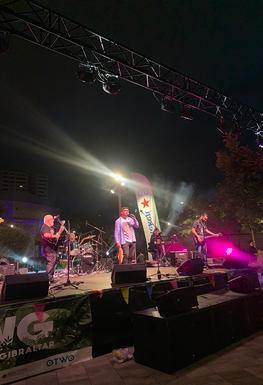
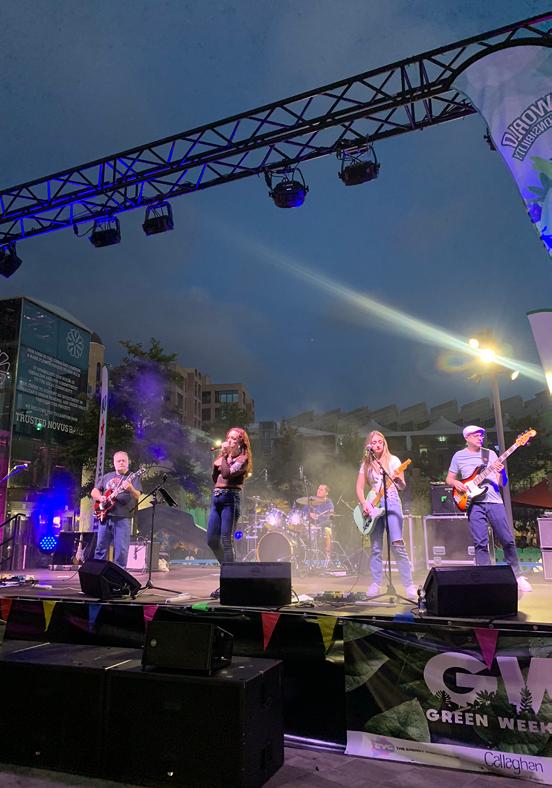

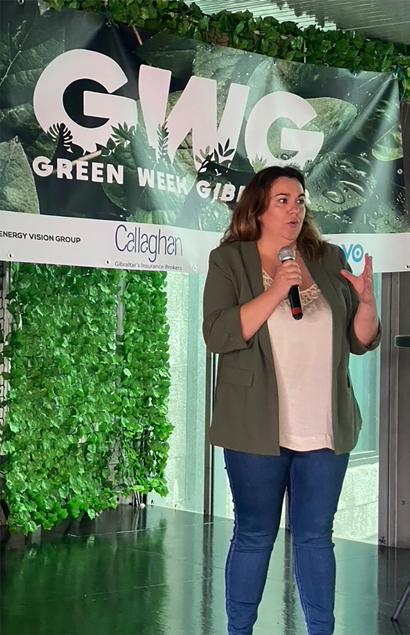
The beginning of this informative proposal called TALKS GWG was for our collaborator Raquel Collante who presented her proposal "Nature Baths".
She made it clear that this is not the typical hiking route, nor a more relaxed variant of the multi-adventure initiatives, or the so distorted and evasive yoga exercises in the forest. She also made it clear that no physical preparation is needed, that it is suitable for anyone and valid for any natural environment: whether in front of the sea, in a park or even in your own garden.
This wellness practice is a contemplative walk through natural spaces and through our senses. It usually lasts between two and three hours and covers approximately one and a half kilometers. She stressed that we are forgetting that we are part of this nature and this loss of connection also entails a distancing from ourselves.
To reconnect with ourselves, Raquel offers a varied series of activities customized to the tastes of the participants and the type of route that is most appropriate for them. There is a simple but transcendental objective: to discover your own nature.
The benefits are more than proven: it revitalizes, reduces stress, helps sleep, increases creativity, promotes healthy lifestyle habits, helps lower blood pressure and strengthens our immune system. She belongs to the Forest Therapy Hub, having her certification as a forest guide. Following the basic theoretical model and the appropriate sequences of action, it is possible to optimize the benefits in an unforgettable experience of connection with the natural environment.
In some countries such as Japan or Canada, doctors prescribe forest baths to improve health. In Spain, the health insurance company DKV, has an institute called Observatory of Health and Environment that collaborates with the Institute of Global Health of Barcelona (ISGLOBAL) and have come to confirm how green spaces decrease stress levels, anxiety, insomnia and depressive states. At the same time it reduces obesity, diabetes and blood pressure. In addition to preventing certain non-communicable diseases by improving the immune system.
If you are interested in more information you can go to their website: https://razondenaturaleza.com/
El inicio de esta propuesta divulgativa denominadas TALKS GWG fue para nuestra colaboradora Raquel Collante que nos presentó su propuesta «Baños de naturaleza».
Dejando claro que no se trata de la típica ruta de senderismo, ni de una variante más sosegada de las iniciativas multiaventuras, o de las tan desvirtuados y evasivos ejercicios de yoga en en el bosque. También dejó claro que no se necesita ninguna preparación física, que es apto para cualquier persona y válido para todo entorno natural: ya sea frente al mar, en un parque e incluso en tu propio jardín.
Esta práctica de bienestar es un paseo contemplativo por espacios naturales y a través de nuestros sentidos. Habitualmente dura entre dos y tres horas y se recorre aproximadamente un kilómetro y medio. Recalcó que nos estamos olvidando de que somos parte de esta naturaleza y esta pérdida de conexión conlleva también un alejamiento de nosotros mismos.
Para reencontrarnos, Raquel, nos ofrece una variada serie de actividades personalizadas a los gustos de los asistentes y al tipo de recorrido más apropiado para ellos. Hay un simple pero trascendental objetivo: descubrir tu propia naturaleza.
Los beneficios están más que demostrados: revitaliza, reduce el estrés, ayuda a conciliar el sueño, aumenta la creatividad, promueve hábitos de vida saludables, ayuda a bajar la presión sanguínea y refuerza nuestro sistema inmune. Ella pertenece a la Forest Therapy Hub, teniendo su certificación como guía de bosques. Siguiendo el modelo teórico de base y las secuencias de actuación apropiadas, se consigue optimizar los beneficios en una inolvidable experiencia de conexión con el medio natural. En algunos países como Japón o Canadá los médicos prescriben los baños de bosques para mejorar la salud. En España, la compañía de seguros de salud DKV, tiene un instituto denominado Observatorio de Salud y Medio Ambiente que colabora con el Instituto de Salud Global de Barcelona (ISGLOBAL) y han llegado a confirmar como los espacios verdes disminuyen los niveles de estrés, la ansiedad, el insomnio los estados depresivos. A la vez que reduce la obesidad, la diabetes y la presión sanguínea. Además de prevenir determinadas enfermedades no transmisibles con la mejora del sistema inmunitario. Si estáis interesado en más información podéis asistir a su web: https://razondenaturaleza.com/
GSBG: Transformar el sector de la construcción de Gibraltar para un futuro sostenible
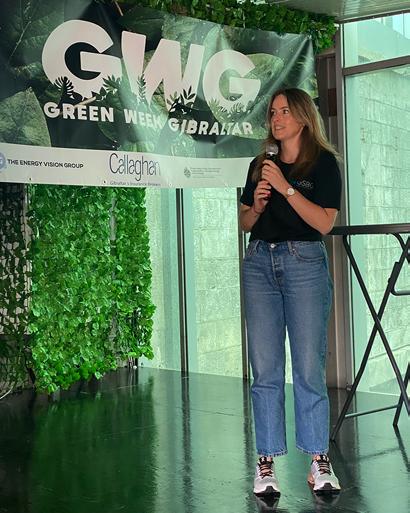
Candice Marsh, a highly experienced building services engineer, took the initiative to establish the Gibraltar Sustainable Buildings Group (GSBG). With six years of expertise in the field and a specialization in Low Carbon Design, she recognized the common concern amongst building professionals – the need for change in the building and construction industry. Alongside a diverse group of 50, including architects, engineers, developers, contractors, and lawyers, she founded GSBG to drive sustainable practices in Gibraltar's building sector.
Through numerous conversations, the group formed informally, aiming to find solutions. As the discussions progressed and ideas flourished, it became evident that GSBG could offer more than just internal benefits—it could serve the wider community as well.
GSBG's core objectives are multifaceted. Firstly, the group strives to represent the voice of the industry, advocating for transformative change. They aim to clarify the concept of net-zero in the built environment and raise awareness about sustainable buildings. GSBG also plans to provide valuable information, tools, and resources to both its members and the community at large. Additionally, the group is committed to developing and supporting Gibraltar's roadmap for decarbonizing the building sector, improving every stage of a building's life cycle, and ensuring long-term societal contributions and improved quality of life.
GSBG has already made significant progress with

their endeavours, participating in notable events such as the Green Week Gibraltar organized by OTWO Magazine in June 2023 and the ASPIRE Conference organized by the Department of Environment. Plans are now underway to transform this group into a formal, NGO and they are also eagerly preparing for their upcoming launch event later this year, which promises to be a milestone in their journey.
So, what exactly constitutes a sustainable building? Often referred to as green or eco-friendly buildings, sustainable buildings are designed and constructed using practices and materials that minimize their negative impact on the environment while maximizing efficiency, durability, and occupant comfort. Key areas of focus include energy efficiency, water conservation, waste reduction, the use of environmentally friendly materials, and the creation of healthy indoor environments. A sustainable, low-carbon building takes into account the entire life cycle of the structure, including material production, operation, end-of-life considerations, and beyond.
In 2020 the operational carbon emissions of buildings in Gibraltar accounted for a staggering 41.5% of the total carbon emissions. This statistic highlights the urgency to reduce the environmental impact of buildings and underscores the significance of GSBG's mission. To stay updated on GSBG's activities and join the sustainable building movement, follow them on Instagram at @gi_sustainablebuildings. Together, we can transform Gibraltar's building sector for a greener and more sustainable future.



Candice Marsh, ingeniera de servicios de construcción con gran experiencia, tomó la iniciativa de crear el Grupo de Edificios Sostenibles de Gibraltar (GSBG). Con seis años de experiencia en este campo y una especialización en diseño con bajas emisiones de carbono, reconoció la preocupación común entre los profesionales de la construcción: la necesidad de un cambio en el sector de la edificación y la construcción. Junto a un grupo diverso de 50 personas, entre arquitectos, ingenieros, promotores, contratistas y abogados, fundó GSBG para impulsar prácticas sostenibles en el sector de la construcción de Gibraltar.
A través de numerosas conversaciones, el grupo se formó de manera informal, con el objetivo de encontrar soluciones. A medida que avanzaban los debates y florecían las ideas, se hizo evidente que GSBG podía ofrecer algo más que beneficios internos: también podía servir a la comunidad en general.
Los principales objetivos del GSBG son múltiples. En primer lugar, el grupo se esfuerza por representar la voz del sector, abogando por un cambio transformador. Pretenden aclarar el concepto de "neto cero" en el entorno construido y concienciar sobre los edificios sostenibles. El GSBG también tiene previsto proporcionar información, herramientas y recursos valiosos tanto a sus miembros como a la comunidad en general. Además, el grupo se ha comprometido a desarrollar y apoyar la hoja de ruta de Gibraltar para descarbonizar el sector de la construcción, mejorar cada etapa del ciclo de vida de un edificio y garantizar contribuciones sociales a largo plazo y una mejor calidad de vida.
El GSBG ya ha logrado avances significativos en su empeño, participando en eventos notables como la Semana Verde de Gibraltar organizada por la revista OTWO en junio de 2023 y la Conferencia ASPIRE organizada por el Departamento de Medio Ambiente. En la actualidad hay planes en marcha para transformar este grupo en una ONG formal, y también se están preparando con entusiasmo para su próximo evento de lanzamiento a finales de este año, que promete ser un hito en su viaje.
¿Qué es exactamente un edificio sostenible? A menudo denominados edificios verdes o ecológicos, los edificios sostenibles se diseñan y construyen
utilizando prácticas y materiales que minimizan su impacto negativo en el medio ambiente al tiempo que maximizan la eficiencia, la durabilidad y la comodidad de sus ocupantes. Las áreas clave de atención incluyen la eficiencia energética, la conservación del agua, la reducción de residuos, el uso de materiales respetuosos con el medio ambiente y la creación de ambientes interiores saludables. Un edificio sostenible y con bajas emisiones de carbono tiene en cuenta todo el ciclo de vida de la estructura, incluida la producción de materiales, el funcionamiento, las consideraciones relativas al final de la vida útil y otros aspectos.
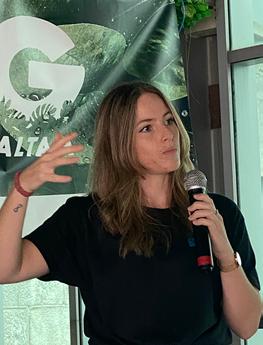
En 2020, las emisiones de carbono operativas de los edificios de Gibraltar representaron un asombroso 41,5% de las emisiones totales de carbono. Esta estadística pone de relieve la urgencia de reducir el impacto medioambiental de los edificios y subraya la importancia de la misión de GSBG. Para estar al día de las actividades de GSBG y unirse al movimiento de construcción sostenible, sígalos en Instagram en @gi_sustainablebuildings. Juntos, podemos transformar el sector de la construcción de Gibraltar para conseguir un futuro más ecológico y sostenible.
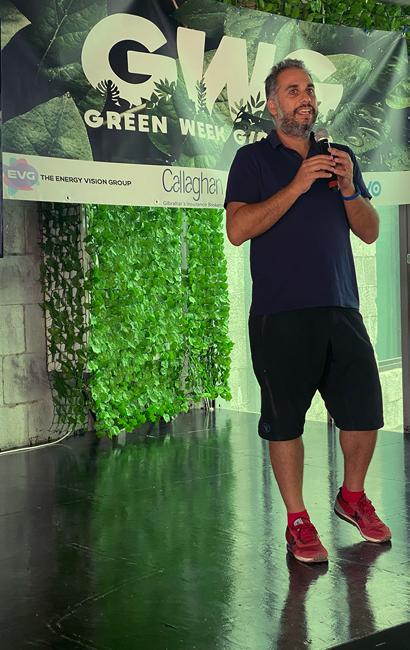
The EUROVELO project consists of connecting all European regions through 17 cycling routes that make up a network of itineraries of more than 90,000km, about half of which are already developed.
These routes share characteristics in each of the regions. The purpose is that the practice of tourism can be done through bike trips with low or medium difficulty in most of the route and, above all, with a coverage of services and infrastructure facilities favorable to cycling.
For the region of Campo de Gibraltar for the route of the Eurovelo 8, the Medeterranean Route, as it has been called. This has one end in Cyprus and the other in the city of Cadiz. But, undoubtedly, the scenery of our environment is considered a target destination for many European cycle tourists for several reasons such as the end in the Rock of Gibraltar or, also, to cross the Strait of Gibraltar and continue the route through the African continent.
This privileged enclave in the south of Europe gives us the opportunity to offer a geographical attraction, and of course cultural or natural, which should be accompanied by a good provision of services and infrastructure suitable for cycling.
The municipalities, far from configuring a joint

strategy to accommodate this tourist demand, it seems that they have initiated a struggle to reconfigure the routes devised from a European vision, and itineraries are proposed that cater more to the interest of attracting those European funds for the provision than to the continuity and coherence of the route itself.
Not identifying Gibraltar as a final destination is incomprehensible. And especially at this time coinciding with this event where Gibraltar presents a very strong commitment to promote mobility by bicycle with a plan to connect its entire territory with bike lanes. This, connected to the infrastructure that is already being developed in the region, allows to move from Gibraltar itself to the heart of the region reaching La Almoraima and Los Alcornocales in half a day cycling.
From this forum and taking advantage of the inertia that gives us an event like Green Week Gibraltar, we raise the possibility of starting the reverse path to the proposed understanding that if Eurovelo is not oriented towards Gibraltar that we are those who work in this area that we orient our efforts to bring it, either with infrastructure, services, or communication, since the cultural and natural attraction is evident.
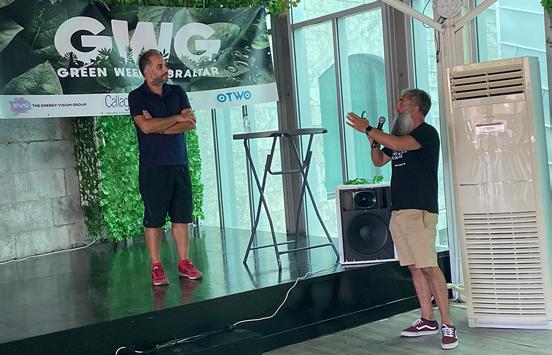


El proyecto EUROVELO consiste en la conexión de todas las regiones europeas a través de 17 rutas cicloturistas que conforman una red de itinerarios de más de 90.000km de los cuales, alrededor de la mitad ya están desarrollados.
Estos itinerarios comparten características en cada una de las regiones. El propósito es que la práctica del turismo se pueda realizar a través de viajes en bici con una dificultad baja o media en la mayor parte del trayecto y, sobretodo, con una cobertura de servicios y dotaciones de infraestructura favorables a la bicicleta.
Por la comarca del Campo de Gibraltar para el trazado de la Eurovelo 8, la Ruta Medeterránea, como se ha denominado. Esta tiene un extremo en Chipre y el otro en la ciudad de Cádiz. Pero, sin lugar a dudas, el escenario de nuestro entorno es considerado un destino objetivo para muchos cicloturistas europeos por varios motivos como pueden ser la finalización en el Peñon de Gibraltar o, también, por cruzar el Estrecho de Gibraltar y continuar la ruta por el continente africano.
Este enclave privilegiado al sur de Europa nos da la oportunidad de ofrecer un atractivo geográfico, y por supuesto cultural o natural, que debería acompañarse de una buena dotación de servicios e infraestructuras apropiadas para la bicicleta.

Los municipios, lejos de configurar una estrategia conjunta para albergar esta demanda turística, parece que han iniciado una lucha por reconfigurar los trazados ideados desde una visión europea y se plantean itinerarios que atienden más al interés de captar esos fondos europeos destinados a la dotación que a la propia continuidad y coherencia del recorrido.
No identificar a Gibraltar como un destino final se hace incomprensible. Y máxime en este momento coincidente con este evento donde Gibraltar presenta una apuesta muy fuerte para potenciar la movilidad en bicicleta con un Plan para conectar todo su territorio con carril bici. Este, conectado a la infraestructura que se está desarrollando ya en la comarca, permite desplazarse desde el propio Gibraltar al corazón de la comarca alcanzando La Almoraima y Los Alcornocales en media jornada ciclista.
Desde este foro y aprovechando la inercia que nos da un evento como el Green Week Gibraltar, se plantea la posiblidad de iniciar el camino inverso al planteado entendiendo que si Eurovelo no se orienta hacia Gibraltar que seamos los que trabajamos en este ámbito los que orientemos nuestros esfuerzos para traerlo, ya sea con infraestructura, con servicios, o con comunicación, puesto que el atractivo cultural y natural es evidente.
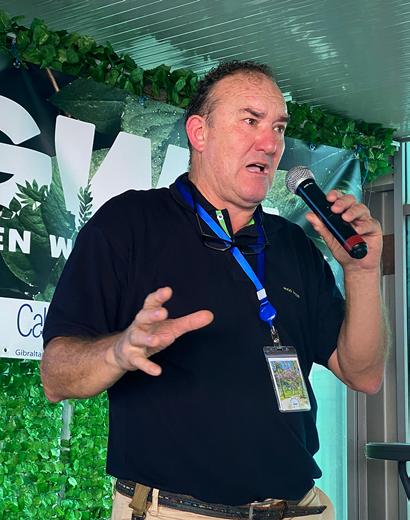
The Princesa Sofia Park in La Linea (Cadiz) has experienced several vicissitudes since its creation in the 1970s. Initially conceived as a compensation for the closure of the border with Gibraltar, the park became an unwieldy liability for the local government when it inherited its management, due to high maintenance costs and the sometimes-unconcealed pressure of other interests.
In its early years, Princess Sophia Park was a cherished place for local people, a forest park with lush gardens and lakes inhabited by ducks, guinea fowl and rabbits. It also became a resting point for migratory birds crossing the Strait of Gibraltar. Mainly due to lack of funds, caused a decline in its condition by the lack of maintenance and the park became a haven for malpractices of all kinds, losing its original appeal.
There were several attempts to solve this problem, finally a reform was carried out that completely changed the appearance from a forest area to a quasi-African palm grove, where much of the vegetation was eliminated and where there was a predominance of areas of sand that in hot weather were not very pleasant. Although some problems were solved, new ones arose.
In the 2010s, the park's abandonment reached alarming levels. It became a dumping ground for garbage and debris, a place for botellón, and the park was divided into four parts by internal roads, to facilitate thinly veiled intentions of urbanization. However, this situation awakened the conscience of a part of society, which began to form associations to save the park. Shock cleanups, pruning groups, and small associations were organized to take on the management and recovery of different parts of the park.
These efforts included the creation of the Asociación Canina Parque Princesa Sofía, the skatepark, the Donors' area and the group Los Locos x El Parque. In particular, the volunteers of the latter group were dedicated to reforesting, cleaning and enhancing the park's flora, fauna and ornithology. In addition, they organized visits by students and associations for the elderly and disabled. Their tireless work also generated pressure on politicians to take action and change their attitude towards this place. All this in an altruistic way.
We are currently very hopeful about the upcom-

ing major rehabilitation of the Princesa Sofia that the city council is going to start, the most important part of which will undoubtedly be the recovery of the lagoons, which will positively influence the ecology and social vision of the park, attract visitors, and benefit the city economically, which is no small thing.
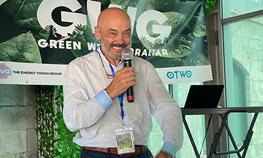
Throughout its history, the Princess Sofia Park has faced financial challenges and management problems, but thanks to the dedication of these groups and associations, it has managed to preserve and improve the park, and in recent terms, we must thank the great involvement of the city council, resulting in a clear change of image, which is also the image of the city to be in an area where millions of tourists pass each year to Gibraltar. Currently, Los Locos x El Parque and other groups remain committed to the struggle for the continuous improvement of this valuable green area, which, properly managed, can become a focal point not only ecological, but social and economic for a people so needy.

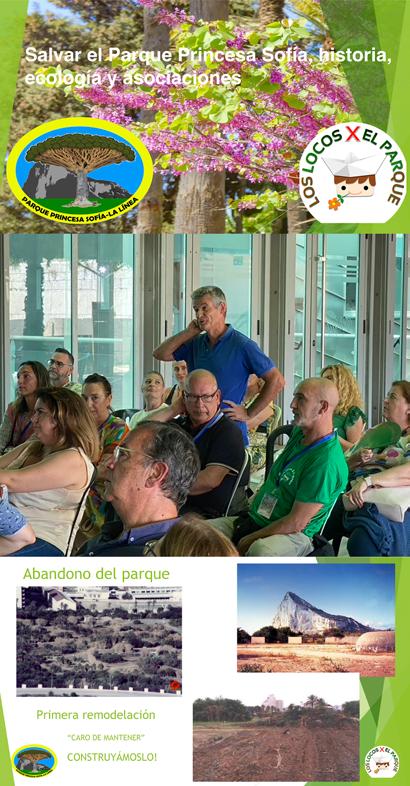
El Parque Princesa Sofía de La Línea (Cádiz) ha experimentado diversas vicisitudes desde su creación en la década de 1970. Inicialmente concebido como una compensación por el cierre de la frontera con Gibraltar, el parque se convirtió en una responsabilidad difícil de manejar para el gobierno local cuando heredó su gestión, debido a altos costos de mantenimiento y la no oculta a veces, presión de intereses de otro tipo.
En sus primeros años, el Parque Princesa Sofía era un lugar apreciado por la población local, un parque forestal con exuberantes jardines y lagos habitados por patos, gallinas de Guinea y conejos. También se convirtió en un punto de descanso para las aves migratorias que atravesaban el estrecho de Gibraltar. Principalmente debido a la falta de fondos, provocaron un declive en su estado por el nulo mantenimiento y el parque se convirtió en un refugio para malas prácticas de todo tipo, perdiendo su atractivo original.
Hubo varios intentos por resolver este problema, finalmente se llevó a cabo una reforma que cambió totalmente la fisonomía pasando de ser una zona forestal a un palmeral cuasi africano, donde se eliminó gran parte de la vegetación y donde predominaban zonas de albero que en tiempos de calor no eran muy agradables. Aunque se solucionaron algunos problemas, surgieron otros nuevos.
En la década de 2010, el abandono del parque alcanzó niveles alarmantes. Se convirtió en un vertedero de basura y escombros, un lugar para el botellón y el parque fue dividido en cuatro partes mediante carreteras internas, para facilitar poco veladas intenciones de urbanización. Sin embargo, esta situación despertó la conciencia de una parte de la sociedad, que comenzó a formar asociaciones para salvar el parque. Se organizaron limpiezas de choque, grupos de poda y pequeñas asociaciones que asumieron de forma particular la gestión y recuperación de distintas partes del parque. Estos esfuerzos incluyeron la creación de la Asociación Canina Parque Princesa Sofía, el skatepark, la zona de los Donantes y el grupo Los Locos x El Parque. En particular los voluntarios de este último grupo se dedicaron a reforestar, limpiar y poner en valor la flora, fauna y ornitología del parque. Además, organizaron visitas de estudiantes
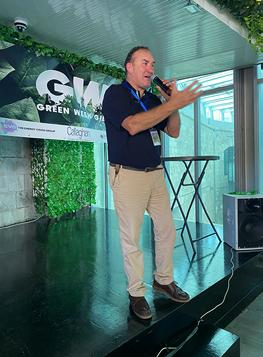
y asociaciones de mayores y discapacitados. Su trabajo incansable también generó presión sobre los políticos para que tomaran medidas y cambiaran su actitud hacia este lugar. Todo esto de forma altruista.
Actualmente estamos muy esperanzados en la próxima en la gran rehabilitación del Princesa Sofía que va a iniciar el ayuntamiento, cuya parte más importante será sin duda la recuperación de las lagunas, que influirá positivamente en la ecología y la visión social del parque, que atraiga visitantes, y redunde económicamente en la ciudad, que no es poco.
A lo largo de su historia, el Parque Princesa Sofía ha enfrentado desafíos financieros y problemas de gestión, pero gracias a la dedicación de estos grupos y asociaciones, se ha logrado preservar y mejorar el parque, ya en las últimas legislaturas, hay que agradecer la gran implicación del ayuntamiento, dando como resultado un evidente cambio de la imagen, que también es la imagen de la ciudad al encontrarse en una zona por donde pasan cada año millones de turista a Gibraltar. Actualmente, Los locos x El Parque y otros grupos siguen comprometidos en la lucha, por la mejora continua de esta valiosa área verde, que, gestionada adecuadamente, puede convertirse en un punto neurálgico no solo ecológico, sino social y económico para un pueblo tan necesitado.

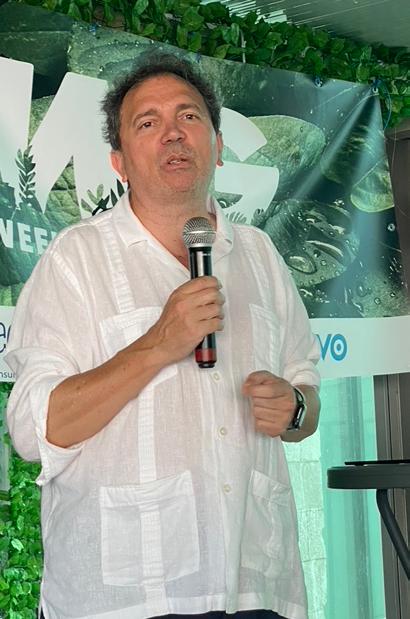
Juanlu González, during his intervention at the GWG, presented the section "Estrechando el Estrecho", recently converted into a paper publication with the same name in book format where text and photographs are indissolubly mixed and complemented. Specifically, the first of the volumes includes 13 of the initial articles from Volume I of OTWO magazine appearing in the period between the end of 2019 and the beginning of 2021.
The author chose three very different stories so that attendees could understand the type of topics covered in the section, some of them specifically located in Gibraltar.
He told the story of César Luis de Montalbán y Mazas, an archaeologist who dedicated much of his life to researching the historical heritage of the Spanish protectorate in northern Morocco. He was literally arrested on the siege by the fascist military on the very day of the coup d'état, July 18, 1936, when he was excavating the cromlech of M'zora, near the town of Larache. Not content with this, the Franco regime took it upon itself to steal his scientific production and to create a black legend about his professionalism that, at least in part, is still in force.
On the other hand, Juanlu addressed the surprising history of the oldest known maps of Gibraltar, made in the first century AD and replicated in Byzan-

tine codices of various types. Above all, he stopped in a detail that was repeated in several of the original versions that are preserved in the best libraries in the world and have been digitized with sufficient quality to appreciate even the smallest details. In our case, this detail is a kind of deity with solar disk and staff, placed just above the Rock, unmatched in any other map of those that make up the original publication of Ptolemy, which covers the entire known world at the time in which the American continent is obviously missing.
Finally, he focused on telling the story of several cities on the two shores of the Mediterranean twinned by history, such as Vejer de la Frontera and Chaouen and Píñar (Granada) and Tetouan. Although more than the cities, he told us about the lives of their protagonists. Characters of the Nasrid Alandalus who went to North Africa to reproduce their life and customs in the face of the advance of Christian fundamentalism on their lands, creating a kind of republic of New Granada, practically independent de facto of the kingdom of Morocco for several tens of years.
To conclude, he gave us a thematic summary of the 33 articles published so far in OTWO Magazine, and made a brief review with images of the chapters included in Volume I, to proceed to the signing of copies of "Strait of the Strait" purchased by attendees.


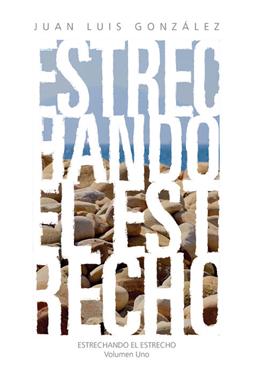
Juanlu González, durante su intervención en el GWG, presentó la sección “Estrechando el Estrecho”, convertida recientemente en una publicación en papel con el mismo nombre en formato libro donde se mezclan y complementan indisolublemente texto y fotografías. Concretamente, el primero de los tomos incluye 13 de los artículos iniciales del Volumen I de la revista OTWO aparecidos en el periodo comprendido entre finales de 2019 y principios de 2021.
El autor escogió tres historias muy diferentes para que los asistentes pudieran comprender el tipo de temáticas que se abordan en la sección, alguna de ellas localizada específicamente en Gibraltar.
Contó la historia de César Luis de Montalbán y Mazas, un arqueólogo que dedicó buena parte de su vida a la investigación del patrimonio histórico del protectorado español en el norte de Marruecos. Fue detenido literalmente en el tajo por los militares fascistas justo el mismo día que dieron el golpe de estado, el 18 de julio de 1936, cuando excavaba el crómlech de M’zora, junto a la localidad de Larache. No contentos con ello, el régimen franquista se
encargó de robar su producción científica y de crear una leyenda negra sobre su profesionalidad que, al menos en parte, aún sigue vigente.
Por otro lado, Juanlu abordó la sorprendente historia de los mapas más antiguos que se conocen de Gibraltar, confeccionados en el siglo I de nuestra era y replicados en códices bizantinos de muy diversa factura. Sobre todo se detuvo en un detalle que se repetía en varias de las versiones originales que se conservan en las mejores bibliotecas del mundo y que se han digitalizado con la calidad suficiente como para apreciar hasta los más mínimos detalles. En nuestro caso, este detalle es una especie de deidad con disco solar y báculo, colocada justo encima de la Roca, sin igual en ningún otro mapa de los que componen la publicación original de Ptolomeo, que abarca todo el mundo conocido en la época en el que falta, obviamente, el continente americano.
Por último, se centró en contar la historia de varias ciudades de las dos orillas del mediterráneo hermanadas por la historia, como Vejer de la Frontera y Chaouen y Píñar (Granada) y Tetuán.
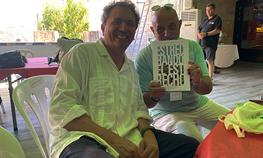
Aunque más que de las ciudades, nos contó la vida de sus protagonistas. Personajes de la Alándalus nazarí que marcharon al norte de África a reproducir su vida y costumbres ante el avance del integrismo cristiano sobre sus tierras, creando una especie de república de Nueva Granada, prácticamente independiente de facto del reino de Marruecos durante varias decenas de años.
Para finalizar, nos ofreció un resumen temático de los 33 artículos hasta ahora publicados en OTWO Magazine, e hizo un breve repaso con imágenes de los capítulos incluidos en el Volumen I, para proceder a la firma de ejemplares adquiridos por los asistentes de «Estrechando el Estrecho».

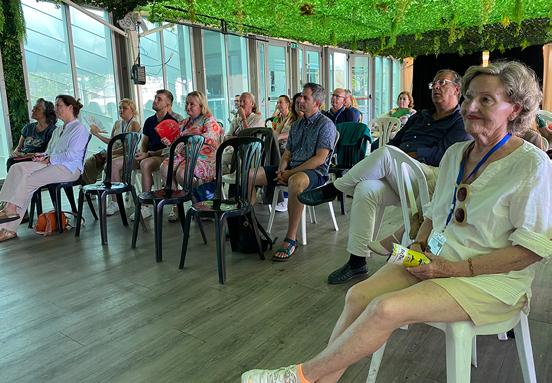

The Strait of Gibraltar is recognized as a biodiversity "hot spot", with thousands of species of flora and fauna. It is characterized by the high number of endemic species, both in the marine environment and in the continental environment.
Gibraltar, with only 7 square kilometers of extension, contains some of these species. In its territory we can also find others from North Africa, the Iberian Peninsula or even from some European countries, giving the territory the category of "ecological niche".
The most representative terrestrial species of the territory is Rossmassleria scherzeri (Zelebor, 1867), an endemism of which there are known citations until 1982 and which in 2006 was discarded as a doubtful taxon. Thanks to a two-year study of its morphology and anatomy, it now enjoys due protection, appearing on the Red List of the International Union for Conservation of Nature with the category "Near Threatened (NT)". It cohabits with Iberus marmoratus (Fèrussac, 1821), an Iberian endemism known from Cadiz, Malaga, Granada and Seville.
Other species also have their particular history in Gibraltar, such is the case of Oestophora calpeana (Morelet, 1854), described for the first time from Gibraltar, making this enclave its "Type Locality", also inhabits northern Morocco and is easily confused with Oestophora dorotheae Hesse, 1930. The latter was

cited in Gibraltar until 1957 and in Tarifa until 1991, although since then it has not been heard of again.
Cecilioides connollyi Tomlin, 1943, was also described from Gibraltar and is another exclusive endemism of its territory. It has subterranean habits and is small size, which makes it difficult to locate.
Other species present in Gibraltar are the Iberian-Iberian species, those that can be found both in northern Morocco and in the south of the Iberian Peninsula, such as the slug Deroceras ponsonbyi (Hesse, 1884) or the snail Oestophora tarnieri (Morelet, 1854) among other species.
Allochthonous species also reach the territory, those coming from other countries and that arrive through various vectors of dispersal: Hygromia cinctella (Draparnaud, 1801), through imports of ornamental plants; Papillifera papillaris (Müller, 1774), arrives from Italy and its islands, and it is not a recent fact, its expansion is known since the Roman Empire, when limestone and other materials were transported for the construction of doors and walls in the conquered territories. In Gibraltar it has been known since 2010.
In short, Gibraltar is a territory that meets the necessary conditions for a varied selection of species, some native and others foreign, where they find a small niche to establish their populations.
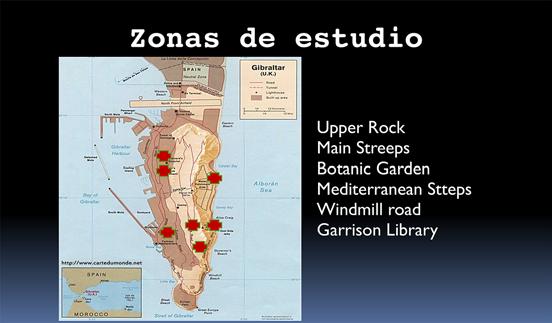
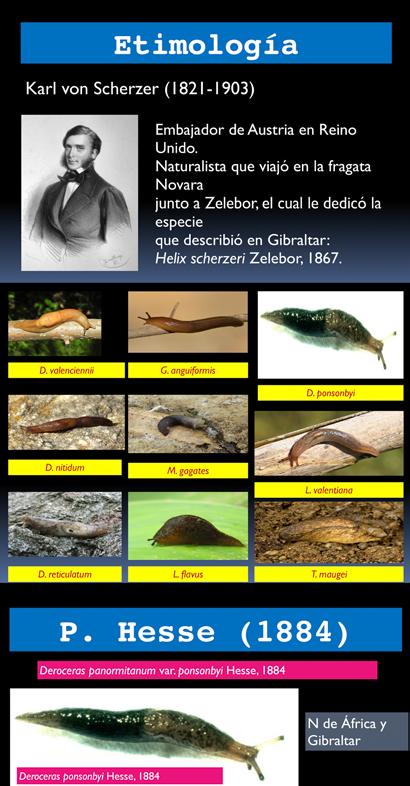
El Estrecho de Gibraltar está reconocido como un «punto caliente» de biodiversidad, con miles de especies de flora y fauna. Se caracteriza por el número elevado de especies endémicas, tanto en el medio marino como en el medio continental. Gibraltar, con apenas 7 kilómetros cuadrados de extensión, contiene algunas de éstas especies. En su territorio podemos encontrar también otras procedentes del norte de África, de la península ibérica o incluso de algunos países europeos, otorgando al territorio la categoría de «nicho ecológico».
La especie terrestre más representativa del territorio es Rossmassleria scherzeri (Zelebor, 1867), un endemismo del que se conocen citas hasta 1982 y que en 2006 fue descartado como taxón dudoso. Gracias a un estudio llevado a cabo durante dos años, tanto de su morfología como anatomía, hoy goza de la debida protección, apareciendo en la Lista Roja de la Unión Internacional para la Conservación de la Naturaleza con la categoría «Casi Amenazada (NT)». Cohabita con Iberus marmoratus (Fèrussac, 1821), un endemismo ibérico que se conoce de Cádiz, Málaga, Granada y Sevilla. Otras especies también tienen su historia particular en Gibraltar, tal es el caso de Oestophora calpeana (Morelet, 1854), descrita por primera vez de Gibraltar, convirtiendo a este enclave en su «Localidad Tipo», habita también en el norte de Marruecos y suele confundirse fácilmente con

Oestophora dorotheae Hesse, 1930. Esta última fue citada en Gibraltar hasta 1957 y en Tarifa hasta 1991, aunque desde entonces no se ha vuelto a saber de ella.
Cecilioides connollyi Tomlin, 1943, también fue descrita de Gibraltar y es otro endemismo exclusivo de su territorio. Es de hábitos subterráneos y de tamaño pequeño, lo que dificulta su localización. Otras especies presentes en Gibraltar son las ibero-rifeñas, aquellas que podemos encontrar tanto en el norte de Marruecos como en el sur de la península ibérica, tales como la babosa Deroceras ponsonbyi (Hesse, 1884) o el caracol Oestophora tarnieri (Morelet, 1854) entre otras especies. También llegan al territorio especies alóctonas, aquellas procedentes de otros países y que llegan a través de varios vectores de dispersión: Hygromia cinctella (Draparnaud, 1801), lo hace a través de las importaciones de plantas ornamentales; Papillifera papillaris (Müller, 1774), nos llega desde Italia y sus islas, y no es un dato reciente, su expansión se conoce desde el Imperio Romano, cuando se transportaba piedra caliza y otros materiales para la construcción de puertas y muros en los territorios conquistados. En Gibraltar se conoce desde el 2010. En definitiva, Gibraltar es un territorio que reúne las condiciones necesarias para una variada selección de especies, unas propias y otras ajenas, donde encuentran un pequeño nicho donde establecer sus poblaciones.
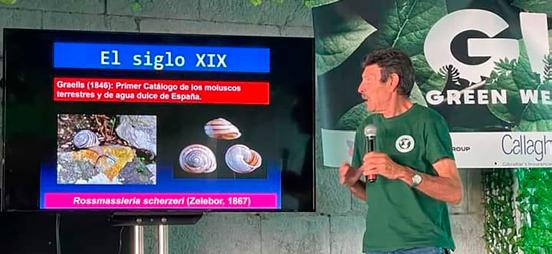
Sierra de Utrera. 200 millones de años de historia.
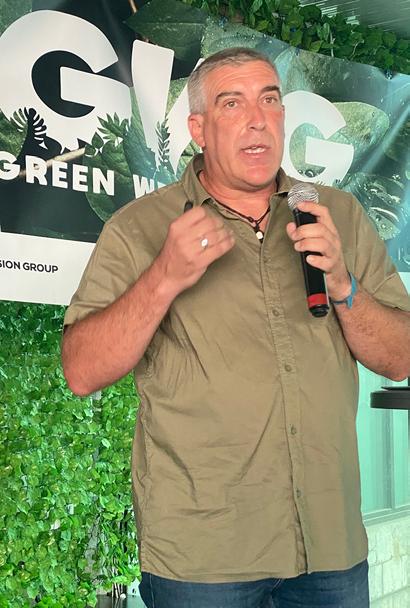
Life in caves and chasms often goes unnoticed, even by most naturalists and cavers. However, it is there where a cast of zoological groups thrives.
Caxara Speleological Research Society has been expanding the catalog of living creatures beyond the much-benefited bats.
Biospeleology is a karst science that from biology is dedicated to the study of living organisms in caves, jointly called troglofauna, where in collaboration with the Biological Station of Doñana (through the Group of Chiroptera), naturalists, experts and the team of the Society (Caxara), are photographed, documented, substrate is collected, and if necessary, the species are collected for proper identification.
Other ecosystems, more hidden, less perceptible, and even less studied, we tend to overlook them, and sometimes, to ignore them completely. This is what happens, for example, with subterranean ecosystems. Any documentation that can be provided will be a strong argument to protect these spaces (habitat) and preserve all its heritage (paintings, archaeological remains...) that we have been doing from Caxara since the Karst3C Project (Knowing, Communicating and Sharing).

La vida en cuevas y simas a menudo pasa inadvertida, incluso para la mayoría de los naturalistas y espeleólogos. Sin embargo es ahí donde prospera un elenco de grupos zoológicos.
La Sociedad de Investigaciones Espeleologícas Caxara, viene ampliando el catálogo de seres vivos más allá de los tan beneficios murciélagos.
La bioespeleología es una ciencia del karst que desde la biología se dedica al estudio de organismos vivos en cuevas, denominados conjuntamente troglofauna, donde en colaboración con la Estación Biológica de Doñana (a través del Grupo de Quiropteros), naturalistas, expertos y el equipo de la Sociedad (Caxara), se fotografían, documentan, se recoge sustrato, y en su caso se recolectan las especies para su correcta identificación.
Otros ecosistemas, más ocultos, menos perceptibles, e incluso menos estudiados, tendemos a pasarlos por alto, y en ocasiones, a ignorarlos por completo. Es lo que sucede, por ejemplo con ecosistemas subterráneos. Toda documentación que se pueda aportar supondrá argumentos firmes para proteger estos espacios (hábitat) y conservar todo su patrimonio (pinturas, restos arqueológicos...) que desde Caxara venimos realizando desde el Proyecto Karst3C (Conocer, Comunicar y Compartir).
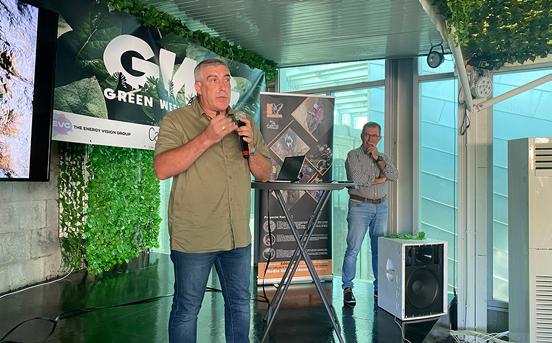

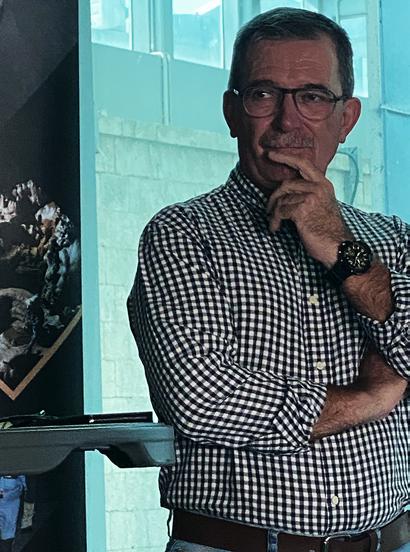
The natural and patrimonial wealth of the Strait of Gibraltar and the surrounding areas is one of the most important values of the south of the peninsula.
This Karst 3C Project was born as a clear objective of study of the karst environment, under the protection of the Sierra de la Utrera Research.
The Project carries out the investigation of the karstic relief and its geological forms, existing in the Karst of the Utrera and the Sierra Crestellina; and surrounding areas near the Strait of Gibraltar. These investigations include the study of groundwater and its behavior in these areas and its influence on the karst landscape.
The subterranean environment located in these areas houses an important geological heritage with a very special natural habitat; in addition to having been transformed into the urns of a prehistoric past of high archaeological value.
These natural values motivated the launching, at the beginning of the 80's of the last century, of a research project in the Utrera Karst, in Casares (Malaga), but with the passing of the years and the results of the research work, it has been expanding its borders, covering the environment of the Strait of Gibraltar.
The project is coordinated by a multidisciplinary team from various Andalusian Universities, with the aim of researching and enhancing the natural, geological and historical heritage of the area. One of the main lines of research is the prospecting and exploration of the cavities, and their cataloguing and topographic survey, in order to determine the subterranean phenomena of the study area. Currently the topographic works are focused on the topographic survey of cavities in 3D, which provides us with a clear picture of the subway development of an area and the links that may exist between them.
In 2015 the Project grew and a new line of research was initiated in the well known Gaucín Fault and Casares Fault, and surrounding areas, in collaboration with the Sierra Crestellina Natural Park Management. One of the main lines of research, in the Utrera Karst, is the archaeological action in the Hediondas Subterranean System, where one of the most important subway archae-
ological sites in Andalusia is located. This site has several funerary deposits from the VI millennium BC; in addition to presenting one of the few Mesolithic samples in the south of the Peninsula; a funerary deposit currently dated to the VIII millennium BC. The site presents an important material culture, tools, weapons and ceramics very significant; in addition to an important group of rock art in some galleries. This cavity was declared BIC by the Ministry of Culture. As we have already mentioned, the subway environment in the area of the Strait has a very significant cave fauna. Several years ago, together with the Gaditana Society of Natural History, a study and cataloguing of these cave species was started, focused on the existing cavities in the Karst of Utrera, Sierra Crestellina and some cavities of the Strait of Gibraltar arc, especially the study of the species located in the subway environment of Sierra Carbonera, La Línea and San Roque, including some little known bunkers that give shelter to a group of cave species very characteristic of this area. This line of research on the cave fauna had to include, of course, the cave king by of course, the king of cavers par excellence, the study of chiroptera, which is currently being carried out in collaboration with the Department of Chiroptera of the Doñana Biological Station. This Karst 3C Project has a line of work in the conservation of caves, promoting actions that lead to the evaluation of the human impact on the subterranean environment, and the correction and repair of vandalism acts on it.
As indicated by our project, the main lines of the project are Know, Communicate and Share; in this way all the results of the research and studies carried out are intended for publication, in order to involve those interested in them. For this reason, in 2016 the Speleology Workshops were launched with the collaboration of the City Council of Casares, extending this dissemination of the subway environment to the schools in the area, with the aim of instructing and involving the new generations in the knowledge, care, conservation and protection of the karst environment and its surroundings.
Thank you.

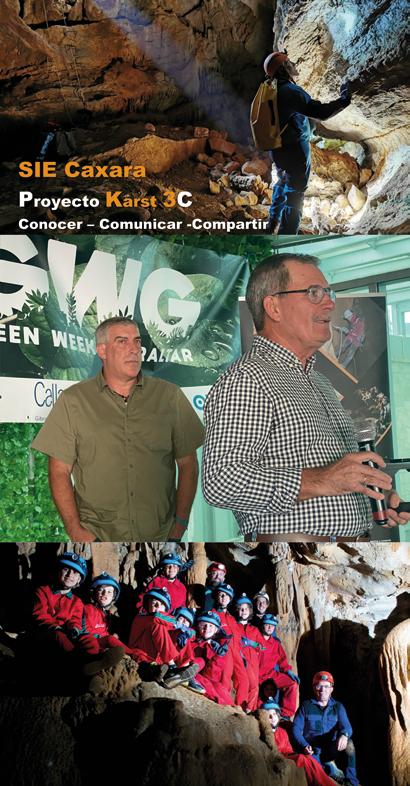
La riqueza natural y patrimonial del Estrecho de Gibraltar y las zonas que lo circundan es uno de los valores más importantes del sur de la península.
Este Proyecto Karst 3C nació como un claro objetivo de estudio del medio kárstico, amparado en las Investigaciones de la Sierra de la Utrera.
El Proyecto lleva a cabo la investigación del relieve kárstico y sus formas geológicas, existentes en el Karst de la Utrera y la Sierra Crestellina; y zonas del entorno próximas al Estrecho de Gibraltar. Dentro de estas investigaciones se incluye el estudio de las aguas subterráneas y su comportamiento en estas zonas y su influencia sobre el paisaje kárstico.
El medio subterráneo situado en estas zonas alberga patrimonio geológico importante con un hábitat natural muy especial; además de haberse transformado en las urnas de un pasado prehistórico de un alto valor arqueológico.
Estos valores naturales motivaron la puesta en marcha, a principio de la década de los 80 del siglo pasado, de un proyecto de investigación en el Karst de la Utrera, en Casares (Málaga), pero con el devenir de los años y los resultados de los trabajos de investigación ha ido ampliando sus fronteras, abarcando el entorno del Estrecho de Gibraltar.
El proyecto está coordinado por un equipo multidisciplinar, de diversas Universidades Andaluzas, con el objetivo de la investigación y puesta en valor del patrimonio natural, geológico e histórico de la zona. Una de las principales líneas de investigación es la prospección y exploración de las cavidades, y su catalogación y levantamiento topográfico, con objeto de precisar los fenómenos subterráneos de la zona de estudio. Actualmente los trabajos topográficos se centran en el levantamiento topográfico de cavidades en 3D, lo que nos facilita una imagen clara del desarrollo subterráneo de una zona y las vinculaciones que pudiesen existir entre ellas. En 2015 el Proyecto crece y se inicia una nueva línea de investigación en las conocidas Falla de Gaucín y Falla de Casares, y zonas de su entorno, en colaboración con la Dirección del Paraje Natural de Sierra Crestellina. Una de las principales líneas de investigación, en el Karst de la Utrera, es la actuación arqueológica en el Sistema Subterráneo de las Hediondas, donde se encuentra uno de los yacimientos arqueológicos subterráneos más
importantes de Andalucía. Este yacimiento presenta diversos depósitos funerarios del VI milenio a.C.; además de presentar una de las pocas muestras Mesolíticas del sur de la Península; un deposito funerario datado actualmente en el VIII milenio a.C. El yacimiento presenta una importante cultura material, herramientas, armas y cerámicas muy significativa; además de un importante grupo de arte rupestre en algunas galerías. Esta cavidad fue declarada BIC por el Ministerio de Cultura.
Como hemos comentado el medio subterráneo, de la zona del Estrecho, presenta una fauna cavernícola muy significativa. Desde hace varios años se dio comienzo junto con la Sociedad Gaditana de Historia Natural, de un estudio y catalogación de estas especies cavernícolas, centrada en las cavidades existentes en el Karst de la Utrera, Sierra Crestellina y algunas cavidades del arco del Estrecho de Gibraltar, especialmente el estudio de las especies localizadas en el medio subterráneo de Sierra Carbonera, La Línea y San Roque, incluyendo algunos bunkers poco conocidos que dan albergue a un grupo de especies cavernícolas muy características de esta zona. Esta línea de investigación de la fauna cavernícola tenía que incluir, por supuesto, al rey cavernícola por excelencia, el estudio de los quirópteros que actualmente se está realizando en colaboración con el Departamento de Quirópteros de la Estación Biológica de Doñana.
Este Proyecto Karst 3C cuenta con una línea de trabajo en la conservación de cavidades, promoviendo acciones que lleven a la evaluación del impacto humano sobre el medio subterráneo, y la corrección y reparación de actos vandálicos sobre él.
Tal como indica nuestro proyecto, las líneas principales del mismo son Conocer, Comunicar y Compartir; de ésta forma todos los resultados de las investigaciones y estudios realizados tienen como fin la publicación, con el fin de implicar a los interesados en los mismos. Por esto, en 2016 se pusieron en marcha los Talleres de Espeleología con la colaboración del Ayuntamiento de Casares, extendiendo esta divulgación del medio subterráneo los colegios de la zona, con el objetivo de instruir y hacer partícipe a las nuevas generaciones en el conocimiento, cuidado, conservación y protección del medio kárstico y su entorno. Gracias.
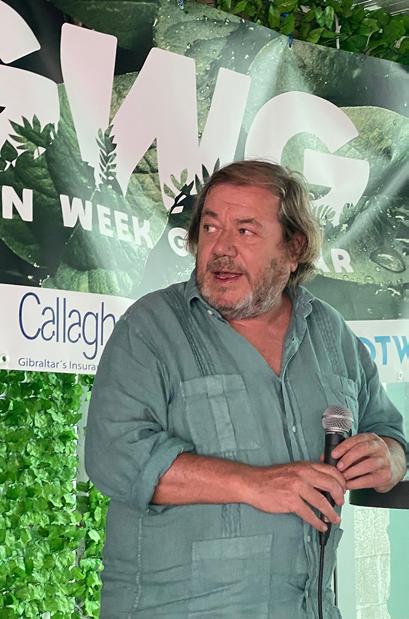
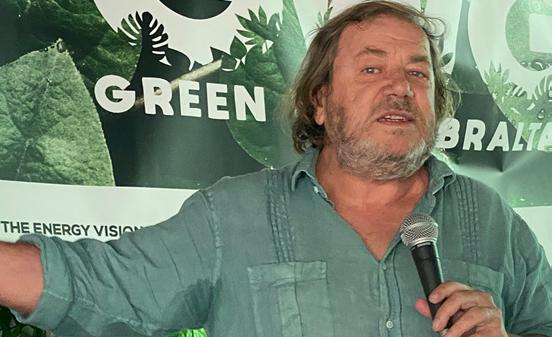
We ask the Ministry of Ecological Transition to work towards a Just Transition, to be applied in the region of Campo de Gibraltar, affected by the irreversible industrial decarbonization, as is the case of petrochemical complexes.
The civil society wants to draw attention to stop these industries dependent on fossil fuels. We demand "green jobs".
We never understood the brutal expansion of CEPSA's oil business (Barrel Fund).
The new projects coming for the industry of Campo de Gibraltar are far from decarbonization.
The announcement made by the company ENDESA that it will adapt-expand its facilities for L.N.G. (liquefied natural gas) in Los Barrios is full of confusion, namely, the strategic location of the terminal is intended for growth and diversification into new lines of business, such as LNG bunkering. And this does not fit in a decarbonization strategy.
Here we have another clear example of the imposture that hides behind "decarbonization", it seems that natural gas is an "alternative energy" and that it is part of "decarbonization". Pure falsehood, since LNG, liquefied natural gas, is a fossil fuel and, therefore, with carbon in its composition (CH4), which does not represent any "alternative" to the current and periclitated fossil fuel model.
That they do not continue to impose on us a fossil fuel that is not at all desirable, although it is true

that, compared to the stinking maritime fuel oil, it represents an environmental improvement.
That they do not store oily waste in a bay that is increasingly under attack. And not to include it in any "just transition". The coal park of the reopened thermal power plant of Los Barrios has to house clean and sustainable investments. It is urgent to close the coal-fired power plant definitively.
The manipulation of the gas companies is public, when considering the advantage of natural gas over its "fossil" brothers, comparing only the gases produced during combustion, hiding the damage caused by methane gas leaks, throughout the life cycle of natural gas, which represent a much greater damage, up to 86 times that produced by CO2, to global warming of the Earth. These methane leaks into the atmosphere cancel out any CO2 reduction benefits of replacing traditional fuels with natural gas.
In addition, this project is linked to the MARPOL waste plant, promoted by the company Gamilonia in Los Barrios, a MARPOL I waste treatment plant which will have a treatment capacity of 547,500 t/year of ship bilges.
The real "just transition" should consist of recovering the Palmones river marshes and the beaches of Rinconcillo and Guadarranque, even more threatened with these two aggressive projects, promoting clean facilities that offer decent jobs.
No more deceptions with the Just Transition and Decarbonization, mantras that hide unacceptable projects!
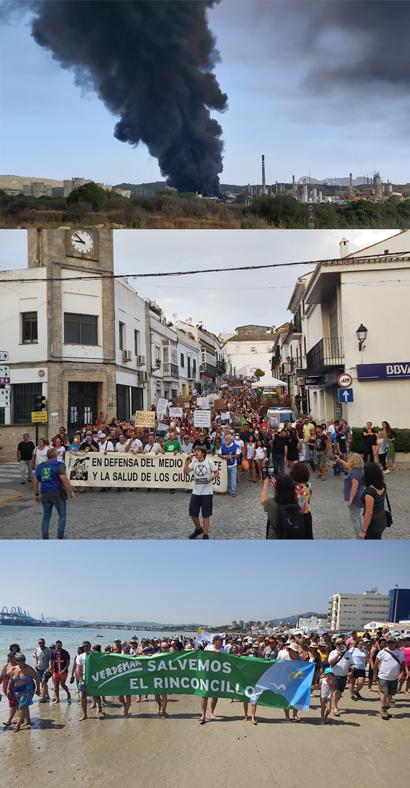
Pedimos al Ministerio de Transición Ecológica trabajar hacia una Transición Justa, que se aplique en la comarca del Campo de Gibraltar, afectada por la irreversible descarbonización industrial, como es el caso de los complejos petroquímicos.
La Sociedad civil quiere llamar la atención para frenar estas industrias dependientes de los combustibles fósiles. Demandamos “empleo verde”.
No entendimos nunca la ampliación brutal del negocio petrolífero de CEPSA (Fondo de Barril).
Los nuevos proyectos que vienen para la industria del Campo de Gibraltar se sitúan lejos de la descarbonización.
El anuncio hecho por la empresa ENDESA de que adecuará-ampliará sus instalaciones para G.N.L. (gas natural licuado) en Los Barrios está lleno de confusión, a saber, la ubicación estratégica de la terminal pretende el crecimiento y diversificación hacia nuevas líneas de negocio, como es el bunkering de GNL. Y ello no encaja en una estrategia de descarbonización.
Aquí tenemos otro ejemplo diáfano de la impostura que se esconde detrás de la "descarbonización", parece que el gas natural es una "energía alternativa" y que forma parte de la "descarbonización". Pura falsedad, ya que el GNL, gas natural licuado, es un combustible fósil y, por tanto, con carbono en su composición (CH4), que no representa ninguna "alternativa" al actual y periclitado modelo fosilífero actual.
Que no nos sigan imponiendo un combustible fósil nada deseable, aunque es cierto que, frente al apestoso fuel oíl marítimo, represente una mejora ambiental.
Que no almacenen residuos oleaginosos en una bahía cada vez más agredida. Y que no lo incluyan en ninguna "transición justa". El parque de carbones de la reabierta central térmica de Los Barrios tiene que albergar inversiones limpias y sostenibles. Es urgente cerrar la Central Térmica de carbón definitivamente.
Es pública la manipulación de las empresas gasistas, al considerar la ventaja del gas natural con respecto a sus hermanos “fósiles”, comparando solo los gases producidos durante la combustión, ocultando el daño que suponen las fugas de gas metano, en todo el ciclo de vida del gas natural, las
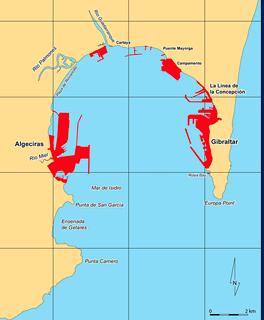
cuales suponen un daño muy superior, hasta 86 veces al que produce el CO2, al calentamiento global de la Tierra. Estas fugas de metano a la atmósfera cancelan cualquier ventaja de reducción de CO2, al preemplazar los combustibles tradicionales por el gas natural.
Además, este proyecto se une a la Planta de residuos MARPOL, que promueve la empresa Gamilonia en Los Barrios, planta de tratamiento de residuos MARPOL I que tendrá una capacidad de tratamiento de 547.500 t/año de sentinas de buques.
La verdadera “transición justa” debe consistir en recuperar las marismas del río Palmones y las playas del Rinconcillo y de Guadarranque, todavía más amenazadas con estos dos agresivos proyectos, promoviendo instalaciones limpias y que ofrezcan puestos de trabajo dignos.
¡No más engaños con la Transición justa y la Descarbonización, mantras que ocultan proyectos inaceptables!
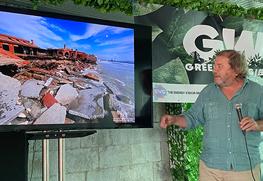


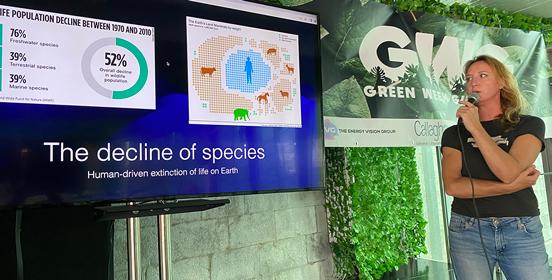
On the eve of World Environment Day, I was lucky enough to be asked, by OTWO, to present a talk on a topic for Gibraltar’s first Green Week. As co-founder of the Whole Wild World, a charity set up for rewilding, the topic was obvious: Rewilding; what is it and why does the planet need it?
We are three years into the Decade of Ecosystem Restoration and ‘rewilding’ has become a bit of a buzzword in the world of conservation. But what actually is it and what can it do for the planet?
Over the past decade and a half, I have dedicated my time and energy to improving the lives animals at the Alameda Wildlife Conservation Park and to put this tiny Gibraltar zoo on the map.
Whilst there I was able to focus my efforts on some conservation projects along the way. My journey to rewilding started in 2019 when I was lucky enough to travel to Brazil as part of a party of conservationists lead by Jersey Zoo. This project was to save two species of marmoset in the Atlantic forest, now critically endangered due to a variety of reasons, not least, habitat loss. When confronted with a acre of pristine Atlantic rainforest, surrounded by and effectively cut off by green fields of cattle, I saw the reality. The bigger picture. Single species conservation just doesn’t cut it. The conservation of species is futile without full, holistic ecosystem restoration.
So, why do we need rewilding?
Current conservation, although effective at saving species from the brink, long term, it is just not sufficient. Often not taking care of whole habitat or ecosystem and/or not working with local communities effectively. We are now seeing a move towards

a more holistic approach in most conservation work around the world.
Decline of species - many reports in recent years, highlights this huge decline in biodiversity. The future looks bleak and we desperately need to come up with ways to remedy it. It’s unlikely there will be just one answer, but some solutions deliver more effective results than others.
Rewilding offers hope to resolve many problems our planet faces in the future.
Since 2021 the Whole Wild World has run events with our partner campaign; BarefootImpact: Walk for the Wild with local schools, Climb for the Wild and last year with OTWO; Disconnect: Reconnect.
One of our primary aims is to raise awareness and encourage sustainable action and to raise funds to develop and support rewilding projects around the world, starting with native habitats and species. Our first site is in Portugal just 3.5 hours drive from Gibraltar. This 260 hectare site is just 1 hour from Faro and 40 minutes from the border with Spain. Rewilding allows nature to restore itself, as well as reintroducing essential, lost species (or similar), to help the ecosystem recover.
Rewilding offers a multi-faceted and holistic solution that not only recovers the biodiversity and habitats lost, but also effectively captures and stores carbon, helps to reverse climate change, reduces wild fires, integrates biodiversity with sustainable agriculture, but most importantly promises to reconnect people to nature and the environment, a crucial step if we are to overcome the challenges the future holds for our planet.
To find out more visit: www.wholewildworld.org.
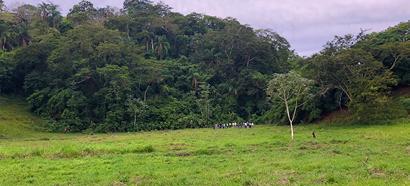
Conservationists gather to find a single marmoset group in an acre of fragmented Atlantic rainforest.
Los conservacionistas se reúnen para encontrar un único grupo de titíes en un acre de selva atlántica fragmentada.

Wild Sorraia horses, and endangered ancient breed that will be released in Portugal to help restore native ecosystems.
Caballos salvajes de Sorraia, una raza antigua en peligro de extinción que será liberada en Portugal para ayudar a restaurar los ecosistemas autóctonos
Critically endangered species; the Iberian lynx, brought back from the brink of extinction by successful conservation projects. Rewilding key areas of Portugal and Spain will provide the habitat required to sustain these increasing populations.
El lince ibérico, especie en peligro crítico de extinción, ha sido rescatado del borde de la extinción gracias a exitosos proyectos de conservación. La reforestación de zonas clave de Portugal y España proporcionará el hábitat necesario para mantener estas poblaciones en aumento.
En vísperas del Día Mundial del Medio Ambiente, tuve la suerte de que la OTWO me pidiera que diera una charla sobre un tema para la primera Semana Verde de Gibraltar. Como cofundador de Whole Wild World, una organización benéfica dedicada a la recuperación de la naturaleza, el tema era obvio:
¿Qué es y por qué lo necesita el planeta?
Llevamos tres años en la Década de la Restauración de los Ecosistemas y "rewilding" se ha convertido en una palabra de moda en el mundo de la conservación. Pero, ¿qué es realmente y qué puede hacer por el planeta?
Durante la última década y media, he dedicado mi tiempo y energía a mejorar la vida de los animales del Alameda Wildlife Conservation Park y a dar a conocer este pequeño zoo de Gibraltar.
Mientras estuve allí pude centrar mis esfuerzos en algunos proyectos de conservación.
Mi viaje hacia el rewilding comenzó en 2019, cuando tuve la suerte de viajar a Brasil como parte de un grupo de conservacionistas liderado por el zoo de Jersey. El objetivo de este proyecto era salvar dos especies de tití de la selva atlántica, ahora en peligro crítico de extinción debido a diversas razones, entre ellas la pérdida de hábitat. Cuando me enfrenté a una hectárea de selva atlántica virgen, rodeada y aislada por verdes campos de ganado, vi la realidad. El panorama general. La conservación de una sola especie no es suficiente. La conservación de especies es inútil sin una restauración completa y holística del ecosistema.
Entonces, ¿por qué necesitamos la reforestación?
La conservación actual, aunque es eficaz para salvar especies del borde del abismo, no es suficiente a largo plazo. A menudo no se ocupa de todo el hábitat o ecosistema y/o no trabaja con las comunidades locales de forma eficaz. La mayoría de los trabajos de conservación en todo el mundo se orientan hacia un enfoque más holístico.
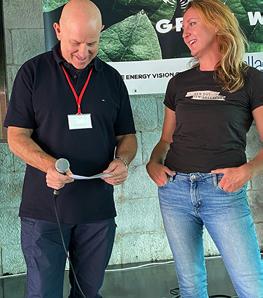
zas para resolver muchos de los problemas a los que se enfrenta nuestro planeta en el futuro.
Desde 2021, Whole Wild World ha organizado eventos con nuestra campaña asociada BarefootImpact: Walk for the Wild con escuelas locales, Climb for the Wild y el año pasado con OTWO; Disconnect: Reconnect.
Uno de nuestros principales objetivos es concienciar y fomentar la acción sostenible y recaudar fondos para desarrollar y apoyar proyectos de recuperación de la naturaleza en todo el mundo, empezando por los hábitats y especies autóctonos. Nuestro primer emplazamiento se encuentra en Portugal, a sólo 3,5 horas en coche de Gibraltar. Este paraje de 260 hectáreas está a sólo 1 hora de Faro y a 40 minutos de la frontera con España. La reforestación permite que la naturaleza se restaure a sí misma, así como la reintroducción de especies esenciales perdidas (o similares) para ayudar a la recuperación del ecosistema.

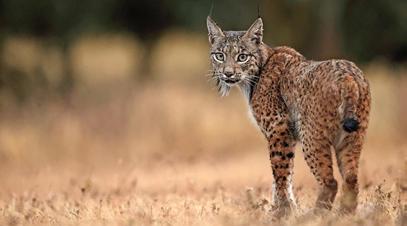
Declive de las especies: muchos informes de los últimos años ponen de relieve este enorme declive de la biodiversidad. El futuro parece sombrío y necesitamos desesperadamente encontrar la manera de remediarlo. Es poco probable que haya una única respuesta, pero algunas soluciones ofrecen resultados más eficaces que otras.
La recuperación de la naturaleza ofrece esperan-
La reforestación ofrece una solución polifacética y holística que no sólo recupera la biodiversidad y los hábitats perdidos, sino que también captura y almacena carbono de forma eficaz, ayuda a invertir el cambio climático, reduce los incendios forestales, integra la biodiversidad con la agricultura sostenible y, lo que es más importante, promete volver a conectar a las personas con la naturaleza y el medio ambiente, un paso crucial si queremos superar los retos que el futuro depara a nuestro planeta.
Para más información, visite: www.wholewildworld.org
Objetivos de Desarrollo Sotenibles (ODS)
Y Medioambiente
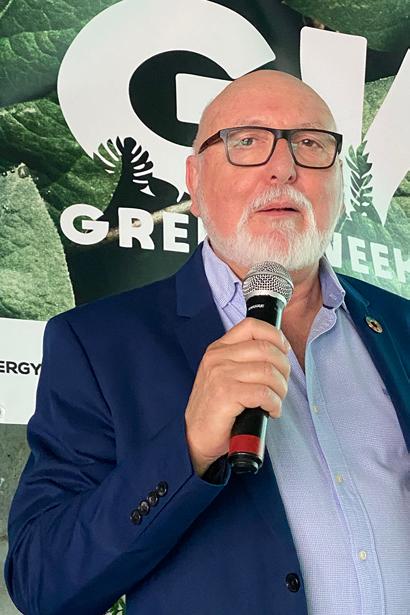
"UNE" Campo de Gibraltar for UNESCO is a non-profit organization supported by the Spanish National Commission for UNESCO and federated in the FECU at national level. Since 2009 it has been offering to the region, and also beyond its borders (different cities in Spain and Latin America), a number of quality activities within the objectives of UNESCO: Education, Science, Culture, Communication and achievement of the Sustainable Development Goals (SDGs). All this with the ultimate goal of advancing PEACE, RIGHTS and FREEDOMS for all human beings without distinction as recognized by the Charter of the United Nations to all peoples of the world.
The SDGs that contribute most directly to the Environment are: No. 7 Affordable and Clean Energy, No. 11 Sustainable Cities and Communities, No. 12 Responsible Production and Consumption, No. 13 Climate Action, No. 14 Undersea Life, No. 15 Terrestrial Life and Ecosystems, No. 17 Partnerships to Achieve the Goals. We cannot forget the importance for the environment of No. 4, Quality education for children, youth and adults, of vital importance for sustainability.
Undoubtedly, it is necessary to insist on the education of adults through courses, conferences, round tables, magazines, radio and TV preferably, where actions to favor the sustainability of the Planet are worked on. Among other actions, advice can be given on guidance on the energy efficiency of homes; disconnection of appliances while not in the home; LED lights; reduction of electricity when cooking; use of public transport, bicycles and ecological cars; solar panels in homes, schools, hospitals and offices;

limiting water and hot water, washing clothes and dishes with colder water; not consuming unnecessary plastic containers; fight against global warming, heating to a minimum and air conditioning at 22º C, consume less meat, buy less food (20 to 50% in rich countries ends up in the garbage); volunteering to remove garbage from beaches and forests; supporting organizations that protect natural areas and oceans; respecting fishing legislation; consuming products from fish farms; using recycled paper, participating in urban gardens; never consuming products from endangered species and, finally, collaborating in associations for the sustainability of the planet and in local citizen groups to deal with environmental issues.
Regarding the education of children and young people for the sustainability of the planet, a series of issues should be taken into account, such as:
- The creation by the educational authorities of volunteer work for young students: in rivers, forests, natural areas, beaches, ecological agriculture and livestock farms…
- Sustainability does not have to be a subject, it can be perfectly contained in other subjects.
- The increase of educational funds for these issues.
- The involvement of the entire school, including parents, in sustainability.
- The need for ongoing teacher training in environmental education and sustainability.
- The design by each school of solid environmental education and sustainability programs.



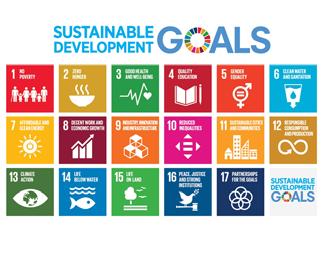
«UNE» Campo de Gibraltar para la UNESCO es una organización sin ánimo de lucro respaldada por la Comisión Nacional Española para la UNESCO y federada en la FECU a nivel nacional. Desde 2009 ha venido ofreciendo a la comarca, y también fuera de sus fronteras (distintas ciudades de España e Iberoamérica), un buen número de actividades de calidad dentro de los objetivos propios de la UNESCO: Educación, Ciencia, Cultura, Comunicación y consecución de los Objetivos de Desarrollo Sostenibles (ODS). Todo ello con el fin último de avanzar en la PAZ, LOS DERECHOS y LAS LIBERTADES para todos los humanos sin distinción como reconoce la Carta de las Naciones Unidad a todos los pueblos del mundo. Los ODS que contribuyen más directamente al Medioambiente son: Nº 7 Energía asequible y no contaminante, Nº 11 Ciudades y comunidades sostenibles, Nº 12 Producción y consumo responsables, Nº 13 Acción por el clima, Nº 14 Vida submarina, Nº 15 Vida y ecosistemas terrestres, Nº 17 Alianzas para lograr los objetivos. No podemos olvidar la importancia para el Medioambiente del Nº 4, Educación de calidad para niños jóvenes y adultos de vital importancia para la sostenibilidad.
Sin dudas hay que insistir en la educación de los adultos mediante cursos, conferencias, mesas redondas, revistas, radio y TV preferentemente,
donde se trabajen acciones para favorecer la sostenibilidad del Planeta. Entre otras actuaciones se puede asesorar sobre: orientación sobre la eficacia energéticas de los hogares; desconexión de aparatos mientras no se esté en la vivienda; luces led; reducción de la electricidad al cocinar; uso del transporte púbico, bicicletas y coches ecológicos; placas solares en viviendas, escuelas, hospitales y oficinas; limitación del agua y del agua caliente, lavar la ropa y la vajilla con agua más fría; no consumir envases de plástico innecesarios; lucha contra el calentamiento global, calefacción al mínimo y aire acondicionado a 22º C, consumir menos carne, comprar menos alimento (del 20 al 50% en los países ricos termina en la basura); voluntariado para retirar basuras de las playas y de los bosques; apoyo a organizaciones que protejas los espacios naturales y los océanos; respetar la legislación sobre la pesca; consumir productos de piscifactorías; utilizar papel reciclado, participación en huertos urbanos; nunca consumir productos de especies amenazadas y, por último, colaborar en asociaciones para la sostenibilidad del planeta y en colectivos ciudadanos locales para tratar temas medioambientales.
En cuanto a la educación de niños y jóvenes para la sostenibilidad del planeta, habría que tener en cuenta una serie de cuestiones como:
- La creación por parte de las autoridades educativas de voluntariado para jóvenes estudiantes: en ríos, bosques, espacios naturales, playas, fincas de agricultura y ganadería ecológicas…
- La sostenibilidad no tiene por qué ser una asignatura, puede estar perfectamente contenida en otras materias.
- El incremento de fondos educativos para estas cuestiones.
- La implicación de todo el centro educativo, incluidos los padres, en sostenibilidad.
- La necesidad de formación permanente del profesorado en educación medioambiental y sostenibilidad.
- El diseño por parte de cada centro educativo de programas sólidos de educación medioambiental y sostenibilidad.
Entomología en el Campo de Gibraltar.

Entomology (from the Greek éntomos meaning "insect" and logos meaning "Science") is the scientific study of Insects. There are approximately 1.3 million described species and they constitute more than two thirds of all living beings that inhabit our planet.
My name is José Luis Torres, although almost everyone in my city knows me as Pepe Torres. I was born in La Linea in 1946 and since I was a child I was attracted to in sects. I began to be interested in a more formal way when I graduated and it was when I started to contact scientific entities not only at a national level but also at an international level. Such as Shilap, The Lepidopterist Society, The Coleopterist Society, Sociedad Andaluza de Entomologia, Sociedad Gaditana de Entomologia, Sociedad Entomologica Aragonesa, Curculio Institute and others.


From 1986 I prepared many exhibitions throughout the province of Cadiz, and thanks to my contacts with so many entomologists it was possible to create a large exhibition of butterflies worldwide.
In 1999 a Museum of Natural Sciences was inaugurated in Los Barrios in which I contributed with a room dedicated to entomology and in 2007 another exhibition was inaugurated in my city and in the Museum of the Isthmus. Three rooms dedicated to all orders of insects and I even added an area dedicated to crustaceans. Currently this exhibition is located in the José Cruz Herrera Museum in La Línea de la Concepción.
I would like to take this opportunity to remember my two great friends Mr. José Ramírez and Mr. Juan de Ferrer who were my teachers and who unfortunately are no longer with us. Also, to the Agency of Environment and Water of Andalusia for having provided me for so many years the necessary permits for the study of nature in the provinces of Cadiz and Malaga.
Places where I have found eleven new species among Coleoptera, Hemiptera and Lepidoptera.
La Entomología (del griego éntomos que significa «insecto» y logos que significa «Ciencia» es el estudio científico de los Insectos. Aproximadamente existen la cantidad de 1.3 millones de especies descritas y constituyen más de los dos tercios de todos los Seres vivos que habitan nuestro Planeta. Mi nombre José Luis Torres, aunque casi todo el mundo en mi ciudad me conoce por Pepe Torres, nací en La Linea en el año 1946 y desde pequeño me atraían los Insectos. Empecé a interesarme de una forma más formal cuando me licencié y fue cuando em- pecé a contactar con entidades científicas no solo a nivel nacional sino también internacional.
Como Shilap, The Lepidopterist Society, The Coleopterist Society, Sociedad Andaluza de Entomologia, Sociedad Gaditana de Entomologia, Sociedad Entomologica Aragonesa, Curculio Institute y otras.
A partir del año 1986 preparé muchas exposiciones en toda la provincia de Cádiz, y gracias a mis contactos con tantísimos entomólogos fue posible crear una gran muestra de mariposas a nivel mundial.
En el año 1999 se inauguró un Museo de Ciencias Naturales en Los Barrios en el cual contribuí con una sala dedicada a la entomología y en el año 2007 se inauguró en otra exposición en mi ciudad y en el Museo del Istmo. Tres salas dedicadas a todos los órdenes de insectos e incluso agregué una zona dedicada a los crustáceos. Actualmente esta exposición se encuentra ubicada en el Museo José Cruz Herrera de La Línea de la concepción.
Quiero aprovechar esta ocasión para recordar a mis dos grandes amigos D. José Ramírez y D. Juan de Ferrer que fueron mis maestros y que desgraciadamente ya no están entre nosotros. También a la Agencia de Medio Ambiente y Agua de Andalucía por haberme proporcionado durante tantos años los permisos necesarios para el estudio de la naturaleza en las provincias de Cádiz y Málaga.
Lugares donde he encontrado once nuevas especies entre coleópteros, hemípteros y lepidópteros.
 Anthony Pitaluga
Anthony Pitaluga

Preface
I will be discussing a series of travelogues I wrote about a road trip I undertook with my wife in August 2021. The return self-driven journey took us from our home in Gibraltar to Bordeaux in southwestern France.
The aim of the talk is to define travel writing as a genre, and to present the methodology I employed to create the series.
Travel writing is a notoriously difficult genre to define because of its essential quality of multiplicity. Different genres are likely to end up in the same travel writing space. Examples include private diaries, journals, essays, short stories, novels, poems, political commentary, spiritual quests (pilgrimages), exploration accounts, personal memoirs, guide books and so forth. Travel writing may be described as a hybrid genre that straddles categories and disciplines. In this there is general consensus. However, a pure definition is illusive because there is little or no consensus. Two basic schools of thought exist, firstly the literary, usually written in the first person, subjectively expressing the author’s sensibilities in a separate and identifiable literary style. The aim is to provoke a certain narrative pleasure within the reader, in a quest to entertain and inform. Supporters of the literary viewpoint, differentiate it from other related texts such as travel guide books or holiday brochures which serve a purely utilitarian purpose and have no narrational presence. The opposing viewpoint encompasses both the literary and the utilitarian. Regardless of objectivity or subjectivity, proponents of this idea postulate that anything written on travel constitutes travel writing. This school of thought supports the idea that travel writing can exist between the literary on the one hand, and the solely utilitarian on the other.
If you visit a bookshop and look at the travel section, you will find a diverse range of literature. Hence
the flexibility of travel writing in terms of its genre, its reception and its format makes it extremely challenging to define.
Reading is a fundamental requirement for writing because it can help improve language skills, expands imagination, inspires, and develops critical thinking abilities. Reading can be like a sort of travel, and travelling is a wonderful way of expanding our horizons.
Argentine writer Jorge Luis Borges in "The cult of the book, the cult of Borges" published in 1977 said: “Reading is harder than writing […]”
Borges discusses the idea that reading is a more demanding and complex activity than writing. His thesis lends credibility to the notion that reading requires a greater level of engagement and intellectual effort from the reader than writing does from a writer. Writing would be utterly unattainable for me without reading.
To write the series, I conducted extensive research before traveling, continued my research on location, and compiled all the information I had gathered upon completing the journey.
The composition stage involved the creation of a general outline or framework that helped me represent the structure and flow of what I intended to write.
The framework initiated an iterative cycle from which an unspecified number of article drafts emerged. The first draft was just me telling myself the story.
Proof reading ends the composition stage.
The finished articles are subsequently submitted to the magazine editorial board for correction, translation, and publication.

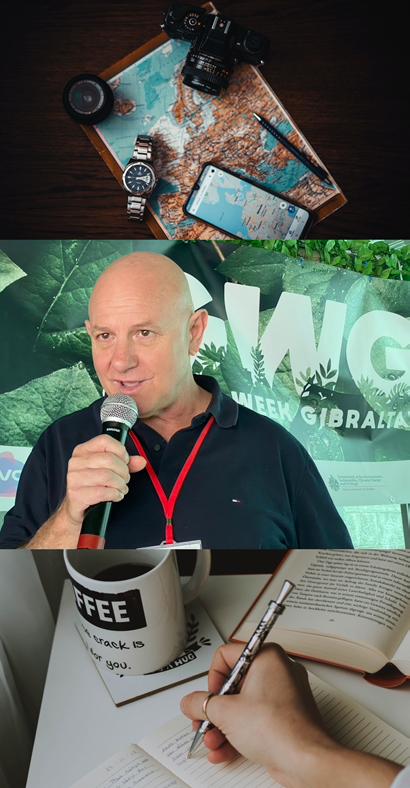
Prefacio
Voy a comentar una serie de crónicas de viaje que escribí sobre un viaje por carretera que emprendí con mi mujer en agosto de 2021. El viaje de ida y vuelta nos llevó desde nuestro hogar en Gibraltar hasta Burdeos, en el suroeste de Francia.
El objetivo de la charla es definir la escritura de viajes como género y presentar la metodología que empleé para crear la serie.
Definición
La escritura de viajes es un género notoriamente difícil de definir debido a su cualidad esencial de multiplicidad. Es probable que diferentes géneros acaben en el mismo espacio de la escritura de viajes. Algunos ejemplos son los diarios privados, las revistas, los ensayos, los relatos cortos, las novelas, los poemas, los comentarios políticos, las búsquedas espirituales (peregrinaciones), los relatos de exploración, las memorias personales, las guías turísticas, etc. La literatura de viajes puede describirse como un género híbrido a caballo entre categorías y disciplinas. En esto hay consenso general.
Sin embargo, una definición pura es ilusoria porque hay poco o ningún consenso. Existen dos corrientes básicas: la literaria, que suele escribirse en primera persona y expresa subjetivamente la sensibilidad del autor en un estilo literario propio e identificable. El objetivo es provocar un cierto placer narrativo en el lector, en una búsqueda por entretener e informar. Los partidarios del punto de vista literario lo diferencian de otros textos afines, como las guías de viaje o los folletos de vacaciones, que tienen una finalidad puramente utilitaria y carecen de presencia narrativa.
El punto de vista opuesto engloba tanto el literario como el utilitario. Independientemente de la objetividad o la subjetividad, los defensores de esta idea postulan que todo lo que se escriba sobre viajes constituye literatura de viajes. Esta escuela de pensamiento apoya la idea de que la escritura de viajes puede existir entre lo literario, por un lado, y lo exclusivamente utilitario, por otro.
Si uno visita una librería y echa un vistazo a la sección de viajes, encontrará una variada gama de
literatura. De ahí que la flexibilidad de la literatura de viajes en cuanto a su género, su recepción y su formato constituya un gran reto a la hora de definirla.
Metodología
Lectura
La lectura es un requisito fundamental para la escritura porque puede ayudar a mejorar las habilidades lingüísticas, amplía la imaginación, inspira y desarrolla la capacidad de pensamiento crítico. Leer puede ser como una especie de viaje, y viajar es una forma maravillosa de ampliar nuestros horizontes.
El escritor argentino Jorge Luis Borges en "El culto al libro, el culto a Borges", publicado en 1977, decía:
"Leer es más difícil que escribir [...]".
Borges discute la idea de que leer es una actividad más exigente y compleja que escribir. Su tesis da credibilidad a la noción de que la lectura requiere un mayor nivel de compromiso y esfuerzo intelectual por parte del lector que la escritura por parte del escritor.
La escritura me resultaría totalmente inalcanzable sin la lectura.
Para escribir la serie, realicé una investigación exhaustiva antes de viajar, continué investigando in situ y recopilé toda la información que había reunido al finalizar el viaje.
La fase de composición supuso la creación de un esquema o marco general que me ayudó a representar la estructura y el flujo de lo que pretendía escribir.
El marco inició un ciclo iterativo del que surgió un número indeterminado de borradores del artículo. El primer borrador era sólo yo contándome la historia.
La lectura de prueba pone fin a la fase de composición.
Posteriormente, los artículos acabados se presentan al consejo editorial de la revista para su corrección, traducción y publicación.

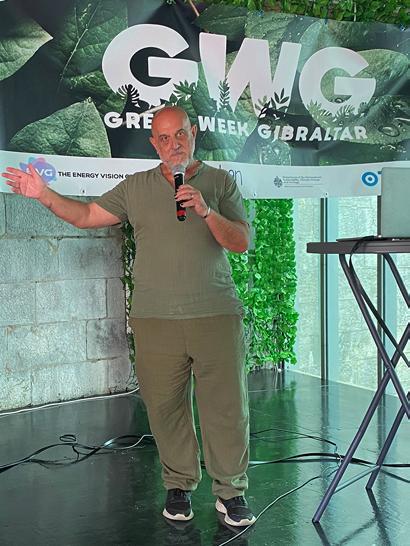
OTWO is not born from an idea. Different projects, different opportunities, different routes that seem to go in different directions, suddenly meet and explode together. Merging into something different, something new. OTWO does not have a local goal; it has a global mission.
OTWO apart from its headquarters in Gibraltar, we have opened the logistics area in Spain. And we are already working on launching our platform in the UK, Germany, Portugal and Japan.
If you are a lover of nature, ecotourism and activities in natural parks, OTWO is your magazine. Dedicated to the environment, heritage and circular economy. We are managing the printing of 5,000 copies per month.
In addition to our digital edition with thousands of subscribers. OTWO is creating trend. 140 pages in print. OTWO is a non-profit publication. 47 issues published. More than five thousand pages, four thousand five hundred photographs, one hundred illustrations, seventy infographics and data visualizations, eight hundred pages of advertising and more than nine hundred reports on the environment, health, tourism, heritage, educational activities in natural spaces and circular economy. More than a million words to visualize what is happening.
Perhaps the key word: in numbers of subscribers and readers. In the academic level of collaborations, in proposals for new projects and events. We are growing in influence.
Ephemeris
2019 In August we present OTWO 1.
2020 In April we present our digital edition.
2021 Good Friday Cycle. Gibraltar. Agreement with COAMBA. World Bike Day event. Gibraltar.
2022 Agreement with Motricity. Registration in the Scientific Research Service of Andalusia (SICA). of Andalusia (SICA). Sustainable transport: Gibraltar bus campaign.
Acquisition of Eco Passion organic products store. Renewed agreement with Coamba.
Eco Festival. Gibraltar. Signing of agreement with the College of Art of Cadiz: Students in "Prácticas de Empresa".
2023: Opening of Ecological Efficiency Centre.
Organization of the first Green Week Gibraltar. And the Eco Festival Second Edition for September of this memorable year.
We are currently working on different business projects such as Eco Traveller, We Green Print and our versions of OTWO in German and Japanese, two strategic markets we wish to access. Our readers will be the first to know about these firsts. We are also managing the return to paper with a print run of more than five thousand copies and a version for children called OTWO Kids. We are committed to environmental education.
Awards
2020: Nautilus Awards: Most influential media award.
2020: Finalist of the Gibraltar Sustainable Commitment Awards.
2021: Nautilus Awards: Green Beacon.
2022: Advantage Austria: Energy Globe Award. National Award.
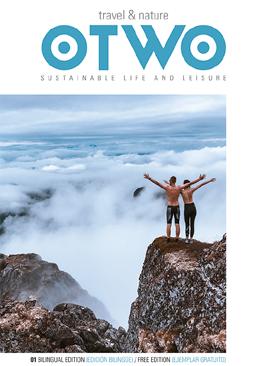

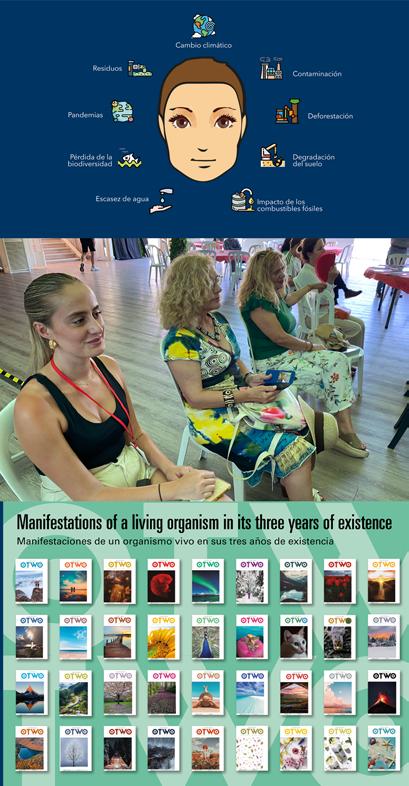
OTWO no nace de una idea. Diferentes proyectos, diferentes oportunidades, diferentes rutas que parecen ir en diferentes direcciones, de repente se encuentran y explotan juntas. Fusionándose en algo diferente, en algo nuevo. OTWO no tiene una objetivo local, tiene una misión global.
OTWO aparte de su oficinas centrales en Gibraltar, hemos abierto el área de logística en España. Y ya estamos trabajando en el lanzamiento de nuestra plataforma en el Reino Unido, Alemania, Portugal y Japón.
Si eres amante de la naturaleza, el ecoturismo y las actividades en los parques naturales, OTWO es tu revista. Dedicada al medio ambiente, el patrimonio y la economía circular. Estamos gestionando la impresión de 5.000 ejemplares mensuales.
Además de nuestra edición digital con miles de suscriptores. OTWO está creando tendencia.
140 páginas impresas. OTWO es una publicación sin ánimo de lucro.
47 números editados. Más de cinco mil páginas, cuatro mil quinientas fotografías, cien ilustraciones, setenta infografías y visualizaciones de datos., ochocientas páginas de publicidad y más de novecientos reportajes sobre medioambiente, salud, turismo, patrimonio, actividades educativas en espacios naturales y economía circular. Más de un millón de palabras para visualizar lo que está ocurriendo.
Creciendo
Quizá la palabra clave: en números de suscriptores y lectores. En el nivel académico de las colaboraciones, en propuestas de nuevos proyectos y eventos. Crecemos en influencia.
Efemérides:
2019 En agosto presentamos OTWO 1.
2020 En abril presentamos nuestra edición digital.
2021 Ciclo Viernes Santo. Gibraltar. Acuerdo con COAMBA. Evento del Día Mundial de la Bicicleta. Gibraltar.
2022 Acuerdo con Motricity. Inscripción en el Servicio de Investigación Científica de Andalucía (SICA). Transporte sostenible: Campaña en los autobuses de Gibraltar. Adquirimos la tienda de productos ecológicos
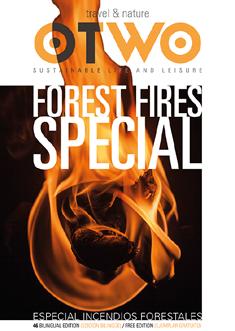
Eco Passion. Renovamos acuerdo con Coamba. Eco Festival. Gibraltar. Firma del acuerdo con el Colegio de Arte de Cádiz: Estudiantes en «Prácticas de Empresa».
2023: La apertura de Ecological Efficiency Centre. Organización del primer Green Week Gibraltar. Y el Eco Festival Segunda Edición par septiembre de este memorable año.
Actualmente estamos trabajando en diferentes proyectos empresariales como Eco Travelle, We Green Print o nuestra versiones de OTWO en alemán y japonés, dos mercados estratégicos al que deseamos acceder. Nuestros lectores serán los primeros en tener información de estas primicias. También estamos gestionando la vuelta al papel con una tirada de más de cinco mil ejemplares y una versión para niños llamada OTWO Kids. Apostamos por la educación ambiental.
2020: Premios Nautilus: Premio al medio más influyente.
2020: Finalista de los Premios Gibraltar Compromiso Sostenible.
2021: Premios Nautilus: Faro Verde. 2022: Advantage Austria: Premio Energy Globe. National Award.

To help spread the awareness of World Environment Day 2023 we invited businesses to get creative and get the town looking green this year. Shop owners were invited to join our Window Shop Competition and spread positive awareness to our natural environment and get a good natural vibe going across town using the theme Ecosystem Restoration – Our World, Our Responsibility.
Participation was easy and free with simply completing an online form where they were provided with ideas and guidelines on the competition. Judging took place between 29th May and 2nd June 2023 and winners were announced at the Green Week Event that same weekend at Campion Park.
Various local companies participated in this competition from Lewis Stagnetto, Trafalgar Pharmacy, The Wine Shop and many more got creative with environmentally friendly and sustainable choices when designing their window displays. A special note was

taken from the judges to businesses who promoted and demonstrated the following elements: reusing or repurposing materials found in their shops and businesses, used recycled materials in the design, the use of energy efficient lighting i.e., solar lighting and had an overall incorporation of a sustainable message within the design.
Trusted Novus Bank have been the 2023 winners of this first ever world environment day window shop competition. The award was presented to the team who lead this initiative by Vanessa Byrne, Director of OTWO Magazine. Vanessa added “It is so great to see large corporate companies making such a bold statement to create awareness in our community to the climate crisis we are seeing unfold. This is the first of this annual competition and we are so eager to see this grow and help spread the awareness to preserve our natural environment, after all it is Our World, Our Responsibility.”
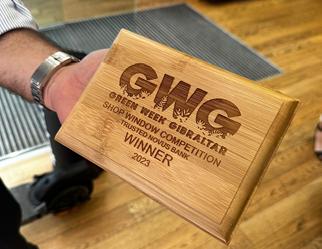
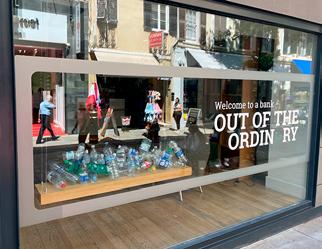
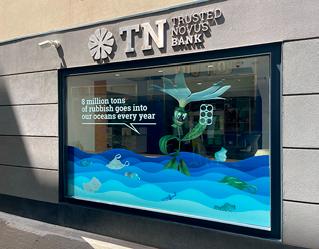
Para ayudar a difundir la concienciación sobre el Día Mundial del Medio Ambiente 2023, invitamos a los comercios a ser creativos y conseguir que la ciudad luzca verde este año. Invitamos a los propietarios de los comercios a participar en nuestro Concurso de Escaparates para difundir una conciencia positiva sobre nuestro entorno natural y crear un buen ambiente natural en toda la ciudad bajo el lema Restauración de los ecosistemas: nuestro mundo, nuestra responsabilidad. La participación era fácil y gratuita: bastaba con rellenar un formulario en línea en el que se proporcionaban ideas y directrices sobre el concurso. El jurado se reunió entre el 29 de mayo y el 2 de junio de 2023 y los ganadores se dieron a conocer en la Semana Verde celebrada ese mismo fin de semana en Campion Park.
Varias empresas locales participaron en este concurso, como Lewis Stagnetto, Trafalgar Pharmacy, The Wine Shop y muchas otras, que se mostraron creativas con opciones sostenibles y respetuosas con el medio ambiente a la hora de diseñar sus escaparates. El jurado concedió una mención especial a las empresas que promovían y demostraban los siguientes elementos: reutilización o reaprovechamiento de materiales de sus tiendas y negocios, uso de materiales reciclados en el diseño, uso de iluminación eficiente desde el punto de vista energético, es decir, iluminación solar, e incorporación general de un mensaje sostenible en el diseño. Trusted Novus Bank ha sido el ganador 2023 de este primer concurso de escaparates del Día Mundial del Medio Ambiente. Vanessa Byrne, Directora de OTWO Magazine, entregó el premio al equipo que lideró esta iniciativa. Vanessa añadió: «Es estupendo ver que grandes empresas hacen una declaración tan audaz para concienciar a nuestra comunidad de la crisis climática que estamos viendo. Esta es la primera edición de este concurso anual y estamos ansiosos por ver cómo crece y ayuda a difundir la concienciación para preservar nuestro entorno natural, después de todo es Nuestro Mundo, Nuestra Responsabilidad».



Perspectivas del sector : Apostar por un futuro más verde: perspectivas ESG para 2023


Environmental Social Governance (ESG), is a widely discussed and important topic which has become prominent over the last couple of years. ESG is the term used to identify and evaluate matters that are traditionally associated with sustainability and corporate responsibility – focusing on the impact on the environment and wider society.
A common misconception is that ESG only focuses on climate change and environmental performance, but the social aspects and a business’s governance of them are equally important.
ESG is very important to consumers because it gives them confidence that their product or service, is being socially responsible. It is also important to consumers when investing sustainably because they can help other corporations that are in alignment with their values.
Here at Trusted Novus Bank (TNB), our ESG story plays a strong part in our strategy in 2023 and going forward. Our strong values in terms of sustainability, transparency, and equality (amongst our other values) are closely related to ESG. For that reason, TNB wants to strengthen its efforts in all three areas of environmental, social and governance, and even surpass what we are expected to deliver as a local bank. Our future mission is to become the Green Bank of Choice. Our vision is for TNB to become a leading corporate citizen in respect of ESG. Our approach for 2023 is to improve and build on our existing approach and to also focus on new initiatives. We want to meet international standards of good practice.
The topics we wish to address within our longterm strategy span from healthy corporate culture, staff wellbeing and charity work, to consumer protection, carbon offsetting and to implementing greener products throughout our products and services.
For us here at TNB, it is important to communicate our progress both internally to colleagues as well as externally to customers and our local community.
This is currently an exciting time for TNB, for both those working within the bank as well as for our customers, and we are looking forward to seeing what the future holds, especially in terms of ESG.
La Gobernanza Social y Medioambiental (ASG) es un tema importante y ampliamente debatido que ha cobrado protagonismo en los últimos años. ESG es el término utilizado para identificar y evaluar cuestiones que tradicionalmente se asocian con la sostenibilidad y la responsabilidad corporativa, centrándose en el impacto sobre el medio ambiente y la sociedad en general.
Una idea errónea muy extendida es que los ASG sólo se centran en el cambio climático y los resultados medioambientales, pero los aspectos sociales y la gobernanza de una empresa al respecto son igualmente importantes.
La ASG es muy importante para los consumidores porque les da confianza en que su producto o servicio es socialmente responsable. También es importante para los consumidores a la hora de invertir de forma sostenible porque pueden ayudar a otras empresas que están en consonancia con sus valores.
Aquí, en Trusted Novus Bank (TNB), nuestra historia ESG desempeña un papel importante en nuestra estrategia en 2023 y en el futuro. Nuestros sólidos valores en materia de sostenibilidad, transparencia e igualdad (entre otros) están estrechamente relacionados con los ASG. Por ello, el TNB quiere redoblar sus esfuerzos en los tres ámbitos: medioambiental, social y de gobernanza, e incluso superar lo que se espera de nosotros como banco local.
Nuestra misión futura es convertirnos en el banco verde de elección. Nuestra visión es que el TNB se convierta en un ciudadano corporativo líder en materia de ESG. Nuestro enfoque para 2023 es mejorar y desarrollar nuestro enfoque actual y centrarnos en nuevas iniciativas. Queremos cumplir las normas internacionales de buenas prácticas.
Los temas que deseamos abordar dentro de nuestra estrategia a largo plazo abarcan desde la cultura corporativa saludable, el bienestar del personal y las obras de caridad, hasta la protección del consumidor, la compensación de emisiones de carbono y la implantación de productos más ecológicos en todos nuestros productos y servicios.
Para nosotros, en TNB, es importante comunicar nuestros progresos tanto internamente a los compañeros como externamente a los clientes y a nuestra comunidad local.
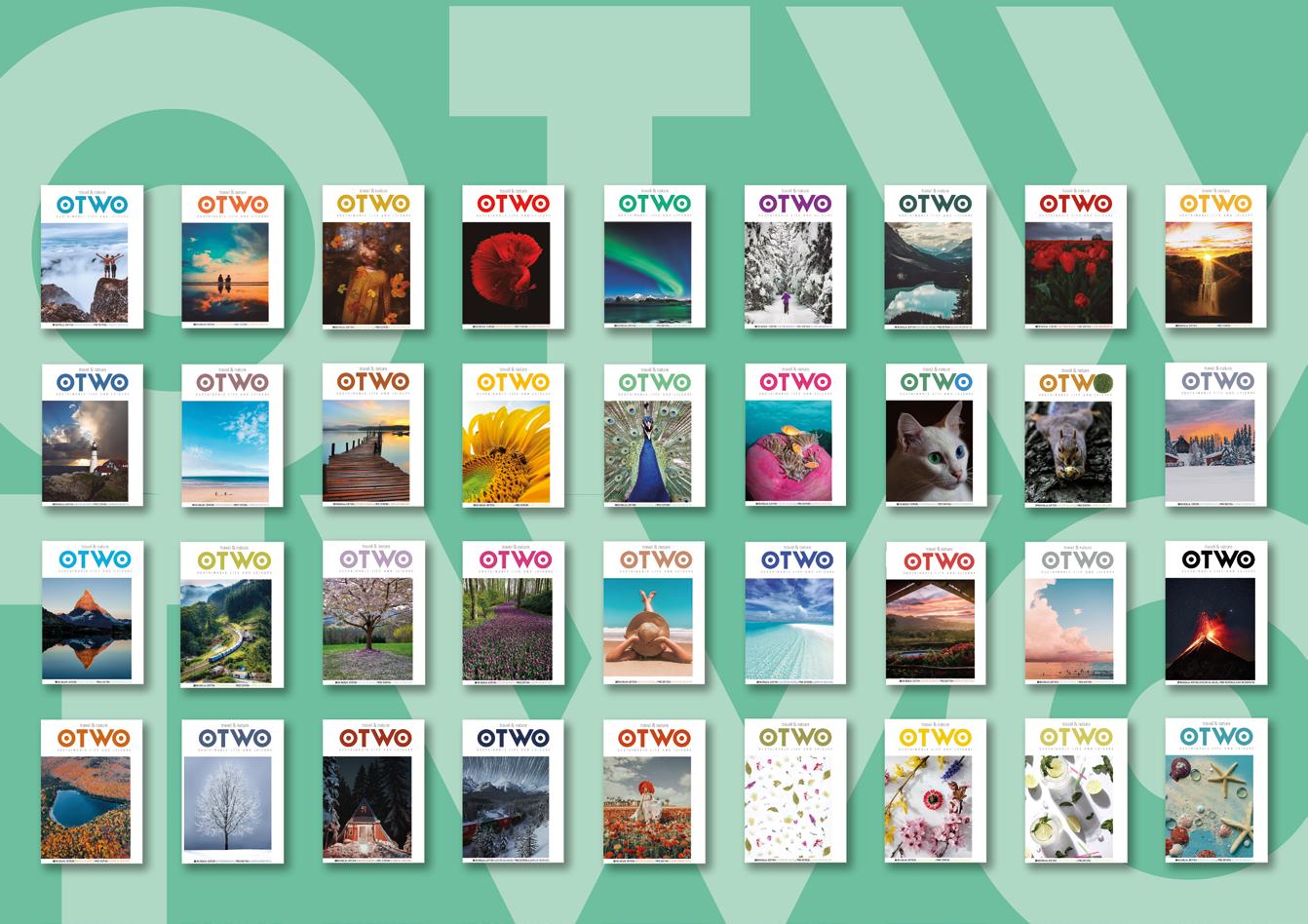
Manifestaciones de un organismo vivo en sus tres años de existencia
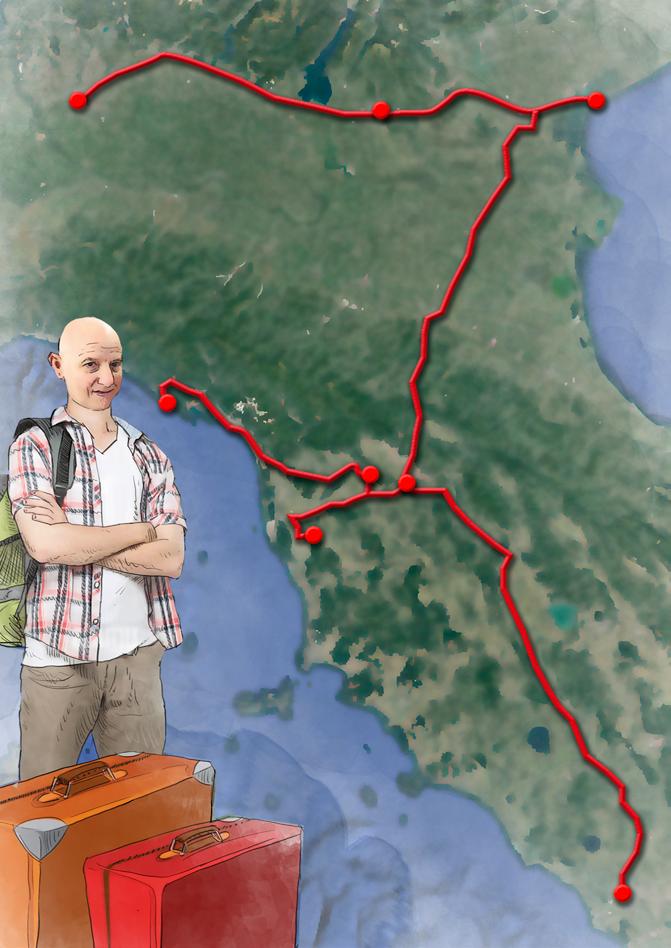
Part 1.
La experiencia italiana:. Capítulo seis.
Parque Nacional de Cinque Terre. Parte 1.
Text and photographs: Anthony Pitaluga.
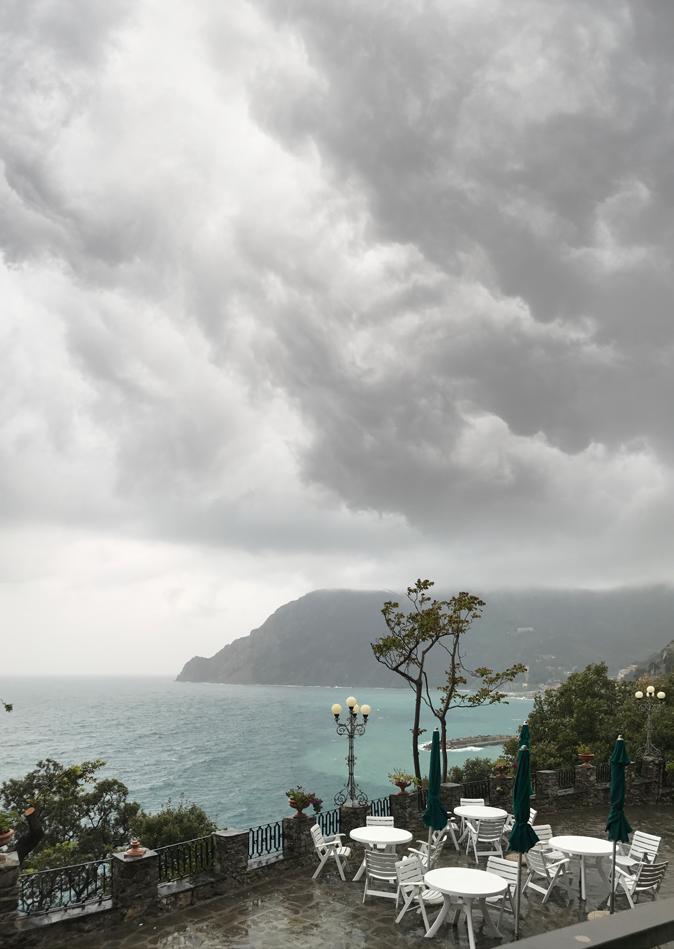
Overcast skies and intermittent drizzle had been the dominant weather throughout the duration of our stay in Pisa, our previous port of call. However, the meteorology took a turn for the worse as we drove out of the city towards Cinque Terre national park —our next destination.
Under the influence of a sharp westerly breeze, a menacing mass of black rain clouds gathered forebodingly. A sudden intense flash of lightning zigzagged unpredictably across the tenebrous morning sky, mercilessly striking the shadowy hills in the distance. In the blink of an eye, the heavens opened, and a monumental downpour precipitated furiously from the dark sky above. A soft rumble of thunder followed, barely audible, a sure indication that the centre of the menacing low-pressure system was some miles away. A storm’s distance may be estimated by counting the number of seconds elapsed between the flash of lightning and the clap of thunder that usually follows. The standard convention is simple, for every five seconds elapsed between the lightning and thunder, the storm will lie approximately one and a half kilometres away.
We drove out of Pisa through the SS1 which connects with the E80 transcontinental roadway heading north. Thick veils of unrelenting rain obscured visibility, making driving conditions dangerous. About half an hour out of Pisa the weather deteriorated further, forcing a stop we had not planned.
Cielos nublados y lloviznas intermitentes habían sido el tiempo dominante durante toda nuestra estancia en Pisa, nuestro anterior puerto de escala. Sin embargo, la meteorología empeoró cuando salimos de la ciudad en dirección al parque nacional de Cinque Terre, nuestro próximo destino.
Bajo la influencia de una fuerte brisa del oeste, una amenazadora masa de nubes negras de lluvia se agolpaba premonitoriamente. Un intenso y repentino relámpago zigzagueó imprevisiblemente por el tenebroso cielo matutino, golpeando sin piedad las sombrías colinas en la distancia. En un abrir y cerrar de ojos, los cielos se abrieron y un monumental aguacero se precipitó con furia desde el oscuro cielo. Le siguió un suave retumbar de truenos, apenas audible, indicio seguro de que el centro del amenazador sistema de bajas presiones se encontraba a unos kilómetros de distancia. La distancia de una tormenta puede estimarse contando el número de segundos transcurridos entre el relámpago y el trueno que suele seguirle. La convención estándar es sencilla: por cada cinco segundos transcurridos entre el relámpago y el trueno, la tormenta estará aproximadamente a un kilómetro y medio de distancia.
Salimos de Pisa por la SS1, que conecta con la carretera transcontinental E80 en dirección norte. Gruesos velos de lluvia incesante oscurecían la visibilidad, haciendo peligrosas las condiciones de conducción. A una media hora de Pisa, el tiempo
Clouds that had descended to almost ground level, engulfed the road in a blanket of thick opaque fog. The wind had picked up, and the intensity of the rain appeared to increase with every kilometre we covered. Feeling vulnerable and exposed, we decided to stop at the nearest service station hoping the disastrous weather conditions might ease.
It took around an hour and a half for the weather to improve, in which time we drank copious amounts of coffee. The lashing rain decreased to a drizzle, and importantly for driving, the fog lifted. At that point we resumed our journey to the Cinque Terre national park, in the Province of La Spezia, which forms part of the Liguria region. Situated on the north western coast of Italy, Liguria borders France to the west.
From Pisa, the distance to Cinque Terre is about one hundred and fifteen kilometres. Under normal driving conditions this distance can easily be covered in about ninety minutes. However, more than two hours had gone by since we left Pisa, and there was another sixty kilometres still to cover. The weather had improved to a point, however the driving conditions warranted caution.
Despite the harsh weather, the route to the Cinque Terre national park was delightful under the stormy circumstances. The road moves across beautiful country, penetrating some of Italy's most stunning coastal scenery. Approaching the coast, the change in the landscape manifests itself imposingly. The road follows a serpentine path along the littoral, presenting spectacular perspectives of the Ligurian Sea and its jagged shoreline. The steep cliffs and rocky outcrops that surge majestically from the sea, evoke a feeling of awe and wonder, inspired by the overwhelming power and dynamism of nature. One feels infinitesimally small in the face of such raw magnificence. The crashing waves and tumultuous waters surrounding the natural colossi, impose a sense of power and peril. Immanuel Kant, the 18th-century German philosopher, in his Critique of Judgment published in 1790, described this feeling as ‘the sublime’. Boundless and powerful natural phenomena that transcends all human understanding.
The Cinque Terre National Park, described in medieval times as the “five lands” —Cinque means five, and Terre means lands or territories —lies nestled between Genoa and Pisa, in a mountainous and al-
empeoró aún más, lo que obligó a hacer una parada que no habíamos planeado. Las nubes, que habían descendido hasta casi el nivel del suelo, envolvieron la carretera en un manto de espesa niebla opaca. El viento había arreciado y la intensidad de la lluvia parecía aumentar con cada kilómetro que recorríamos.
Sintiéndonos vulnerables y expuestos, decidimos parar en la estación de servicio más cercana con la esperanza de que las desastrosas condiciones meteorológicas remitieran.
El tiempo tardó una hora y media en mejorar, durante la cual bebimos abundante café. La lluvia amainó hasta convertirse en llovizna y, lo que es más importante para la conducción, la niebla se disipó. En ese momento reanudamos el viaje hacia el parque nacional de Cinque Terre, en la provincia de La Spezia, que forma parte de la región de Liguria. Situada en la costa noroccidental de Italia, Liguria limita al oeste con Francia.
Desde Pisa, la distancia a Cinque Terre es de unos ciento quince kilómetros. En condiciones normales de conducción, esta distancia se recorre fácilmente en unos noventa minutos. Sin embargo, habían pasado más de dos horas desde que salimos de Pisa, y aún quedaban otros sesenta kilómetros por recorrer. El tiempo había mejorado hasta cierto punto, pero las condiciones de conducción aconsejaban precaución. A pesar de las inclemencias del tiempo, la ruta hacia el parque nacional de las Cinque Terre resultó deliciosa en medio de la tormenta. La carretera avanza a través de una hermosa campiña, adentrándose en algunos de los paisajes costeros más impresionantes de Italia. Al acercarse a la costa, el cambio en el paisaje se manifiesta imponente. La carretera sigue un camino serpenteante a lo largo del litoral, presentando espectaculares perspectivas del mar de Liguria y su escarpada costa. Los abruptos acantilados y los afloramientos rocosos que surgen majestuosamente del mar evocan una sensación de asombro y maravilla, inspirada por la fuerza arrolladora y el dinamismo de la naturaleza. Uno se siente infinitesimalmente pequeño ante semejante magnificencia. Las olas rompientes y las aguas tumultuosas que rodean a los colosos naturales imponen una sensación de poder y peligro. Immanuel Kant, filósofo alemán del siglo XVIII, en su Crítica del Juicio, publicada en 1790, describió este sentimiento como «lo sublime». Fenómenos naturales ilimitados y poderosos que trascienden toda comprensión humana.
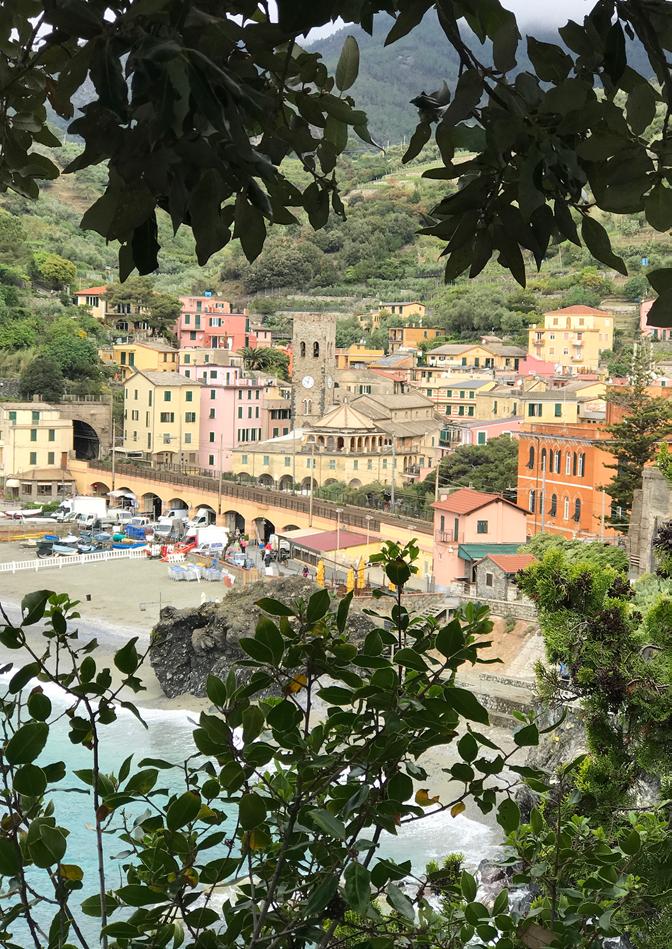
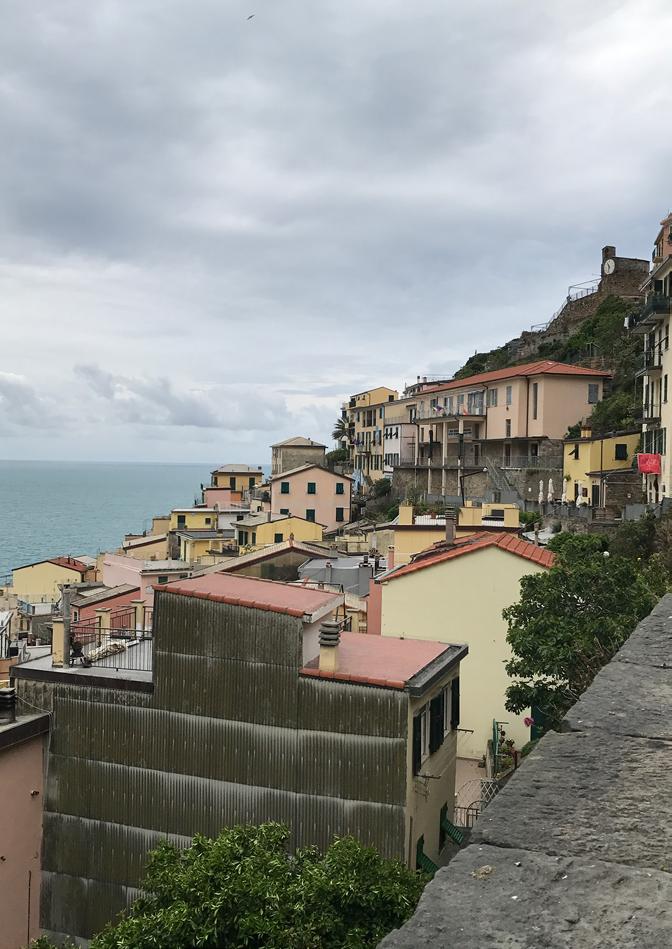
luring corner of the Italian Riviera. Over a millennium, labouring peasant farmers toiled incessantly in their quest to transform the vertiginous wild cliffs into arable terraces where premium crops could be grown. Tiny settlements sprung up in the shadows of castles—fortified lookouts for pirate raids. Over the years piracy decreased, eventually disappearing altogether. The end of the pirate era brought rapid growth and prosperity to the area. With the threat from the sea raiders eliminated, community fishing, farming and trade flourished. Cinque Terre is a good example of how the delicate balance between nature and human struggle is able to forge a unique landscape.
In 1997, UNESCO declared the entire area a listed World Heritage site. The UNESCO designation recognizes the distinctive cultural and natural significance of the area, seeking to preserve it for future generations.
The oldest and smallest national park in Italy, Cinque Terre, incorporates five picturesque fishing villages with poetic names: Monterosso al Mare, Vernazza, Corniglia, Manarola, and Riomaggiore. Famous for its colourful coastal dwellings, Mediterranean cuisine, and breath-taking hiking trails along the cliffs, Cinque Terre National Park encompasses around 3,860 acres or 15.6 square kilometres of appealing terrain. Home to approximately seven thousand people, each village adheres to its own traditions, distinct dialect, and heritage. The five charming communes were specifically chosen to be included in the Cinque Terre National Park group, because of their unique cultural, historical, and natural significance. Until the advent of modern tourism, the region had remained pristine in its isolation. Nowadays the stunning views, terraced vineyards, colourful houses, great cuisine, and hospitality attracts thousands of visitors each year. Cinque Terre National Park is no longer the foreign, it has become the owned
After successfully negotiating the dangerous driving conditions caused by the inclement weather, we finally arrived at our destination three hours later than we had originally scheduled. The plan was to spend three nights in Monterosso al Mare, the only village in the Cinque Terre quintet with flat coastal plains. How much time to spend in a given destination is always a tricky question to answer, especially
El Parque Nacional de las Cinque Terre, descrito en la época medieval como las Cinco Tierras, «Cinque» significa cinco, y «Terre», tierras o territorios, está enclavado entre Génova y Pisa, en un rincón montañoso y seductor de la Riviera italiana. Durante más de un milenio, los campesinos trabajaron sin cesar para transformar los vertiginosos acantilados salvajes en terrazas cultivables. Pequeños asentamientos surgieron a la sombra de los castillos, fortificados para vigilar las incursiones piratas. Con el paso de los años, la piratería disminuyó hasta desaparecer por completo. El final de la era pirata trajo un rápido crecimiento y prosperidad a la zona. Eliminada la amenaza de los piratas, florecieron la pesca, la agricultura y el comercio. Cinque Terre es un buen ejemplo de cómo el delicado equilibrio entre la naturaleza y la lucha humana es capaz de forjar un paisaje único.
En 1997, la UNESCO declaró toda la zona Patrimonio de la Humanidad. La designación de la UNESCO reconoce el significado cultural y natural distintivo de la zona, tratando de preservarla para las generaciones futuras.
El parque nacional más antiguo y pequeño de Italia, Cinque Terre, incorpora cinco pintorescos pueblos pesqueros de nombres poéticos: Monterosso al Mare, Vernazza, Corniglia, Manarola y Riomaggiore. Famoso por sus coloridas viviendas costeras, su cocina mediterránea y sus impresionantes rutas de senderismo por los acantilados, el Parque Nacional de Cinque Terre abarca unas 3.860 hectáreas o 15,6 kilómetros cuadrados de atractivo terreno. Cada pueblo, en el que viven unas siete mil personas, conserva sus propias tradiciones, dialecto y patrimonio. Los cinco encantadores municipios fueron elegidos específicamente para formar parte del grupo del Parque Nacional de Cinque Terre por su singular importancia cultural, histórica y natural. Hasta la llegada del turismo moderno, la región había permanecido prístina en su aislamiento. Hoy en día, las impresionantes vistas, los viñedos en terrazas, las coloridas casas, la excelente cocina y la hospitalidad atraen a miles de visitantes cada año. El Parque Nacional de Cinque Terre ya no es lo ajeno, sino lo propio. Tras sortear con éxito las peligrosas condiciones de conducción provocadas por las inclemencias del tiempo, finalmente llegamos a nuestro destino tres
so if your time and finances are limited. The Italian National Tourist Board recommends a three-night stay. Travel consultants consider three nights adequate time to explore Monterosso al Mare itself and the four other neighbouring towns in a relaxed and leisurely manner.
From the cliff-hugging roadway, our trusty GPS directed us to a parking area beside the sea from where we could see Hotel Porto Roca, our base in Monterosso al Mare. Precariously perched on the pinnacle of a sheer cliff, Hotel Porto Roca offers spectacular views of the clear waters that make up Monterosso Bay.
We decided to leave the car in the parking area and hire a taxi to cover the final five hundred metres up to our hotel simply because the road leading up to the resort was ridiculously steep, very narrow, and wet. There was barely enough room for a single medium sized vehicle, and the rain added to the difficulty. I have only ever experienced steeper roads within the mountainous area of La Alpujarra Granadina, located in the south eastern part of the province of Granada in Spain. A young ginger haired taxi driver turned up and drove us up the sharp incline in a matter of minutes. Much too fast for my liking. Two hairpin bends a few metres from the hotel sent shivers down my spine.
Monterosso al Mare —our Cinque Terre base— is a resort with few cars, numerous hotels, and a magnificent sandy beach. The largest of the five lands, Monterosso comprises two distinct areas, the old and the new. The new town called Fegina includes parking facilities, a train station, and tourist information centre. The old town (Centro Storico) cradles old-fashioned charisma within its diminutive lanes that are full of cafes, verandas, speciality artisanal shops, outlets, and galleries. A new generation of young entrepreneurs’ burn the midnight oil, especially so during the busy summer period, tirelessly striving to entice visitors with their artistic cottage-industry handicrafts, souvenirs, and traditional culinary products. A convenient pedestrian tunnel constructed in 1870, connects the old to the new town. The tunnel, referred to by locals as il Sottopassaggio (the underpass), spans approximately four hundred meters and is lined with brick arches and low-voltage lighting.
horas más tarde de lo previsto. El plan era pasar tres noches en Monterosso al Mare, el único pueblo del quinteto de Cinque Terre con llanuras costeras planas. Cuánto tiempo pasar en un destino determinado es siempre una pregunta difícil de responder, sobre todo si el tiempo y la economía son limitados. La Oficina Nacional de Turismo italiana recomienda una estancia de tres noches. Los asesores de viajes consideran que tres noches es tiempo suficiente para explorar Monterosso al Mare y las otras cuatro localidades vecinas de forma relajada y sin prisas. Desde la carretera bordeada de acantilados, nuestro fiel GPS nos dirigió a una zona de aparcamiento junto al mar desde la que podíamos ver el Hotel Porto Roca, nuestra base en Monterosso al Mare. Precariamente encaramado en el pináculo de un escarpado acantilado, el Hotel Porto Roca ofrece unas vistas espectaculares de las cristalinas aguas que conforman la bahía de Monterosso. Decidimos dejar el coche en el aparcamiento y contratar un taxi para recorrer los quinientos metros finales hasta nuestro hotel, simplemente porque la carretera que llevaba al complejo era ridículamente empinada, muy estrecha y estaba mojada. Apenas cabía un vehículo mediano, y la lluvia aumentaba la dificultad. Sólo he experimentado carreteras más empinadas dentro de la zona montañosa de La Alpujarra Granadina, situada en el sureste de la provincia de Granada, en España. Apareció un joven taxista pelirrojo y nos condujo por la pronunciada pendiente en cuestión de minutos. Demasiado rápido para mi gusto. Dos curvas cerradas a pocos metros del hotel me provocaron escalofríos.
Monterosso al Mare —nuestra base de Cinque Terre— es una localidad con pocos coches, numerosos hoteles y una magnífica playa de arena. La mayor de las cinco tierras, Monterosso comprende dos zonas diferenciadas, la antigua y la nueva. La nueva, llamada Fegina, incluye aparcamientos, una estación de tren y un centro de información turística. El casco antiguo (Centro Storico) alberga el carisma de antaño en sus diminutas callejuelas repletas de cafés, terrazas, tiendas artesanales especializadas, outlets y galerías. Una nueva generación de jóvenes emprendedores se afana en atraer a los visitantes con sus artesanías, souvenirs y productos culinarios tradicionales, especialmente durante el ajetreado
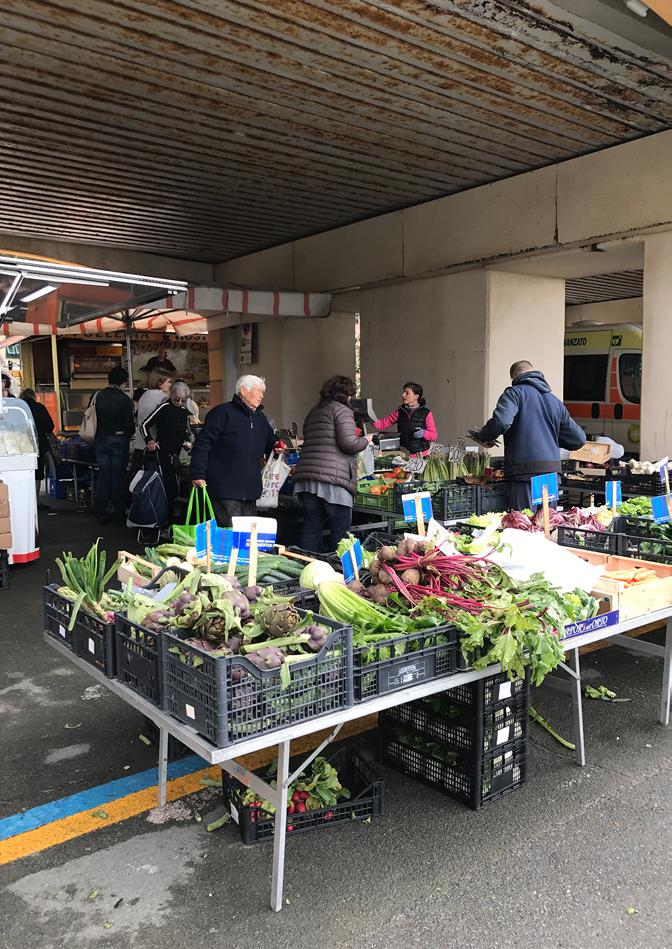
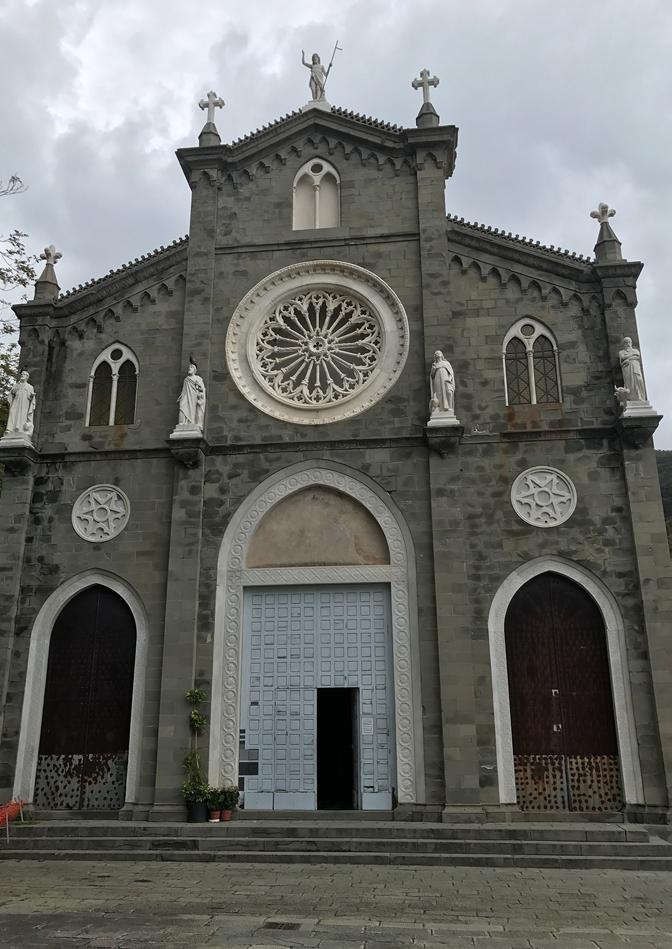
The stunning Monterosso beachfront pathway is unmissable, especially so during the warm summer evenings the area typically enjoys. Known as la passeggiata lungomare, the famous waterfront promenade stretches along the shoreline of the Ligurian Sea. From here the Cinque Terre towns decorating the coast can be seen glowing under the stars. Unfortunately, the stormy conditions persisted, forcing our maiden walk along the Monterosso seafront under umbrella cover. The strong wind had decreased but annoyingly the rain continued to fall wet.
Inspired by the beauty of Monterosso Bay, my intention had been to take pictures of the sea and surrounding cliffs, with the other four villages that make up the national park illuminated in the distant darkness. This did not materialize because of the relentless rain, which has now become the leitmotif of this story. The risk of my sensitive photographic equipment getting wet was too great, so we aborted the photography mission and headed to the nearby restaurant area for an early supper instead.
After a delicious meal at Ristorante L'Ancora della Tortuga, we decided to head back to our hotel. The constant relentless rain was not showing signs of reprieve, so hanging around was pointless. The storm intensified as the night matured. From the warmth of my hotel room bed, I could hear the sounds of the howling wind and the omnipresent rain battering the windows. Curiously, the stormy symphony promoted a soothing, lulling slumber. Early next morning, I was roused by a ray of bright sunlight penetrating the room through a crack in the curtains. I jumped out of bed and went out into the balcony hoping the storm might have passed during the night. It had!
That morning we visited the Church of San Francesco, dedicated to Saint Francis of Assisi. The patron saint of animals and the environment, Saint Francis of Assisi, is a beloved figure in Italy and is associated with many churches and religious sites across the country. Built in 1619, the church is considered the most significant religious and architectural landmark in the village. It showcases elements of Gothic architecture and contains valuable religious artworks.
The five villages lie in close proximity to each other. The Cinque Terre Express train that runs between La Spezia and Levanto is the fastest and most
periodo estival. Un cómodo túnel peatonal construido en 1870 conecta el casco antiguo con la ciudad nueva. El túnel, al que los lugareños se refieren como il Sottopassaggio (el paso subterráneo), se extiende unos cuatrocientos metros y está revestido de arcos de ladrillo e iluminación de bajo voltaje.
El impresionante paseo marítimo de Monterosso es imperdible, especialmente durante las cálidas tardes de verano que suele disfrutar la zona. Conocido como la passeggiata lungomare, el famoso paseo marítimo se extiende a lo largo de la costa del mar de Liguria. Desde aquí pueden verse brillar bajo las estrellas los pueblos de Cinque Terre que decoran la costa. Por desgracia, el temporal persistió, lo que nos obligó a dar nuestro primer paseo por el paseo marítimo de Monterosso bajo los paraguas. El fuerte viento había amainado pero, por desgracia, la lluvia seguía cayendo húmeda.
Inspirado por la belleza de la bahía de Monterosso, mi intención había sido fotografiar el mar y los acantilados circundantes, con los otros cuatro pueblos que componen el parque nacional iluminados en la lejana oscuridad. Esto no se materializó debido a la incesante lluvia, que ahora se ha convertido en el leitmotiv de esta historia. El riesgo de que mi delicado equipo fotográfico se mojara era demasiado grande, así que abortamos la misión fotográfica y en su lugar nos dirigimos a la cercana zona de restaurantes para cenar temprano.
Tras una deliciosa comida en el Ristorante L'Ancora della Tortuga, decidimos regresar a nuestro hotel. La incesante lluvia no daba señales de amainar, así que no tenía sentido quedarse. La tormenta se intensificó a medida que avanzaba la noche. Desde la calidez de la cama de mi habitación, oía el aullido del viento y la omnipresente lluvia que golpeaba las ventanas. Curiosamente, la tempestuosa sinfonía favorecía un letargo calmante y arrullador. A la mañana siguiente, temprano, me despertó un rayo de sol que penetraba en la habitación por una rendija de las cortinas. Salté de la cama y salí al balcón con la esperanza de que la tormenta hubiera pasado durante la noche. Y así fue.
Esa mañana visitamos la iglesia de San Francisco, dedicada a San Francisco de Asís. San Francisco de Asís, patrón de los animales y el medio ambiente, es una figura muy querida en Italia y está asociado a
convenient way to visit them. The service runs daily, stopping at all the picturesque train stations which lie a mere five minutes apart.
There is an interesting, albeit sinister, historical connection between La Spezia and Gibraltar. On 30 October 1940, during the Second World War, Gibraltar was unsuccessfully attacked by an Italian torpedo shaped contrivance. A crew of two men operating externally, wearing shallow diving dress, sailed the underwater craft from the port of La Spezia to Gibraltar. Tenente di Vascelo Gino Birindelli and due do Capo Palombaro Damos Paccagnini, navigated the human torpedo intending to blow up Royal Navy warships berthed at the Gibraltar Naval Base. Unexpectedly, about a mile offshore, they hit a sunken wreckage which totally destroyed the craft. Luckily, the torpedo did not explode, had it done so the two men would surely have been blown to smithereens. The two Italian saboteurs survived and were subsequently captured and interrogated by the British authorities.
Vernazza, the second of the Cinque Terre villages we visited, lies about three kilometres to the southeast of Monterosso al Mare. The railway lines run close to the sea, promoting panoramic views from the train window that were nothing short of sensational. A picturesque fishing village considered the jewel of the area, Vernazza is located within a natural harbour overlooked by Castello Doria, a 15th century castle. Built around 1450 by the Genoese Republic, Castello Doria’s primary role was protection against piracy and enemy attacks. Today the castle is in ruins. The vestiges of the old structure have long surrendered to the ravages of nature. This intriguing fortification, lies immersed within an imposing natural realm, made up of rocky cliffs, and lush vegetation, complimented by the turquoise waters of the Ligurian Sea below.
Vernazza remains one of the quintessential fishing villages on the Italian Riviera. Nestled within a small bay on the Ligurian Sea, it is the only town of the Cinque Terre quintet with a natural port. Set in the shadow of a haphazard patchwork of jagged cliffs that rise up dramatically from the sea, its elegant multi-coloured fisherfolk abodes lining the town’s seafront, has inspired generations of artists, photographers, writers, and poets.
muchas iglesias y lugares religiosos de todo el país. Construida en 1619, la iglesia se considera el monumento religioso y arquitectónico más importante del pueblo. Presenta elementos de arquitectura gótica y contiene valiosas obras de arte religioso.
Los cinco pueblos están muy cerca unos de otros. El tren Cinque Terre Express, que circula entre La Spezia y Levanto, es la forma más rápida y cómoda de visitarlos. El servicio funciona todos los días, con paradas en todas las pintorescas estaciones, situadas a escasos cinco minutos de distancia.
Existe una interesante, aunque siniestra, conexión histórica entre La Spezia y Gibraltar. El 30 de octubre de 1940, durante la Segunda Guerra Mundial, Gibraltar fue atacado sin éxito por un artefacto italiano con forma de torpedo. Una tripulación de dos hombres que operaban desde el exterior, vestidos con trajes de buceo poco profundos, navegó con el artefacto submarino desde el puerto de La Spezia hasta Gibraltar. El Tenente di Vascelo Gino Birindelli y dos do Capo Palombaro Damos Paccagnini, navegaron el torpedo humano con la intención de volar el buque de guerra de la Royal Navy atracado en la Base Naval de Gibraltar. Inesperadamente, a una milla de la costa, chocaron contra unos restos hundidos que destruyeron totalmente la embarcación. Por suerte, el torpedo no explotó, ya que de haberlo hecho los dos hombres habrían volado en pedazos. Los dos saboteadores italianos sobrevivieron y fueron capturados e interrogados por las autoridades británicas. Vernazza, el segundo de los pueblos de Cinque Terre que visitamos, se encuentra a unos tres kilómetros al sureste de Monterosso al Mare. Las vías férreas discurren cerca del mar, lo que permite disfrutar de unas vistas panorámicas sensacionales desde la ventanilla del tren. Vernazza, un pintoresco pueblo pesquero considerado la joya de la zona, está situado en un puerto natural dominado por el Castello Doria, un castillo del siglo XV. Construido hacia 1450 por la República genovesa, la función principal del Castello Doria era la protección contra la piratería y los ataques enemigos. Hoy el castillo está en ruinas. Los vestigios de la antigua estructura hace tiempo que se rindieron a los estragos de la naturaleza. Esta intrigante fortificación se encuentra inmersa en un imponente reino natural, formado por acantilados rocosos y una exuberante vegetación,


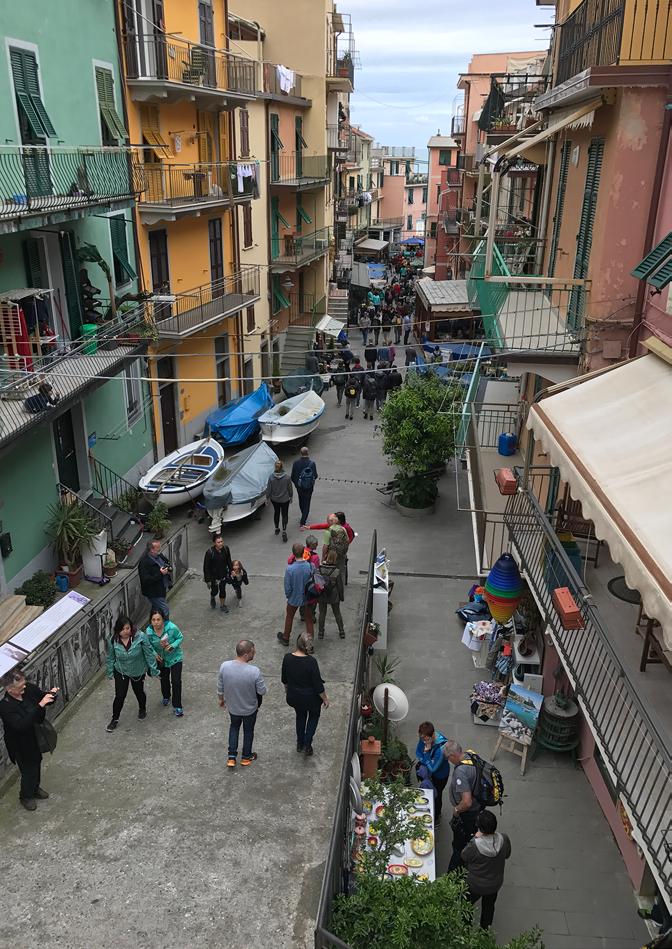
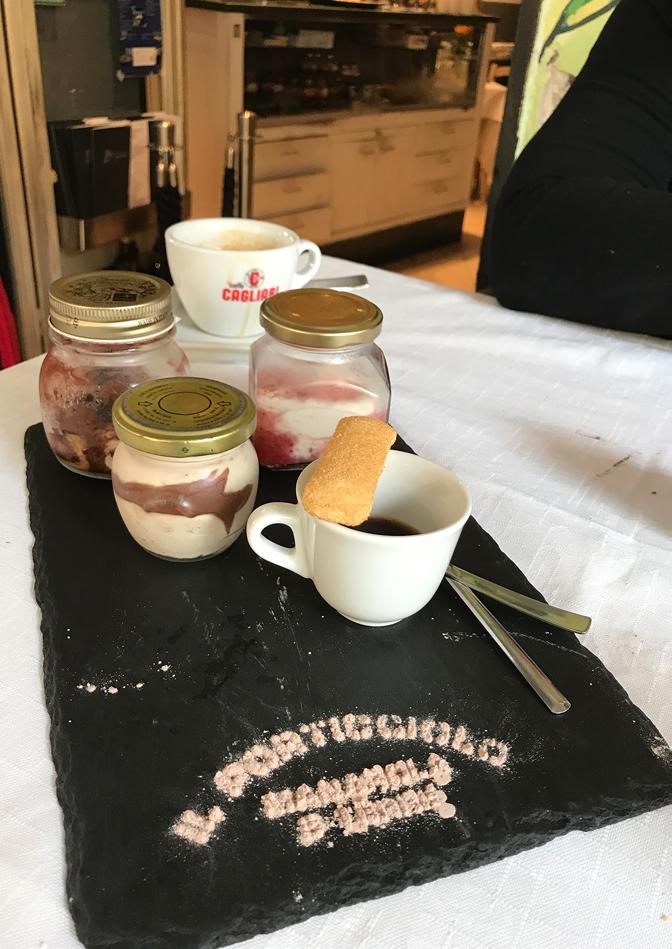
The bulk of Vernazza’s touristic action plays out around the seafront port area. Numerous late-night outdoor eateries, bars, and cafes attract thousands of visitors, especially so during the booming summer months. In the winter, the population shrinks dramatically, as many locals return to their comfortable bigcity apartments to rest and enjoy the profits reaped during the high tourist season.
Vernazza captures the essence of the Cinque Terre. Its narrow, winding streets are full of attractive little shops selling local handicrafts and souvenirs, as well as thriving cafes and restaurants serving up delicious Italian dishes. Visitors can feast on the finest, freshest seafood, delicious homemade pastas, traditional Ligurian pesto, and the best local wines. Its terraced vineyards and olive groves offer spectacular views of the surrounding countryside and bay, which extends out into the endless expanses of the sea. Vernazza is also a trendy destination for hikers, who can explore the rugged coastline on foot, whilst taking in the stunning scenery and enjoying the fresh marine breezes.
That evening we took advantage of the room service on offer at our hotel. We ordered and enjoyed a lovely seafood risotto, together with a fine cold Chianti white. From the spacious balcony of our guestroom overlooking the Ligurian Sea, a myriad of tiny luminescent dots of light flickered harmoniously in the distance over the boundless watery gloom. The night was dark and quiet, full of stars. Orion's belt, a distinctive pattern of three cosmic beacons arranged in a row stood out clearly. The shining disc of a radiant moon propagated an ethereal glow across the starry night sky, enveloping the stellar entities in a translucent glassy shroud. Everything appeared in suspended animation, the peace was only broken by the intermittent flashes emitted by the lights of the fishing boats in the distance. Gazing at the scintillating points of random lights, under the twinkling night sky, induced a pleasant, slightly hypnotic feeling. The unplanned evening turned out to be pleasantly mellow and laid-back, almost trance-like. I don’t doubt the superb Chianti wine was a contributing factor.
To be continued.
Coming in August Cinque Terre Part 2, including Corniglia, Manarola, and Riomaggiore.
complementados por las aguas turquesas del mar de Liguria.
Vernazza sigue siendo uno de los pueblos pesqueros por excelencia de la Riviera italiana. Enclavado en una pequeña bahía del mar de Liguria, es el único pueblo del quinteto de Cinque Terre con puerto natural. Situado a la sombra de un mosaico de acantilados irregulares que se elevan dramáticamente desde el mar, sus elegantes y multicolores casas de pescadores que bordean el paseo marítimo de la ciudad han inspirado a generaciones de artistas, fotógrafos, escritores y poetas.
La mayor parte de la actividad turística de Vernazza se desarrolla en torno a la zona portuaria frente al mar. Numerosos restaurantes, bares y cafés al aire libre atraen a miles de visitantes, especialmente durante los meses de verano. En invierno, la población se reduce drásticamente, ya que muchos lugareños regresan a sus cómodos apartamentos de la gran ciudad para descansar y disfrutar de los beneficios cosechados durante la temporada alta turística. Vernazza captura la esencia de las Cinque Terre. Sus estrechas y sinuosas calles están repletas de atractivas tiendecitas que venden artesanía y recuerdos locales, así como de prósperos cafés y restaurantes que sirven deliciosos platos italianos. Los visitantes pueden darse un festín con el mejor y más fresco marisco, deliciosas pastas caseras, el tradicional pesto de Liguria y los mejores vinos locales. Sus viñedos y olivares en terrazas ofrecen espectaculares vistas de la campiña circundante y de la bahía, que se extiende hasta las interminables extensiones del mar. Vernazza es también un destino de moda para los excursionistas, que pueden explorar la escarpada costa a pie, mientras contemplan el impresionante paisaje y disfrutan de la fresca brisa marina.
Esa noche aprovechamos el servicio de habitaciones del hotel. Pedimos y disfrutamos de un delicioso risotto de marisco, acompañado de un Chianti blanco bien frío. Desde el amplio balcón de nuestra habitación con vistas al mar de Liguria, una miríada de diminutos puntos de luz luminiscente parpadeaban armoniosamente en la distancia sobre la ilimitada penumbra acuática. La noche era oscura y tranquila, llena de estrellas. El cinturón de Orión, un patrón distintivo de tres faros cósmicos dispuestos en fila
destacaba claramente. El disco brillante de una luna radiante propagaba un resplandor etéreo por el cielo nocturno estrellado, envolviendo a las entidades estelares en un sudario vidrioso translúcido. Todo parecía en animación suspendida, la paz sólo era rota por los intermitentes destellos emitidos por las luces de los barcos pesqueros en la lejanía. Contemplar los puntos centelleantes de luces aleatorias, bajo el
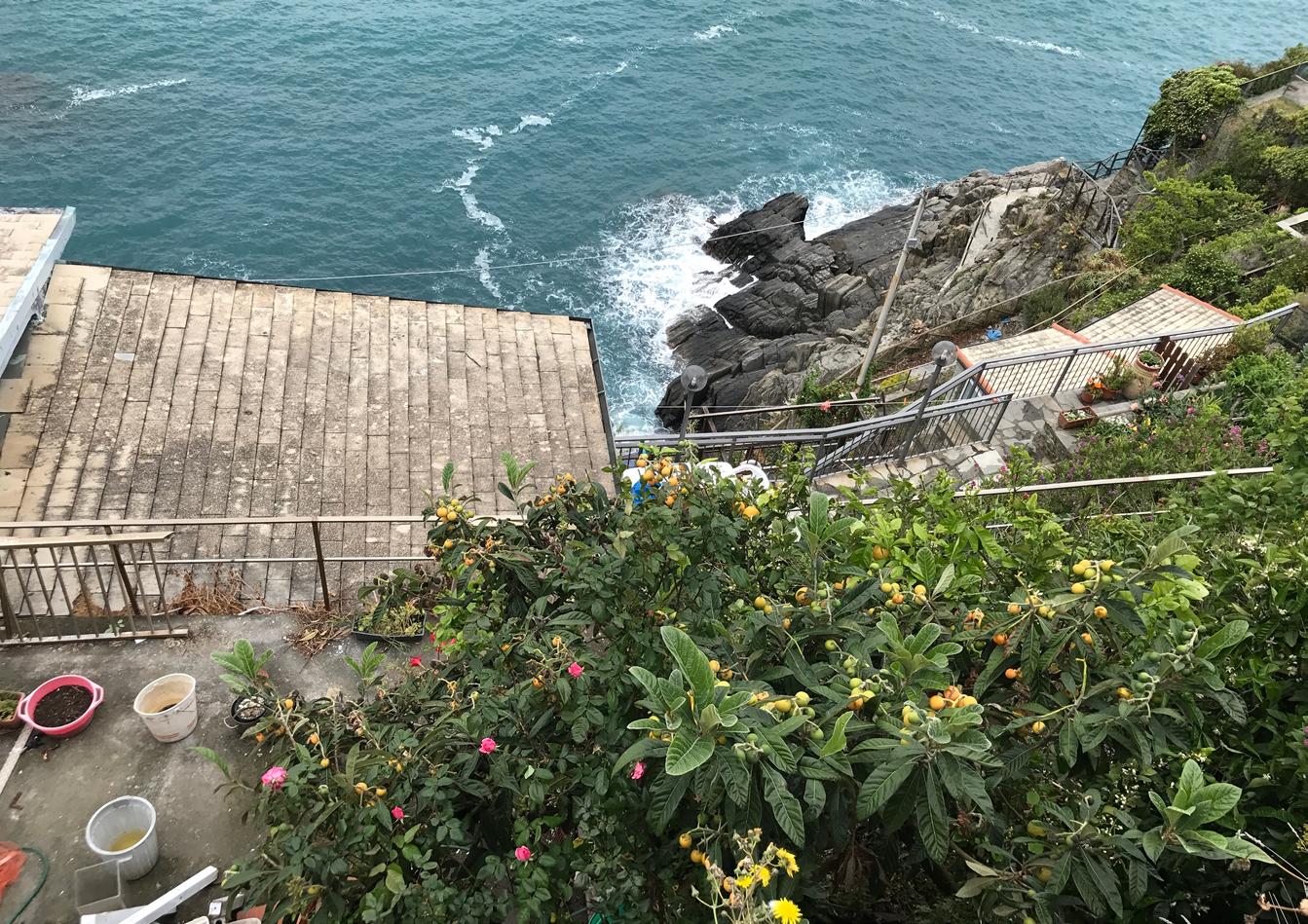
centelleante cielo nocturno, inducía una sensación agradable, ligeramente hipnótica. La velada, imprevista, resultó agradablemente tranquila y relajada, casi de trance. No dudo de que el magnífico vino Chianti contribuyera a ello.
Continuará.
Próximamente, en agosto, Cinque Terre Parte 2, que incluye Corniglia, Manarola y Riomaggiore.
Any event, from initial ideas, to production, assembly or press clipping - we are there.
Innovation in PR
Sometimes the events are confused as strategies when in fact they are a means of very high value for the identification, recognition or presentation of a brand, a product or a project.
Associating positive and group experiences with the communicative arguments of the company is a fast and effective way to satisfy users.
Emotional connectivity
We get connections between target audiences, commercial and social agents of relevance to grant notoriety to the company. What better way to know and interact, to get the data of true interest, their opinions, their desires and their loyalty?
The union makes the party
We have a team capable of not only designing, planning and organizing any type of event, but we also have specialized professionals in all areas:
conceptualization, financial analysis, communication strategies, manufacturing and assembly, public relations, chronograms, monitoring of results, and more.




Somos capaces de organizar cualquier tipo de eventos, desde las ideas iniciales, hasta la producción, el montaje o el cloipping de prensa.
Innovación en las RRPP
A veces se confunde los eventos como estrategias cuando en realidad son un medio de altísimo valor para la identificación, reconocimiento o presentación de una marca, un producto o un proyecto. Asociar experiencias positivas y grupales con los argumentos comunicativos de la empresa es una manera rápida y efectiva de satisfacer a los usuarios.
Conectividad emocional
Conseguimos conexiones entre públicos objetivos, agentes comerciales y sociales de relevancia para otorgar notoriedad a la compañía. ¿Qué mejor manera de conocer e interactuar, de conseguir los datos de verdadero interés, sus opiniones, sus deseos y su fidelidad?.
La unión hace la fiesta
Contamos con un equipo capaz no solo de diseñar, planificar y organizar cualquier tipo de eventos, sino que también disponemos de profesionales especializados en todas las áreas: conceptualización, análisis financiero, estrategias de comunicación, fabricación y montaje, relaciones públicas, cronogramas, seguimientos de los resultados y mucho más www.communications.com


The Nautilus Project are really excited to announce that after the last four great successes, we will be hosting our 5th consecutive Gibraltar Sustainable Awards in collaboration with the GFSB.
The theme this year is One Planet, One Ocean, One Climate, One Future #Together with a view of showcasing the different ways in which the diverse representation of Gibraltar’s community is mitigating its plastic and carbon footprint and how the Climate Crisis is at the global forefront.
We are on the lookout for local businesses, organisations, charities and clubs that have implemented the highest number of green initiatives including minimising their carbon and plastic footprints. No sustainable transition is too small!
The following categories will apply:
• Flora and Fauna.
• Energy Conservation.
• Water Conservation.
• Waste Management.
• Environment.
• Pollution and Climate Change. Examples may include (but are not limited to):
• Awarded the most TNP certificates since accreditations began.
• Implementation of Energy Saving practices.
• Recycling within the workplace.
• Cutback on single use plastics.
• Plastic Free Events.
• Reduction in CO2 emissions.
• Sustainability within the workplace.
• Positive impact on Gibraltar’s coastline.
Power Point presentation entries are to be submitted to info@thenautilusproject.co by no later than Monday 18th September 2023 (end of the working day) Contact Melanie Soiza-Stagnetto for any further information on +350 54002262
Prizegiving ceremony is set for World Energy Efficiency Day observed on October 4th 2023.
Entries are to be sent via power point presentations to info@thenautilusproject.co on or before the above date.
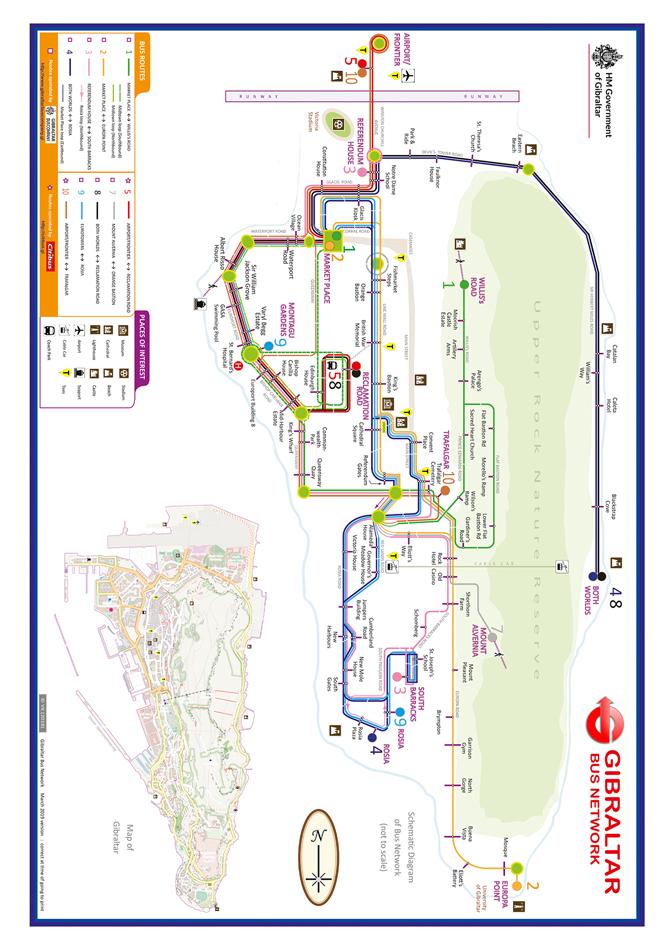

La ciudad de 15 minutos. Parte 3.
The 15-minute city. Part 3.
Imagine if everything you needed was only a 15-minute walk or bike ride away, how would that shape the health of our cities?
This approach can have significant public health impacts by promoting physical activity, reducing air pollution, and improving social connections.
One of the main health benefits of the 15-minute city (15mC) is its promotion of physical activity. By designing neighbourhoods that are pedestrian-friendly and provide easy access to daily necessities, people are more likely to walk or bike rather than rely on cars or public transportation. Walking and biking are associated with many health benefits, including lower rates of obesity, heart disease, and diabetes. Moreover, increased physical activity can improve mental health by reducing stress and improving mood.
The 15mC can also have a positive impact on air quality. By reducing the need for cars, there is less traffic congestion, which can lead to fewer emissions of harmful pollutants. Air pollution is a major public health concern, as exposure to fine particulate
matter can increase the risk of respiratory illnesses and cardiovascular disease. By promoting active transportation and reducing car use, the 15mC can help improve air quality and reduce the burden of disease associated with air pollution.
Finally, the 15mC can help promote social connections and reduce social isolation. By creating public spaces and encouraging walkability, people are more likely to interact with their neighbours and engage in community activities. Social connections are important for maintaining good mental health, and studies have shown that social isolation can lead to increased rates of depression and other mental health disorders.
Next month, we’ll continue our series about the 15-minute city by looking at some of the limitations of this concept. In the meantime, follow Science & Nature for weekly research bites and to connect with our author.
Graells-Garrido, Eduardo, et al. "A city of cities: Measuring how 15-minutes urban accessibility shapes human mobility in Barcelona." PloS one 16.5 (2021): e0250080.
Imagina que todo lo que necesitaras estuviera a sólo 15 minutos a pie o en bicicleta, ¿cómo influiría eso en la salud de nuestras ciudades?
Este planteamiento puede tener importantes repercusiones en la salud pública al fomentar la actividad física, reducir la contaminación atmosférica y mejorar las conexiones sociales.
Uno de los principales beneficios para la salud de la ciudad de 15 minutos (15mC) es el fomento de la actividad física. Al diseñar barrios aptos para peatones y de fácil acceso a las necesidades cotidianas, es más probable que la gente vaya a pie o en bicicleta en vez de depender del coche o del transporte público. Caminar y montar en bicicleta se asocian a muchos beneficios para la salud, como tasas más bajas de obesidad, enfermedades cardiacas y diabetes. Además, el aumento de la actividad física puede mejorar la salud mental al reducir el estrés y mejorar el estado de ánimo.
El 15mC también puede tener un impacto positivo en la calidad del aire. Al reducir la necesidad de coches, hay menos congestión de tráfico, lo que puede dar lugar a menos emisiones de contaminantes nocivos. La contaminación atmosférica es un importante problema de salud pública, ya que la exposición a
partículas finas puede aumentar el riesgo de enfermedades respiratorias y cardiovasculares. Promoviendo el transporte activo y reduciendo el uso del coche, el 15mC puede ayudar a mejorar la calidad del aire y a reducir la carga de enfermedad asociada a la contaminación atmosférica.
Por último, el 15mC puede ayudar a fomentar las conexiones sociales y reducir el aislamiento social. Al crear espacios públicos y fomentar la transitabilidad a pie, es más probable que las personas interactúen con sus vecinos y participen en actividades comunitarias. Las conexiones sociales son importantes para mantener una buena salud mental, y los estudios han demostrado que el aislamiento social puede aumentar las tasas de depresión y otros trastornos mentales.
El mes que viene continuaremos nuestra serie sobre la ciudad de 15 minutos analizando algunas de las limitaciones de este concepto. Mientras tanto, sigue Ciencia y Naturaleza para conocer los avances semanales de la investigación y para ponerte en contacto con nuestro autor.
Graells-Garrido, Eduardo, et al. "Una ciudad de ciudades: Midiendo cómo la accesibilidad urbana de 15 minutos moldea la movilidad humana en Barcelona". PloS one 16.5 (2021): e0250080.

Bullying is a form of aggressive behaviour in which someone intentionally and repeatedly causes another person injury or discomfort. Bullying can take the form of physical contact, words, or more subtle actions.
There are four types of bullying: Physical bullying, Verbal bullying, social bullying, Cyber bullying.
Physical bullying includes hitting, kicking, tripping, pinching, and pushing or damaging property. Also mean comments about someone's body or physical characteristics such as their weight or height. Stealing or damaging possessions as well. Physical bullying causes both short term and long-term damage.
Verbal bulling includes name calling, or verbal abuse such as insults or jokes about being sarcastic in a hurtful way someone and their family because of their race, culture, religion, disability, or sexuality.
Social bullying, sometimes referred to as covert bullying, is often harder to recognise and can be carried out behind the bullied person’s back. It is designed to harm someone’s social reputation and / or cause humiliation, as well as destroying relationships and friendships also telling lies or stories about someone to make others not like them.
Cyber bullying can be overt or covert bullying behaviours using digital technologies including
hardware such as computers and smartphones, and software such as social media, instant messaging, texts, websites, and other online platforms. As young people increasingly use digital technology, the boundaries between the physical and online environment can become more blurred, so it's important to look at other situations as well and to take all reports of bullying seriously.
Remember, bullying can sometimes happen between friends. Friendship loyalty and the confusion of an on-off friendship can make some children and young people reluctant to seek HELP.
I'm being bullied - what should I do?
These things can help stop bullying:
- Stay calm - don't react emotionally (people who bully usually want you to get angry or upset)
- Report it - tell trustworthy adults and keep talking to them until the bullying stops; reporting it helps keep people safe (and isn't the same as 'dobbing' which is about getting someone in trouble over nothing)
- Get support - bullying can affect your mental health and self-worth - having the support of family, friends, teachers and/or professionals can make a big difference.
If you feel you are being bullying and it is affecting your mental health clubhouse is the place to help you.
El acoso es una forma de comportamiento agresivo en el que alguien, de forma intencionada y repetida, causa daño o malestar a otra persona. El acoso puede adoptar la forma de contacto físico, palabras o acciones más sutiles.
Hay cuatro tipos de acoso: Acoso físico, acoso verbal, acoso social y ciberacoso.
El acoso físico incluye golpes, patadas, zancadillas, pellizcos y empujones o daños a la propiedad. También los comentarios malintencionados sobre el cuerpo o las características físicas de alguien, como su peso o su altura. También robar o dañar pertenencias. El acoso físico causa daños a corto y largo plazo.
El acoso verbal incluye insultos, o abuso verbal como insultos o bromas sobre ser sarcástico de una manera hiriente a alguien y su familia debido a su raza, cultura, religión, discapacidad o sexualidad.
El acoso social, a veces denominado acoso encubierto, suele ser más difícil de reconocer y puede llevarse a cabo a espaldas de la persona acosada. Está diseñado para dañar la reputación social de alguien y/o causar humillación, así como destruir relaciones y amistades también contando mentiras o historias sobre alguien para hacer que a otros no les guste. El ciberacoso puede consistir en comportamientos de acoso abiertos o encubiertos mediante el uso de tecnologías digitales, incluidos equipos como ordenadores y teléfonos inteligentes, y programas como redes sociales, mensajería instantánea, mensajes de texto, sitios web y otras plataformas en línea.
A medida que los jóvenes utilizan cada vez más la tecnología digital, los límites entre el entorno físico y en línea pueden hacerse más difusos, por lo que es importante tener en cuenta también otras situaciones y tomarse en serio todas las denuncias de acoso. Recuerda que el acoso a veces puede producirse entre amigos. La lealtad entre amigos y la confusión de una amistad intermitente pueden hacer que algunos niños y jóvenes sean reacios a buscar AYUDA.
Me acosan, ¿qué hago?
Estas cosas pueden ayudar a frenar el acoso:
- Mantén la calma, no reacciones emocionalmente (los acosadores suelen querer que te enfades o te alteres).
- Denúncialo: díselo a adultos de confianza y sigue hablando con ellos hasta que cese el acoso; denunciarlo contribuye a la seguridad de las personas (y no es lo mismo que "hacer el tonto", que consiste en meter a alguien en problemas por nada).
- Busca apoyo: el acoso puede afectar a tu salud mental y a tu autoestima. Contar con el apoyo de familiares, amigos, profesores o profesionales puede marcar una gran diferencia.
Si crees que estás sufriendo acoso y que esto afecta a tu salud mental, el Clubhouse es el lugar adecuado para ayudarte.


Suncream
Recyclable? Plastic containers can be recycled. How long does it take to decompose: 1000 years.
Fun Fact:
A 2016 study showed that the common chemical found in many lotions and cosmetics is highly toxic to juvenile corals and other marine life.
Alternatives:
Natural Sun Cream. Protect yourself with clothing. Red Raspberry seed oil. Astaxanthin - Antioxidant.
Crema Solar
¿Reciclable? Los envases de plástico pueden ser reciclados.
¿Cuánto tiempo tardan en descomponerse?
1000 años.
Dato curioso: Un estudio de 2016 mostró que el químico común que se encuentra en muchas lociones y cosméticos es altamente tóxico para los corales jóvenes y otras especies marinas.
Alternativas:
Crema solar natural. Protejete con ropa. Aceite de semilla de frambuesa roja. Astaxantina - Antioxidante.
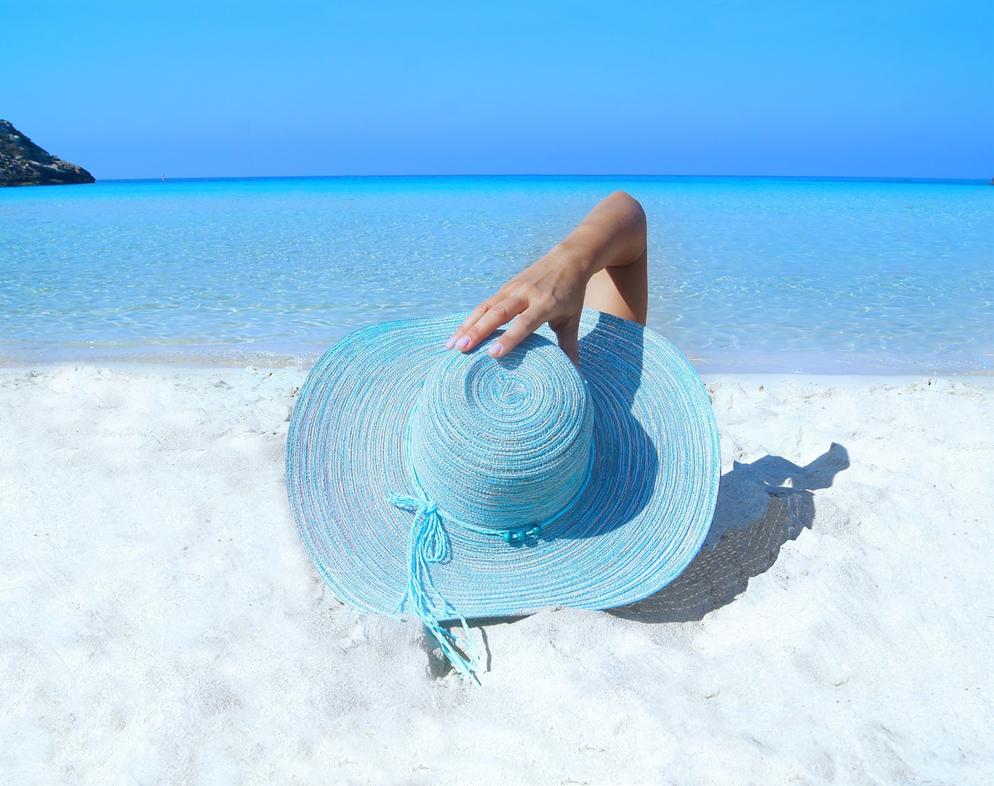
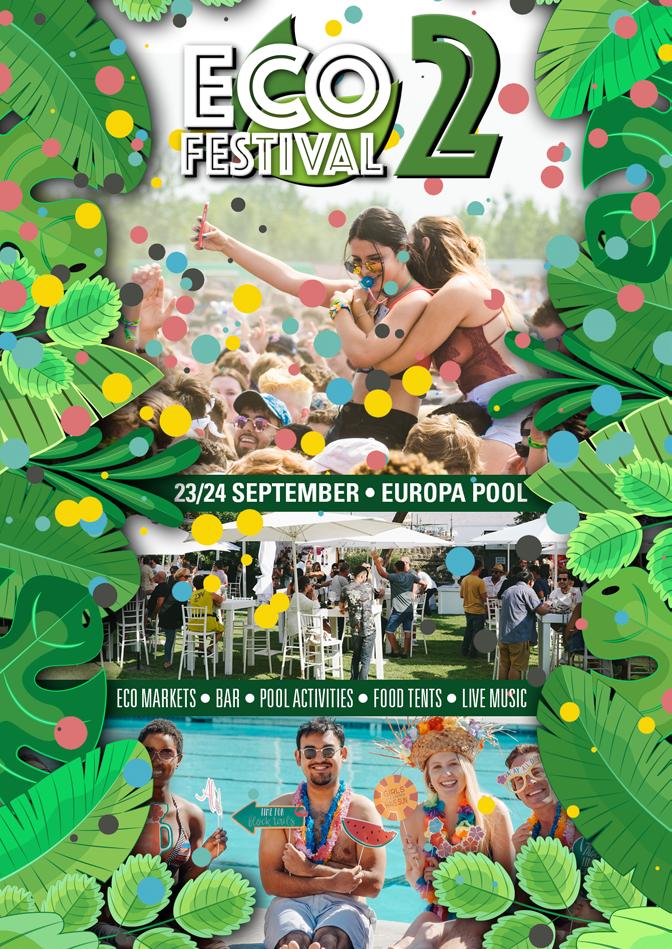

Organized by: OTWO Magazine
Tel. +350 54001271
info@otwomag.com
Transport available for groups. Check with us for your requirements. OTWO is a facilitator on these packages.
All activities are contracted directly between the respective centre operator and the client.
Prices are for the month of July, only please contact us for other dates.
Transporte disponible para grupos. Consultenos si estás interesado. OTWO es un mediador de estos paquetes. Todas las actividades se contratan directamente entre el operador y el cliente.
Precios válidos solo para el mes de julio, consulte para otras fechas.

In the heart of the Costa del Sol is the municipality of Benahavis, very famous for its gastronomy. In this town we find the Narrows of the Guadalmina River, where our adventure takes place.
Canyoning consists of the descent of a river, usually in its upper section, where due to the erosion the river is modeled with very diverse forms where we will have to improvise handrails, jumps or rappels.
This canyon is considered Level 1 for its duration, but it is a totally initiation activity because all its difficulties are optional and we can always use an alternative way to overcome it.
For the adventure we will have all the necessary technical material: 3- or 5-mm wetsuits depending on the temperature, harness, helmet, and collective technical material for the descent.
The Ravine
The Guadalmina River, located in Benahavís contains a sport area ideal for initiation to canyoning. It is an adventure considered level 1.
During the tour we can enjoy natural slides, jumps from different heights and a final rappel of about 5 meters high.
At the landscape level, we will be able to enjoy very singular places. The spectacular Poza de las Mozas, more than 5 meters deep from where we will enjoy different jumps with the greatest security. La Cascada de la acequia, located in a small cavity, and with crystal clear waters. And the most spectacular part Los Cahorros del Guadalmina, very narrow areas in the form of a cave that we will cross swimming enjoying its beauty. Dare!
Duration Canyoning: 4 hours.
Minimum/Maximum participants: 6/12 participants.
Recommended Dates:
Late spring, summer and early fall.
Services: Monitors and specialized equipment. All technical material First aid kit. RC and Accident Insurance. Photo report.
Prices Complete adventure..........40€
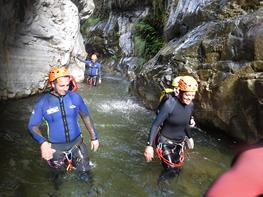
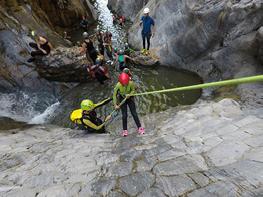
En plena Costa del Sol se encuentra el municipio de Benahavis, muy famoso por su gastronomía. En este pueblo nos encontramos con las Angosturas del Río Guadalmina, por donde trascurre nuestra aventura.
El barranquismo consiste en el descenso de un río, normalmente en su tramo alto, donde debido a la erosión modela el río con formas muy diversas donde tendremos que improvisar pasamanos, saltos o ráppeles.
Este barranco está considerado de Nivel 1 por su duración, pero es una actividad totalmente de iniciación ya que todas sus dificultades son opcionales y siempre podremos usar un camino alternativo para sortearla.
Para la aventura se dipondrá de todo el material técnico necesario: neoprenos 3 o 5 mm según la temperatura, arnés, casco, y material técnico colectivo para el descenso.
El Barranco
El Río Guadalmina, situado en Benahavís contiene una zona deportiva ideal iniciación para la iniciación en el tema de barranquismo. Es una aventura considerada de nivel 1.
Durante su recorrido podremos disfrutar de toboganes naturales, saltos desde diferentes alturas y un ráppel final de unos 5 metros de altura.
A nivel paisajístico, podremos disfrutar de lugares muy singulares. La espectacular Poza de las Mozas, de más de 5 metros de profundidad desde donde disfrutaremos de diferentes saltos con la mayor seguridad. La Cascada de la acequia, situada en una pequeña cavidad, y con aguas cristalinas. Y la parte más espectacular Los Cahorros del Guadalmina, zonas muy estrechas en forma de cueva que cruzaremos a nado disfrutando de su belleza. ¡Atrévete!
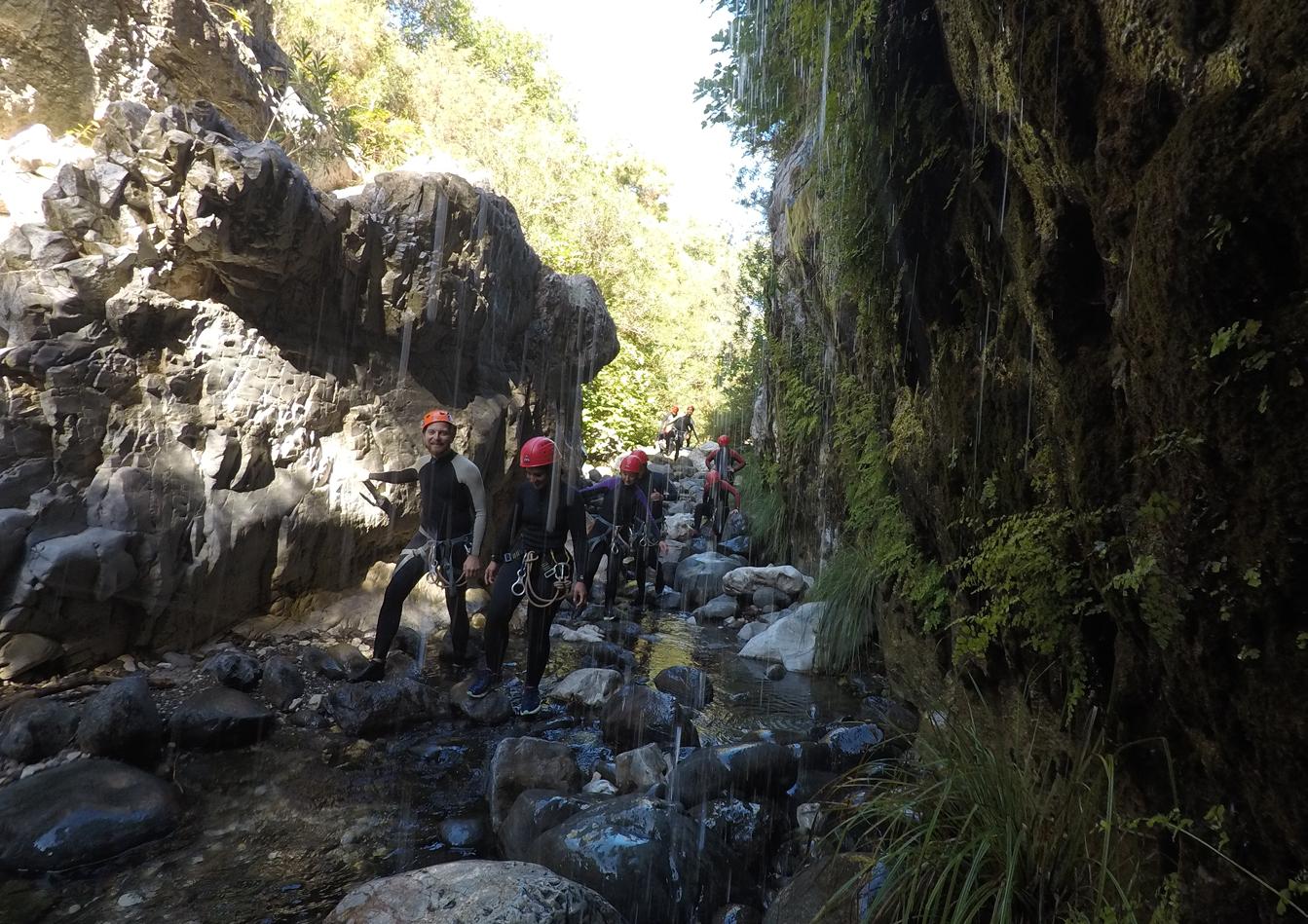
Duración Barranquismo: 4 horas. Mínimo/Máximo de participantes: 6/12 participantes.
Fechas Recomendadas: Finales de primavera, verano y comienzos del otoño.
Servicios: Monitores y equipos especializados. Todo el material técnico. Botiquín primeros auxilios. Seguros RC y Accidentes. Reportaje fotográfico.
Precios aventura completa……….40€
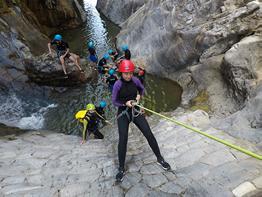
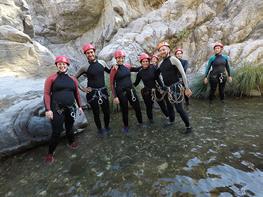
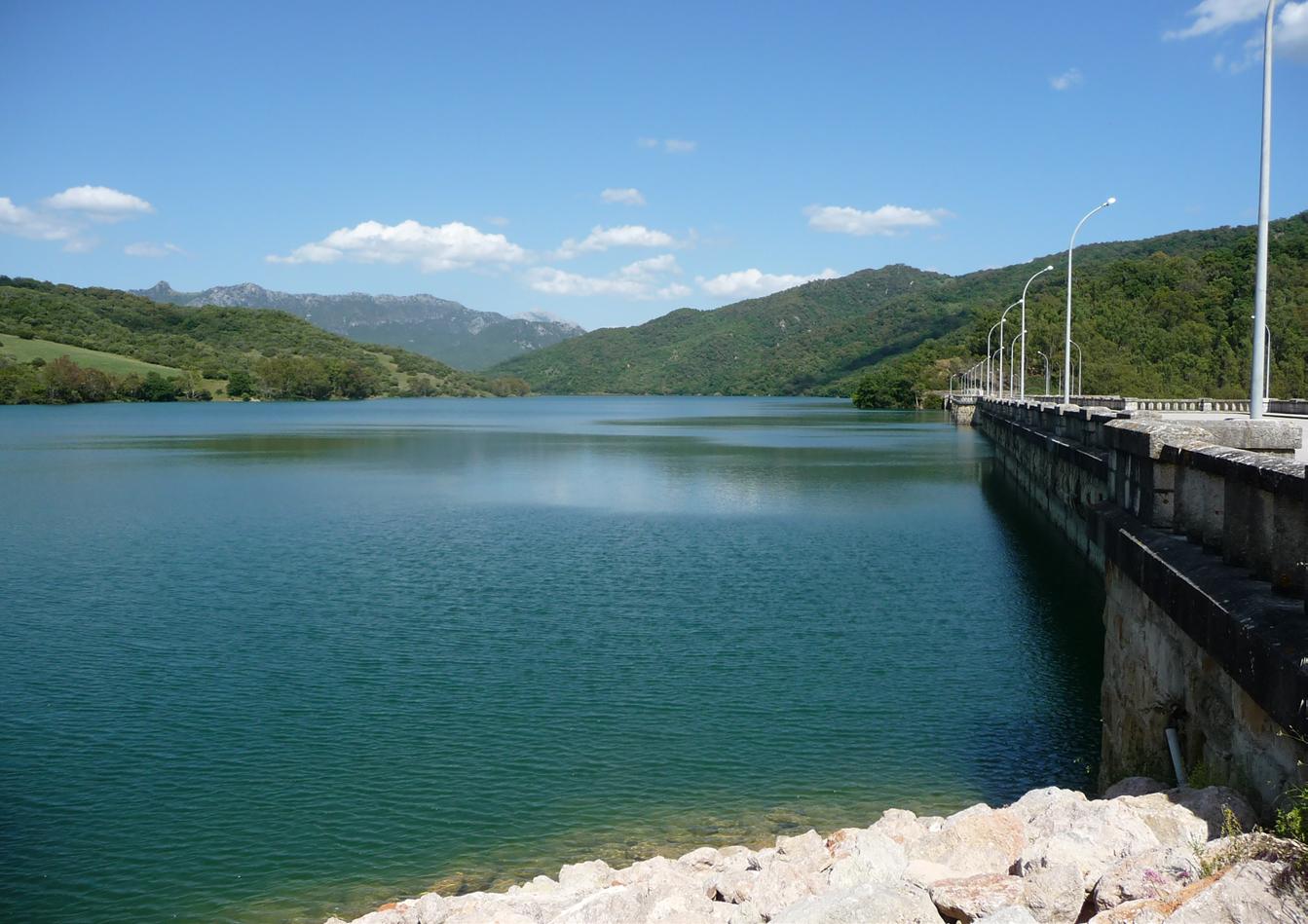
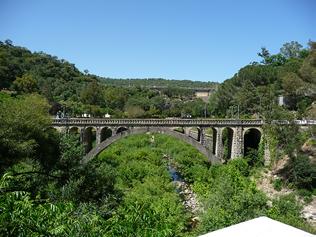
The reservoir and the village of Los Hurones was created in 1964, a hidden gem in the middle of nature, which supplies drinking water, electricity, and irrigation to the urban centers of the province of Cadiz. It might seem that we are in a Canadian place for the density of its forest or in a Galician village for its similarity in architecture, the houses that form this small village were used by employees and technicians who worked in the execution of this dam.
But we are in Cadiz, specifically the term of San Jose del Valle, near Algar and the towns of El Bosque and Ubrique.
We will make a route of about 10 kilometers with a low / medium difficulty, we will know the flora, fauna, and bathing place where it is impossible not to stop to take a picture because of its beauty, the Majaceite river can be seen in this area with a peculiar charm.
Arriving at the village we will also see the three institutions that are still preserved, hospital, school, and church dedicated to the Virgen del Pilar, we will cross the bridge, from which you can already see the impressive height of the dam, which collects almost 900 hectares with a capacity of 135 cubic hectometers that flows into the reservoir of Guadalcacín.
We will have lunch at Venta El Pantano, a place that persists over time thanks to the quality of its dishes and the attention of its employees, we can buy local products such as the famous village bread, molletes, sweets, olives and many more…
After lunch, we will go up to the dam to walk around it, see the grandeur of that territory and learn how it works.
From there and looking closely at the village it seems that the place resembles a traditional Christmas nativity scene because of the physiognomy of its houses and the environment.
You cannot miss the history behind this hidden paradise in the Natural Park Los Alcornocales.
El pantano y el poblado de Los Hurones se creó en el año 1964, una joya escondida en medio de la naturaleza, que abastece de agua potable, electricidad y riego a los núcleos urbanos de la provincia de Cádiz.
Podría parecer que nos encontramos en un paraje canadiense por la densidad de su bosque o en un pueblo gallego por su semejanza en la arquitectura, las casas que forman esta pequeña aldea fueron utilizadas por los empleados y técnicos que trabajaron en la ejecución de esta presa.
Pero estamos en Cádiz, concretamente el término de San José del Valle, próximo a Algar y a las poblaciones de El Bosque y Ubrique.
Realizaremos una ruta de unos 10 kilómetros con una dificultad baja/media, conoceremos la flora, fauna y lugar de baños donde es imposible no pararse a tomar una foto debido a su belleza, el rio Majaceite se deja ver en esta zona con un encanto peculiar.
Al llegar al poblado además veremos las tres instituciones que aún se conservan, hospital, colegio e iglesia dedicada a la Virgen del Pilar, cruzaremos el puente, desde el que ya se puede ver la impresionante altura de la presa, que recoge casi 900 hectáreas con una capacidad de 135 hectómetros cúbicos que desemboca en el embalse de Guadalcacín.
Haremos el almuerzo en la Venta El Pantano, un lugar que persiste en el tiempo gracias a la calidad de sus platos y la atención de sus empleados, podremos comprar productos de la tierra como el famoso pan de pueblo, molletes, dulces, aceitunas y un largo etc…
Tras la sobremesa, subiremos a la presa para pasear por ella, divisar la grandeza de aquel territorio y conocer el funcionamiento de esta.
Desde ahí y fijándote bien en el poblado pareciese que el lugar se asemeja por la fisionomía de sus casas y el entorno a un belén tradicional de Navidad No puedes perderte la historia que hay detrás de este paraíso escondido en pleno Parque Natural Los Alcornocales.
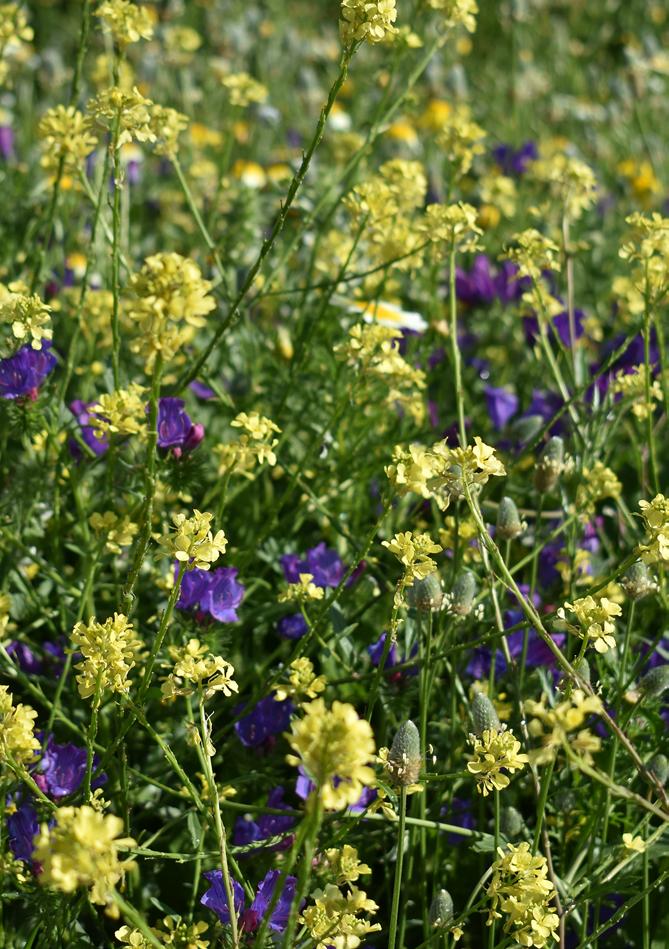
The Centennial Park, with an extension of 11 hectares has valuable elements of historical and cultural heritage of the city of Algeciras.
It is located within the boundaries of the "Intercontinental Biosphere Reserve of the Mediterranean Andalusia-Morocco" this reserve extends through some of the most emblematic territories of the provinces of Cadiz and Malaga in Spain and the provinces of Tangier, Tetuan, Larache and Chefchaouen in northern Morocco.
Of great importance, a part of the coastline is dominated by the flysch, a geological phenomenon created millions of years ago from the whims of an earth that decided to twist and play with the laws of physics in its own way, produced by the tectonic movements of the intercontinental plates.
A park where we can admire flora, wild olive, cork oak, Moorish gorse, jerguen, gall oak and its fauna, such as crustaceans Orchestia mediterranea and Tylos sardous, lizards, snake necklace, common bat, brown rat, sandpipers, terns and herons among others, as its location makes it an important place to observe the passage of migratory birds, as well as cetaceans, and a splendid view of the coast of the neighboring continent.
On the left side we are accompanied by the Chinarral which has fine sands and calm waters sheltered by a small inlet. The bottom of its waters is largely rocky highlighting several reefs a few meters
from the coast known as Las Hermanas, very dangerous for navigation, and to the right of the Getares inlet is the Getares beach whose sands, of fine thickness, come mainly from the contributions of the many seasonal streams that flow into the area and in particular the river Pícaro that formed in the past a marsh and a dune arrow.
For our route it is necessary to wear appropriate clothing for the terrain and the weather. We will start this trail by visiting the Interpretation Center of the Intercontinental Biosphere Reserve of the Mediterranean "Strait of Gibraltar" at the entrance of the park.
At the edge of the coast we will find four viewpoints where we will take some pictures of the spectacular views, a few meters away, in the rest area, we will observe the flysch and listen to the explanation of how they were formed.
If we are lucky we will be able to observe some dolphins dancing in the waters of the Bay of Algeciras and enjoy some of their jumps.
Moving forward, we will go back in time visiting historical sites of the park such as the 16th century watchtower, ruins of the fort of San Garcia, machine gun nests and bunker.
Before continuing we will climb the iron lookout tower from where we can have a 360º view of the city and its surroundings.
We will finish the trail at the entrance of the park, where we can enjoy a refreshment or coffee in its facilities.
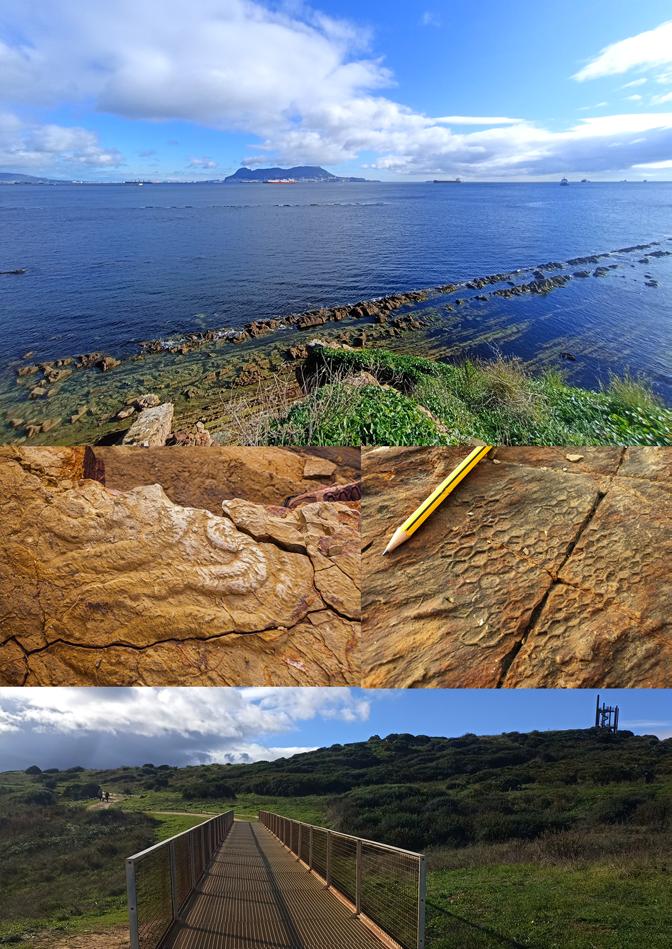
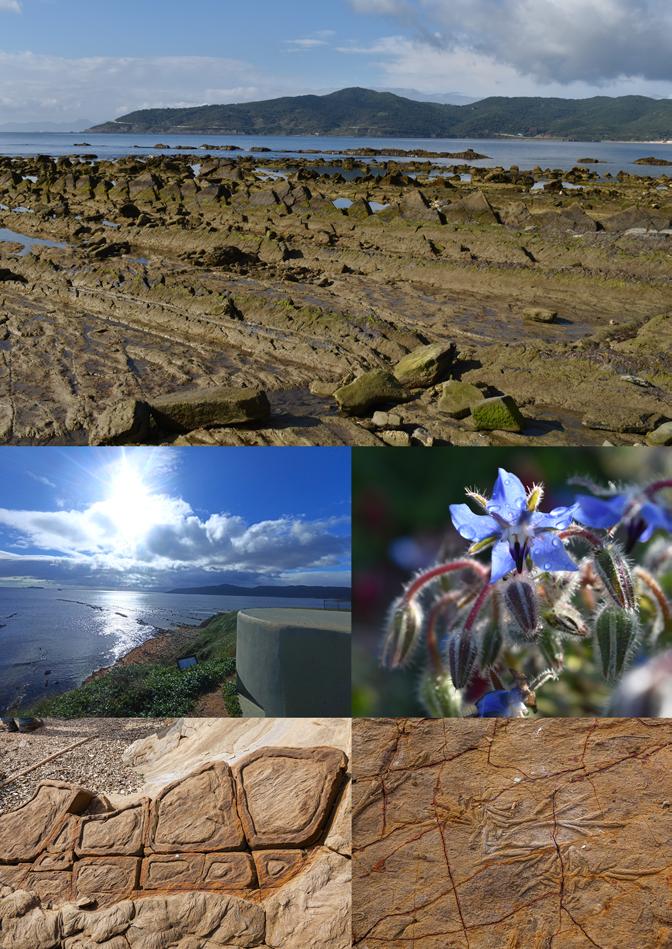
El parque del Centenario, con una extensión de 11 hectáreas cuenta con valiosos elementos del patrimonio histórico y cultural de la ciudad de Algeciras.
Se encuentra dentro de los límites de la «Reserva de la Biosfera Intercontinental del Mediterráneo Andalucía-Marruecos» esta reserva se extiende por algunos de los territorios más emblemáticos de las provincias de Cádiz y Málaga, en España y de las provincias de Tánger, Tetuán, Larache y Chefchaouen en el Norte de Marruecos.
De gran importancia, una parte de la costa la protagonizan los flysch, un fenómeno geológico creado hace millones de años a partir de los caprichos de una tierra que decidió retorcerse y jugar con las leyes de la física a su manera, producida por los movimientos tectónicos de las placas intercontinentales.
Un parque en el que podremos admirar flora, acebuche, alcornoque, aulaga morisca, jerguen, quejigo y su fauna, como crustáceos Orchestia mediterránea y Tylos sardous, lagartijas, culebra de collar, murciélago común, rata parda, correlimos, charranes y garzas entre otras, ya que su situación hace que sea un lugar importante para la observación del paso de las aves migratorias, así como de los cetáceos, y una espléndida visión de la costa del continente vecino. Al lado izquierdo nos acompaña el Chinarral que posee arenas finas y aguas tranquilas al abrigo de una pequeña ensenada. El fondo de sus aguas es en gran parte rocoso destacando varios arrecifes a unos metros de la costa conocidos como Las Hermanas, muy peligrosos para la navegación, y a la derecha
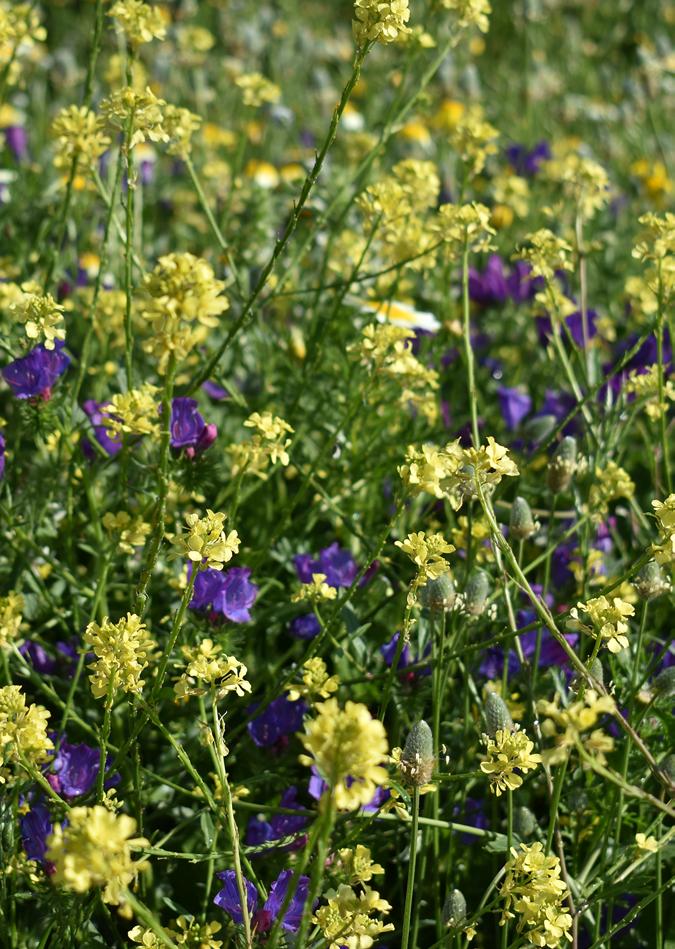
de la ensenada de Getares se encuentra la playa de Getares cuyas arenas, de fino grosor, proceden principalmente de las aportaciones de los numerosos arroyos estacionales que desembocan en la zona y en particular del río Pícaro que formó en el pasado una marisma y una flecha dunar.
Para nuestra ruta es necesario llevar ropa adecuada al terrero y a la climatología, iniciaremos este sendero visitando en la entrada del parque el Centro de Interpretación de la Reserva de la Biosfera Intercontinental del Mediterráneo «Estrecho de Gibraltar».
Al borde de la costa nos encontraremos con cuatros miradores donde tomaremos algunas fotos de las espectaculares vistas, a escasos metros, en el área de descanso, observaremos los flysch y escucharemos la explicación de cómo se formaron. Con suerte podremos observar algún delfín danzando en las aguas de la Bahía de Algeciras y obsequiarnos con algunas de sus saltos.
Adelantando nuestros pasos, retrocederemos en el tiempo visitando lugares históricos del parque como son la torre almenara del siglo XVI, ruinas del fuerte de San García, nidos de ametralladores y bunker.
Antes de continuar subiremos a la Torre mirador de hierro desde donde podremos tener una visión de 360º de la ciudad y su entorno.
Finalizaremos el sendero en la entrada del parque, donde podremos disfrutar de un refresco o café en sus instalaciones.

Gibraltar
Enjoy breath taking views across 3 countries and 2 continents, explore Gibraltar’s fascinating history and be introduced to our most famous inhabitants, the Barbary macaques – the only free roaming monkeys in Europe!
Price: £69 per person.
Highlights
Europa Point and Lighthouse. Upper Rock Nature Reserve.
Pillars of Hercules Monument.
Windsor Suspension Bridge. O’Hara’s Battery (top of Rock 424m). Skywalk.
Ape’s Den.
Great Siege Tunnels. Moorish Castle. …And many more.
What’s included?
Premium e-bike by Riese&Müller. Cycle helmet. Safety instructions.
Entrance fee into the Nature Reserve. An official tour guide. Bottled water.
DURATION:
3 hours. Suitable for everyone over 155 cm, over 12 years old and capable of riding a bicycle.
Gibraltar
Disfrute de las impresionantes vistas de 3 países y 2 continentes, explore la fascinante historia de Gibraltar y conozca a nuestros habitantes más famosos, los macacos de Berbería, ¡los únicos monos que se desplazan libremente en Europa!
Precio: £69 por persona.
Puntos destacados
Punta de Europa y el Faro
Reserva Natural Upper Rock (Parte superior del peñon)
Monumento de las Columnas de Hércules
Puente colgante de Windsor
Bateria de O’Hara (parte superior del peñon - 424m).
El Skywalk
Guarida de los monos
Gran túneles de asedio
Castillo Arabé. …y muchos más
¿Qué está incluido?
Alta calidad E-bike de Riese&Müller. Casco de bicicleta
Instrucciónes de seguridad
Entrada a la reserva natural Guía oficial Agua embotellada.
3 horas. Adecuadas para todos los que midan más de 155 cm, tengan más de 12 años de edad y puedan montar en bicicleta.
Organized by: OTWO Magazine
Tel. +00350 22500799
info@otwomag.com
Transport available for groups.Check with us for your requirements.
OTWO is a facilitator on these packages. All activities are contracted directly between the respective centre operator and the client.
Organized by: OTWO Magazine
Tel. +00350 22500799
info@otwomag.com
Transporte disponible para grupos.
Consultenos si estás interesado.
OTWO es un mediador de estos paquetes. Todas las actividades se contratan directamente entre el operador y el cliente.
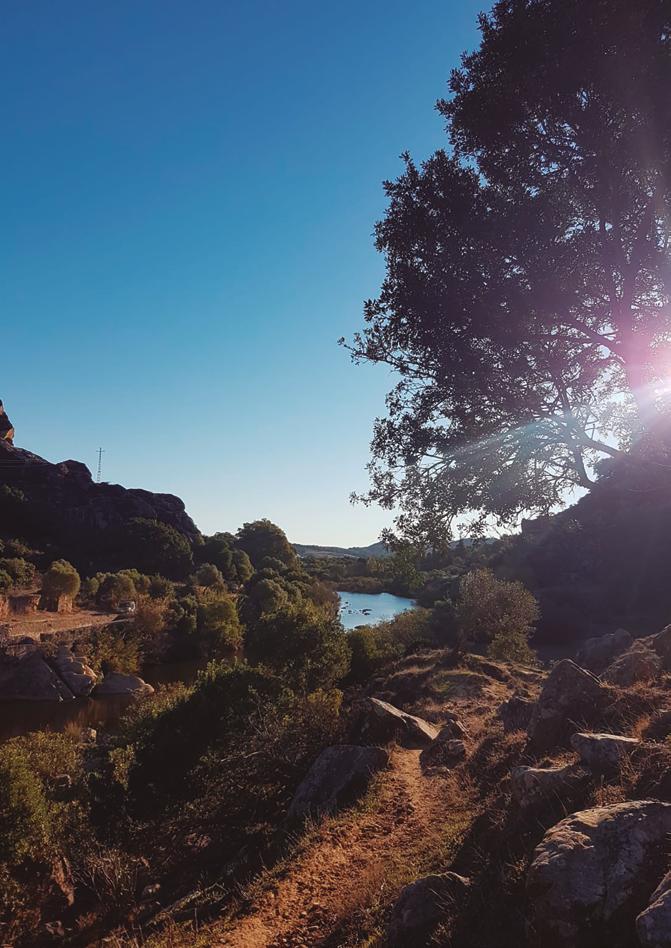
The Hozgarganta River, one of the many charms of the town of Jimena de la Frontera, the Roman road, the viewpoint of the Asomadillas, the Royal Pump Factory ... these are places that will be present on this route, thus enjoying, in addition to the nature of a few moments of historical and cultural content.
We will be able to see a diversity of birds and highlight the presence of wild orchids on our way in addition to the rich diversity of flora in the area.
Location: Municipal district of Jimena de la Frontera.
Duration: 3 hours approximately.
Distance: 9 km approx.
Starting point: Parking lot of Los Alcornocales campsite.
Clothing and footwear: comfortable clothing and footwear.
Authorization: No.
Route: Circular.
Difficulty: Low (suitable for children from 6 years old)
Date: Spring, autumn and winter.
Price: 10£.
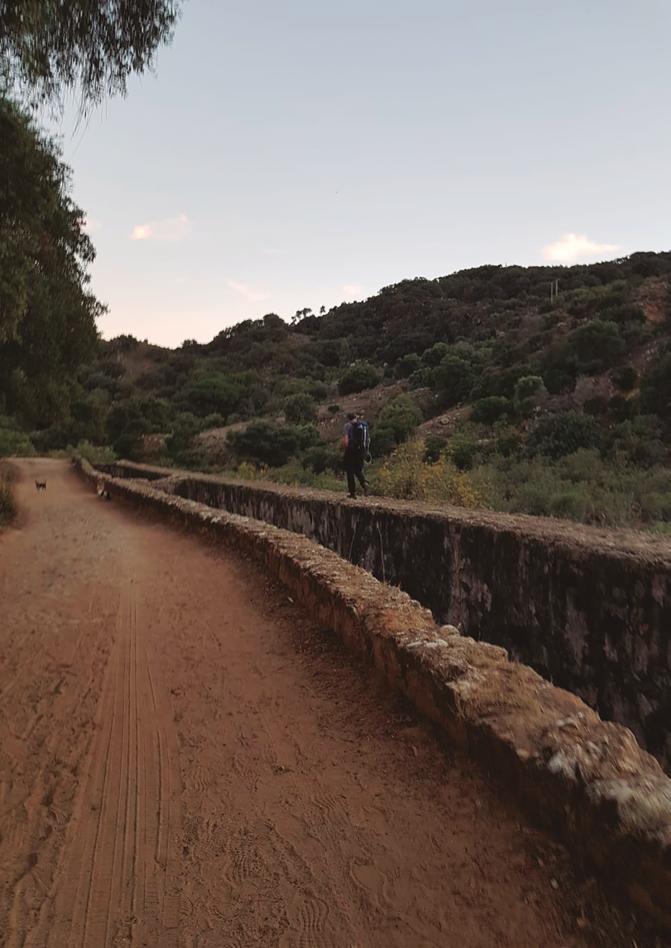
El Rio Hozgarganta, uno de los muchos encantos de la población de Jimena de la Frontera, la calzada romana, el mirador de las Asomadillas, la Real Fábrica de Bombas …son lugares que van a estar presentes en esta ruta, disfrutando así, además de la Naturaleza de unos momentos de contenido histórico y cultural.
Podremos avistar diversidad de aves y destacar la presencia de orquídeas silvestres en nuestro camino además de la rica diversidad de flora de la zona.
Localización: Término municipal de Jimena de la Frontera.
Duración: 3 horas aproximadas.
Distancia: 9 km aproximados.
Lugar de partida: Aparcamiento del camping Los Alcornocales.
Ropa y calzado: vestimenta y calzado de campo
Autorización: No.
Ruta: Circular.
Dificultad: Baja (apta para niños a partir de 6 años).
Fecha: primavera, otoño e invierno.
Precio: 10£.
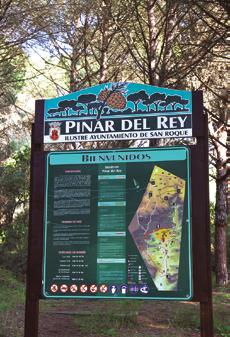
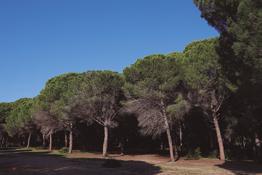
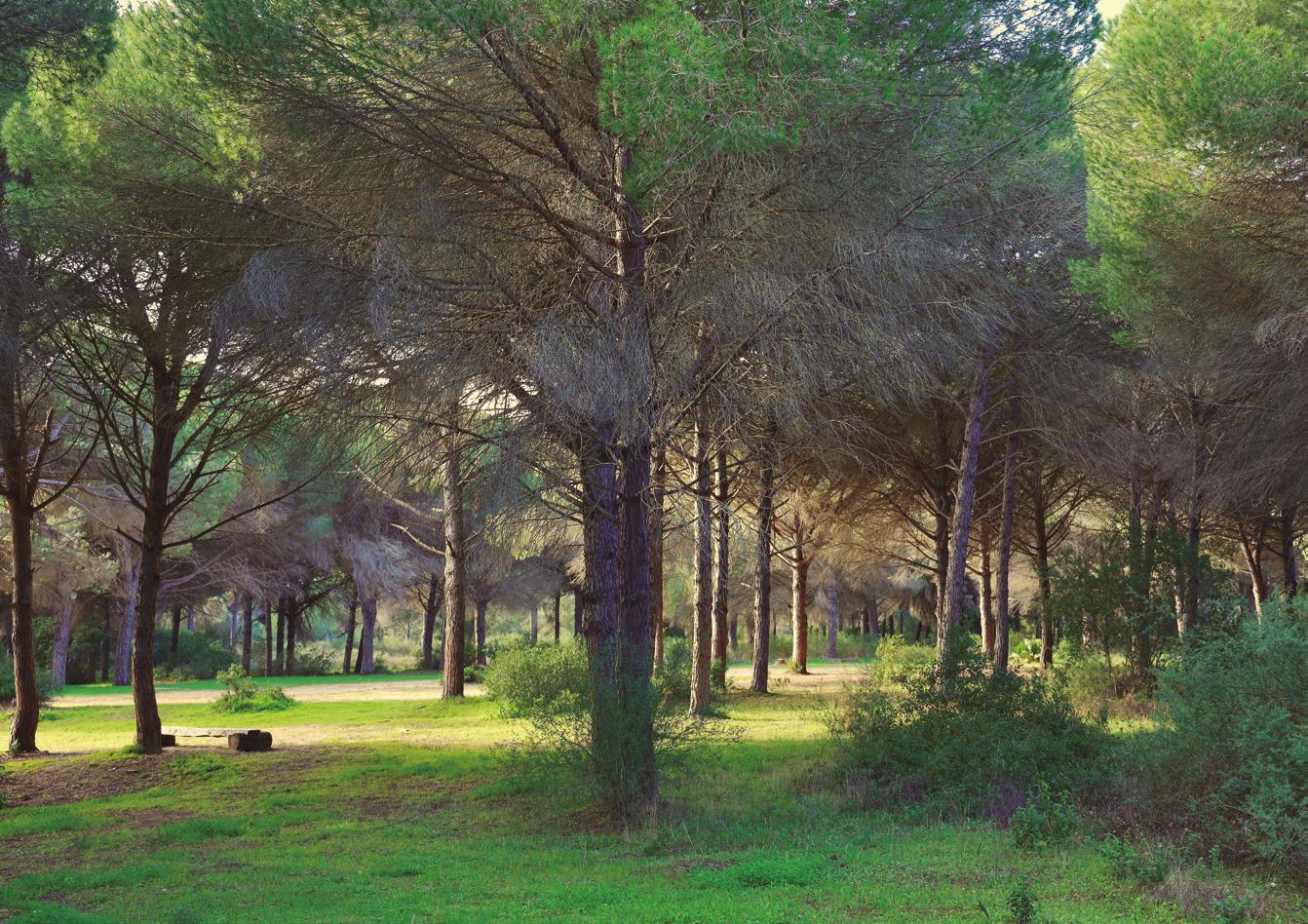
In the Natural Park Los Alcornocales, the Pinar del Rey is located between the municipalities of San Roque and Castellar de la Frontera, in Cadiz.
Its origin dates back to 1800, this place was chosen to plant pine trees (Pinus Pinea) brought from Vejer de la Frontera, and thus obtain wood for the construction of ships.
It currently consists of a recreational area with a picnic area and barbecues, the Alhaja stream, the Nature Classroom and a botanical garden. In addition, there are two trails: El Cerro del Águila and Tajo del Pajarraco.
A peculiar place, with a mild climate, and a migratory bird route. Its environmental conditions make it a paradise for flora. We can even see some plants that only occur in northern Spain and the Canary Islands. We will walk through a mixed forest, with cork oaks, gall oaks, poplars, alders and ash trees, with a wide variety of botanical species, some of them endangered. In addition, of course we will discover its rich and varied fauna.
In addition, the Pinar del Rey, was part of a sandy seabed settlement, so we can easily find shells and marine pieces.
Discover the cumulative effect that nature has, the nuances in you had never noticed, the calm that offers a place with so much magic.
To begin the activity we will leave the car at the end of the parking lot of the recreational area of Pinar del Rey (San Roque), it is important to bring water, sunscreen, (optional mat for floor and camera).
Duration: 2 to 3 hours.
Minimum and maximum number of participants: 5 to 15 people
Dates: Any season of the year. Maximum distance: 2 kilometers.
Important: Notify any food allergies.
Prices: 20£ /person. (RC and accident insurance included).
En el Parque Natural Los Alcornocales, se ubica el Pinar del Rey entre los términos municipales de San Roque y Castellar de la Frontera, en Cádiz.
Su origen se remonta a 1800, este lugar fue elegido para plantar ejemplares de pinos piñoneros (Pinus Pinea) traídos desde Vejer de la Frontera, y obtener así madera para la construcción de navíos.
Actualmente consta de un área recreativa con una zona de picnic y barbacoas, el arroyo de Alhaja, el Aula de Naturaleza y un jardín botánico. Además, existen dos senderos: El Cerro del Águila y el Tajo del Pajarraco.
Un lugar peculiar, de clima suave, y paso de ruta de aves migratorias. Sus condiciones ambientales lo convierten en un paraíso para la flora. Incluso podemos ver algunas plantas que únicamente se dan en el norte de España y en las Islas Canarias. Recorreremos un bosque mixto, con alcornoques, quejigos, álamos, alisos y fresnos, con una extensa variedad de especies botánicas, algunas de ellas amenazadas. Y por supuesto descubriremos su rica y variada fauna.
Además, el Pinar del Rey, formó parte de un asentamiento arenoso de fondos marinos, con lo cual podremos encontrar fácilmente conchas y piezas marinas.
Descubre el efecto acumulativo que tiene la naturaleza, los matices en los que nunca te habías fijado, la calma que ofrece un lugar con tanta magia.
Para comenzar la actividad dejaremos el coche al final del aparcamiento de la zona recreativa del Pinar del Rey (San Roque), es importante llevar agua, protección solar, (opcional esterilla para suelo y cámara de fotos).
Duración: 2 a 3 horas.
Mínimo y máximo de participantes:. 5 a 15 personas.
Fechas: Cualquier estación del año. Distancia máxima: 2 kilómetros.
Importante: Informar de alergias alimenticias .
Precios: 20£ /persona.
(Seguro RC y accidentes incluidos),
Photographs: Juan Luis González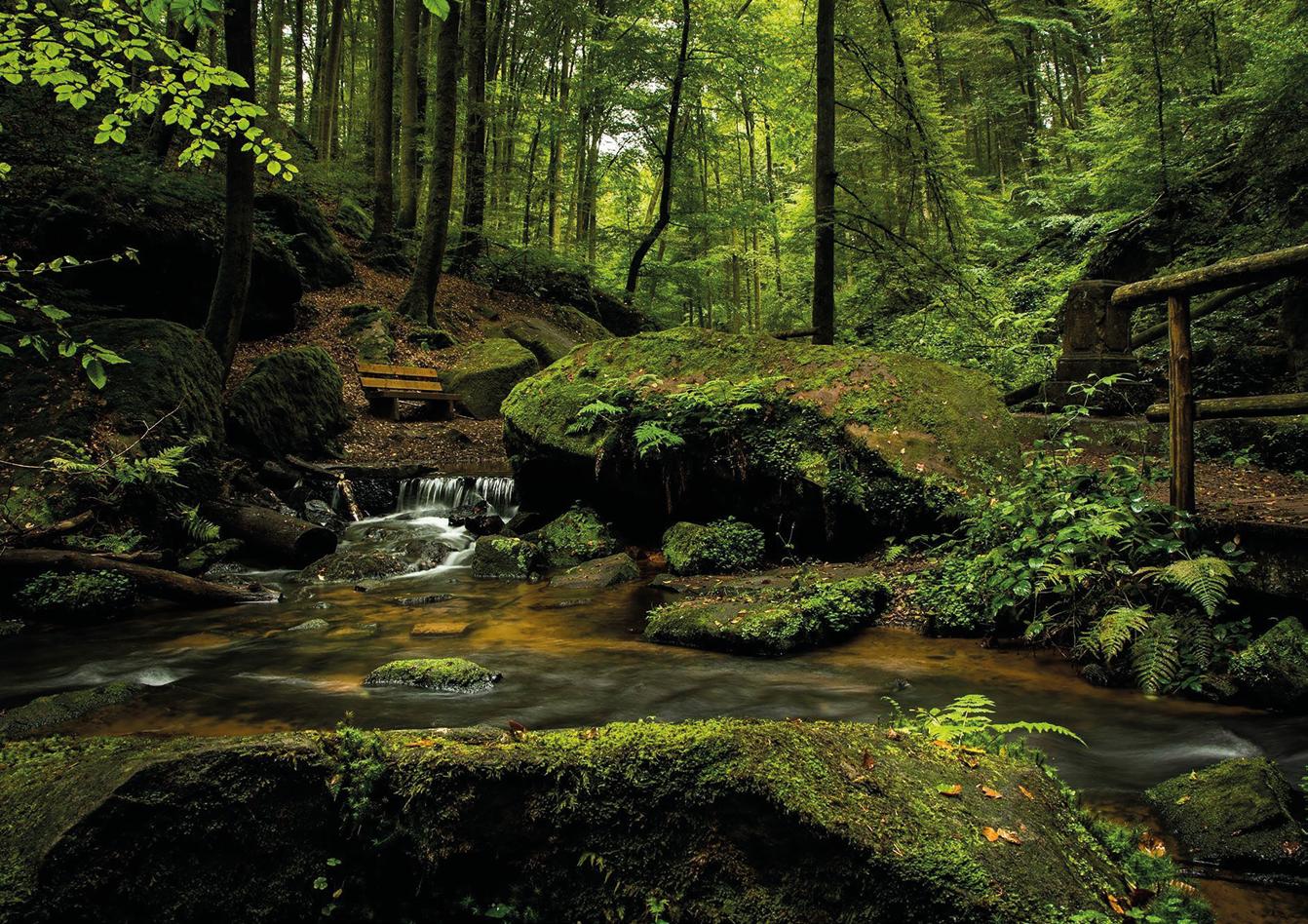
The treatment, cure, and care provided to deal with some evil or disease was known to the Greeks as therapeia. Our word “treatment” is derived from this. It is normal for someone to wonder how they will administer the forest to them if we add it. Will it be in pills, syrups, or serum? It doesn’t harm, so don’t worry. Even with all the humor, individuals who read us need to understand that we lead the individual to a total immersion in Nature, in some type of natural habitat, preferably woods.
Using the forest as therapy means that we will use the benefits provided by Nature as a way to intervene in people’s health. Not only in their physical health, but also in their mental and social health; even, for those who so wish, in their spiritual health.
Each of these people has a specific need, or a specific health problem, or a personal difficulty. Taking into account these personal needs, we will try to find the most concise way to repair it, doing it in a structured way.
The approach of the Forest Baths is always therapeutic. The professionals who are dedicated to the Forest Baths are trained to be able to collaborate with guarantees with health professionals, making available to the general public, to the Institutions, all the set of interventions that we have.
What are we talking about then? We are talking about promoting healthy lifestyles, those that improve our quality of life. We are talking about relieving the day-to-day stress in which we live. We are also talking about preventing or dealing with burnout, that which is caused by work and production. Finally, we talk about more specific interventions on the health of any person, always under supervision.
Los griegos llamaban therapeia al remedio, al tratamiento, a los cuidados para hacer frente a algún mal, a alguna enfermedad. De ahí viene nuestra palabra terapia. Si le añadimos lo del bosque es normal que alguien pueda pensar, ¿cómo me van a dar el bosque?, ¿en pastillas, jarabes, lo tendrán en suero? No se preocupen, no duele. Bromas aparte, lo que tienen que saber los que nos lean es que llevamos a la persona a realizar una inmersión completa, mente y cuerpo, en la Naturaleza, en algún tipo de entorno natural, especialmente los bosques.
Usar el bosque como terapia significa que utilizaremos los beneficios que procuran la Naturaleza, como una forma de intervenir en la salud de las personas. No solo en su salud física, también en la mental y en la social; incluso, para los que así lo deseen, en la salud espiritual. Cada una de esas personas tiene una necesidad específica, o un problema de salud concreto, o alguna dificultad personal. Teniendo en cuenta estas necesidades personales trataremos de buscar la forma más concisa de repararlo, haciéndolo de manera estructurada.
El enfoque de los Baños de Bosque es siempre terapéutico. Los profesionales que nos dedicamos a los Baños de Bosque estamos formados para poder colaborar con garantías con los profesionales de salud, poniendo a disposición del público en general, de las Instituciones, todo el conjunto de intervenciones que tenemos.
¿De qué estamos hablando entonces? Hablamos de promover estilos de vida saludables, de eso que mejoran nuestra calidad de vida. Hablamos de aliviar el estrés del día a día en el que vivimos. Hablamos también de prevenir o hacer frente al burnout, ése que nos provoca el trabajo y la producción. Hablamos, por último, de intervenciones más específicas sobre la salud de cualquier persona siempre bajo supervisión.
